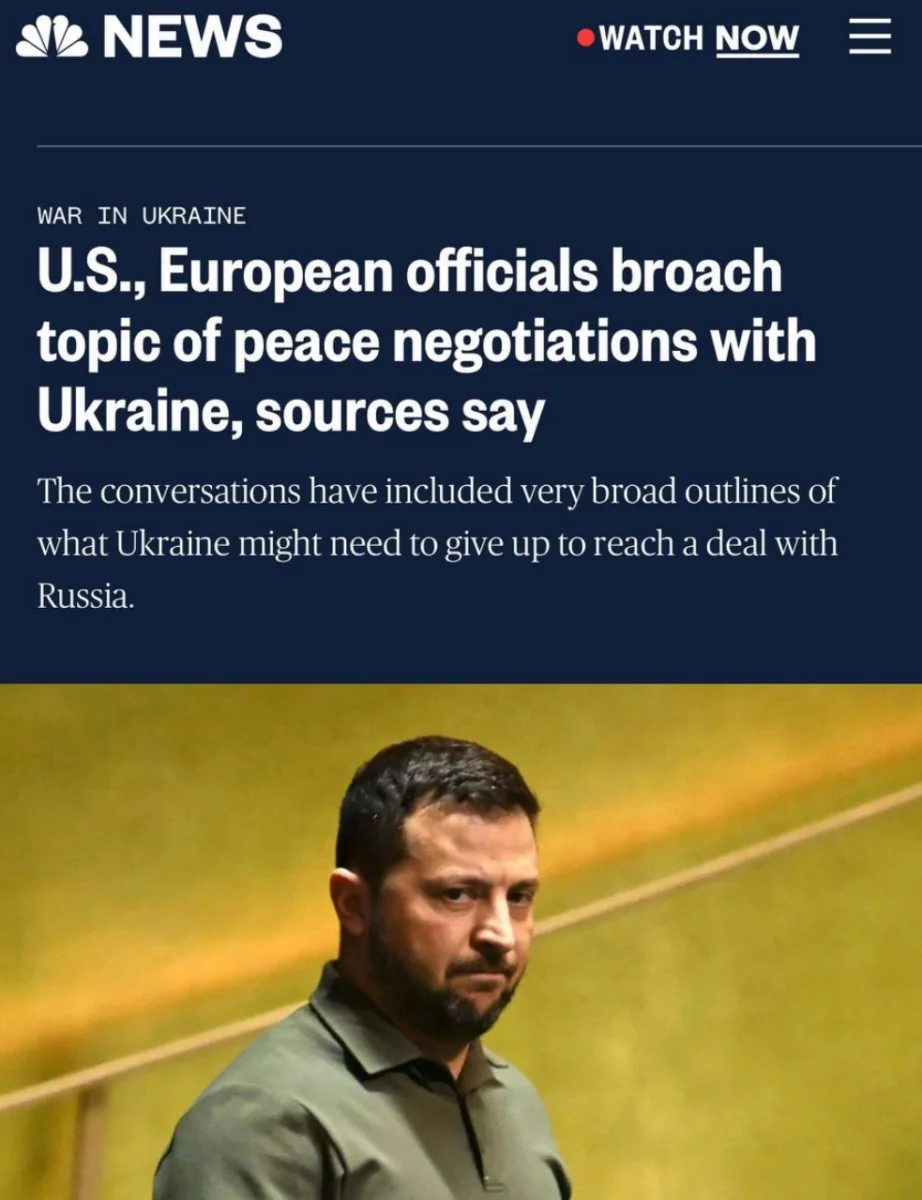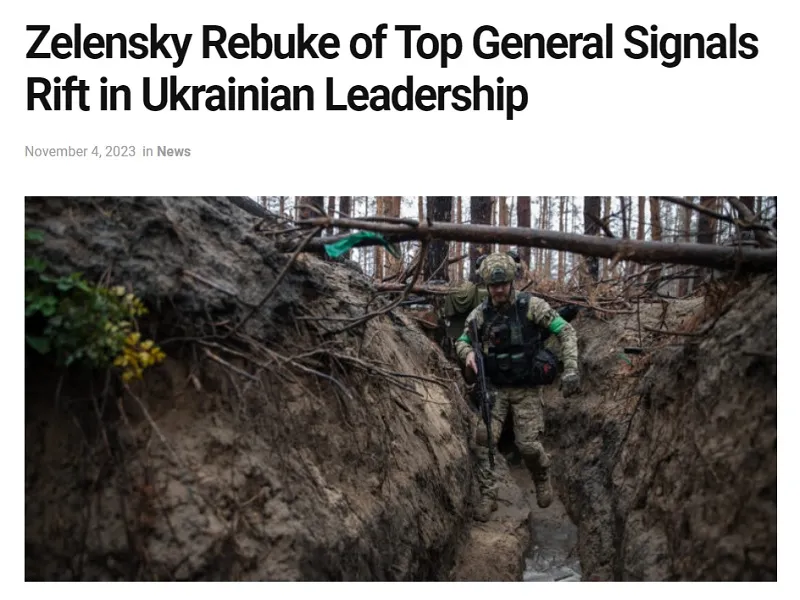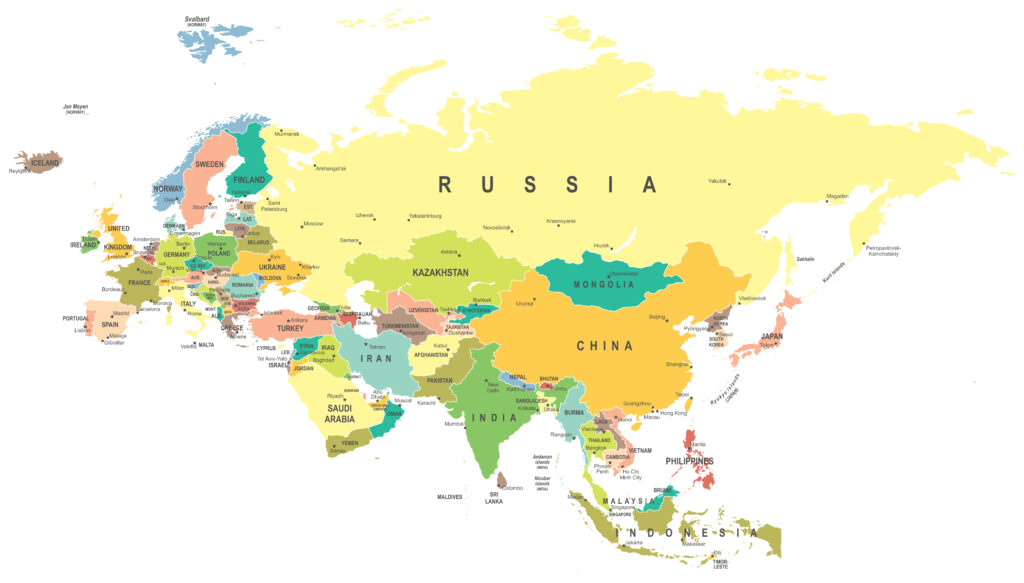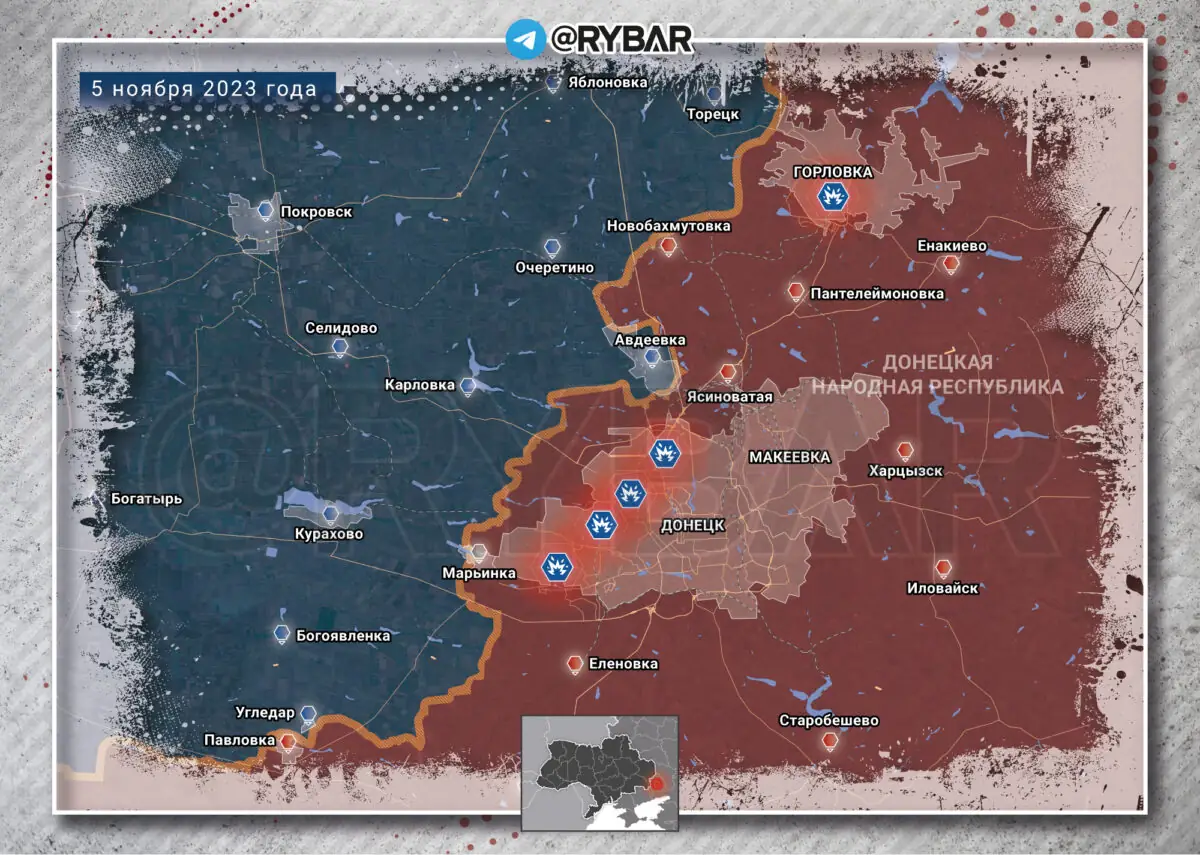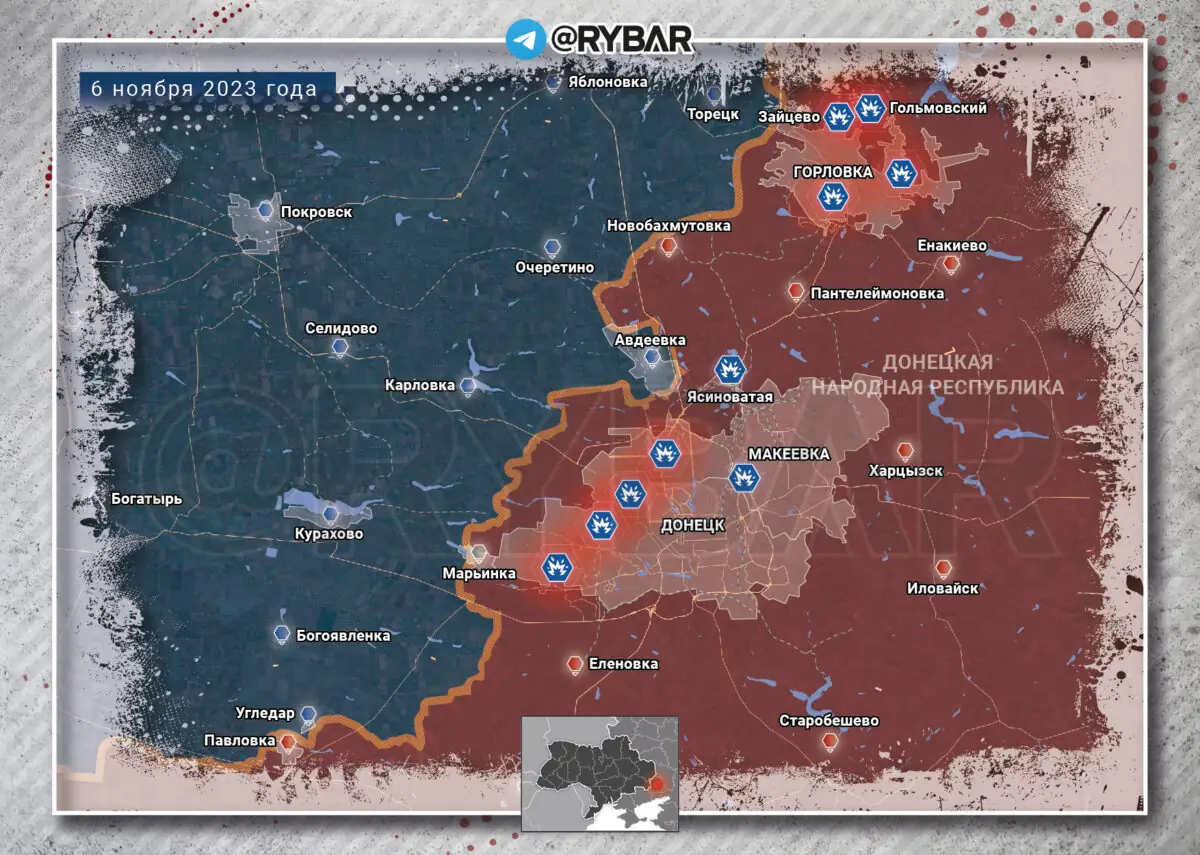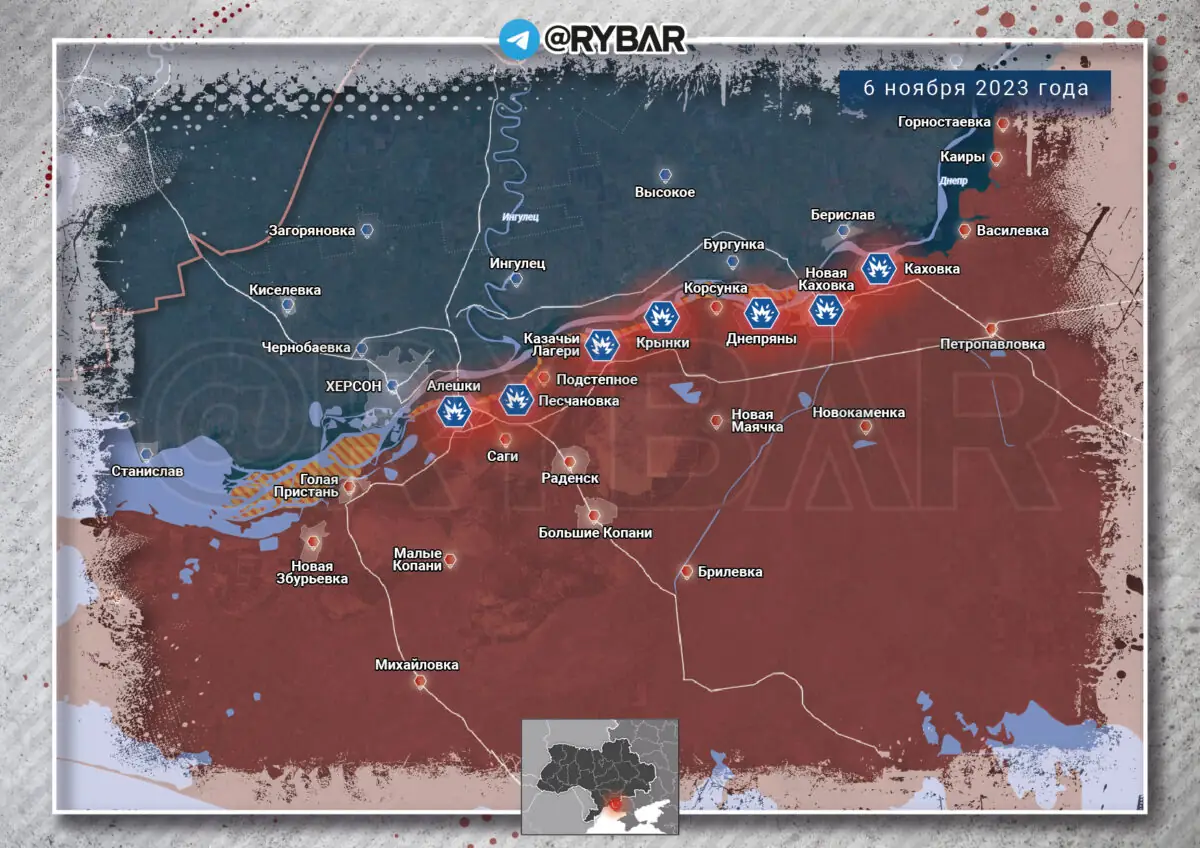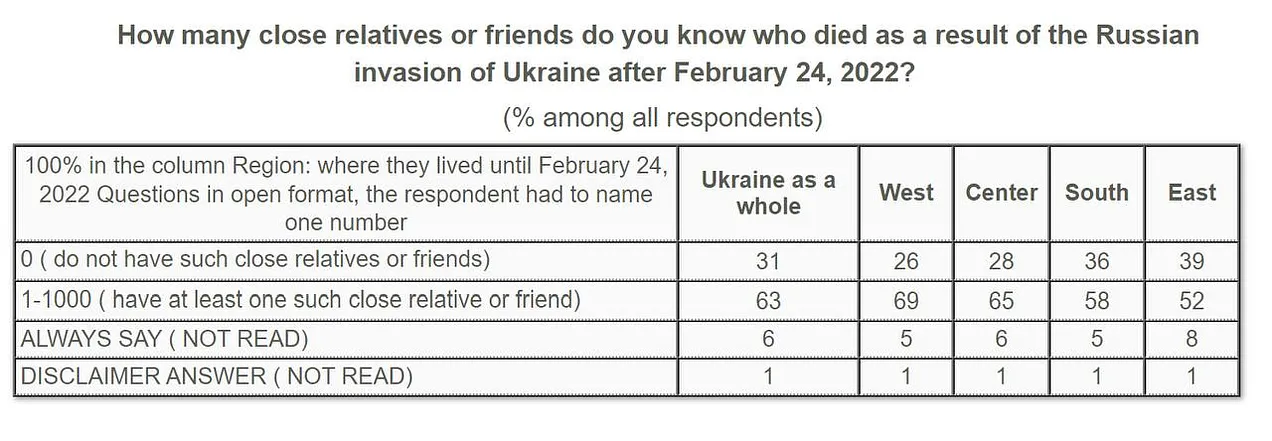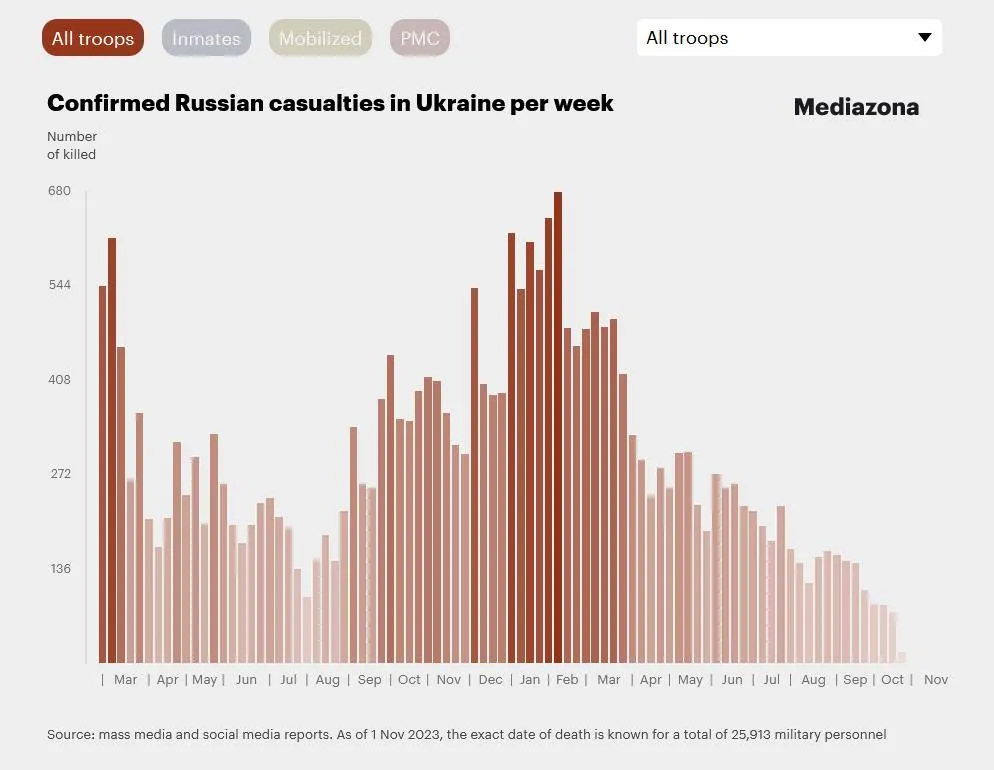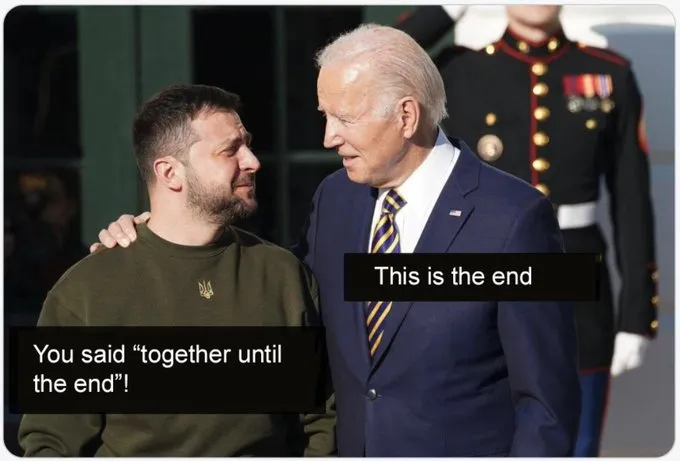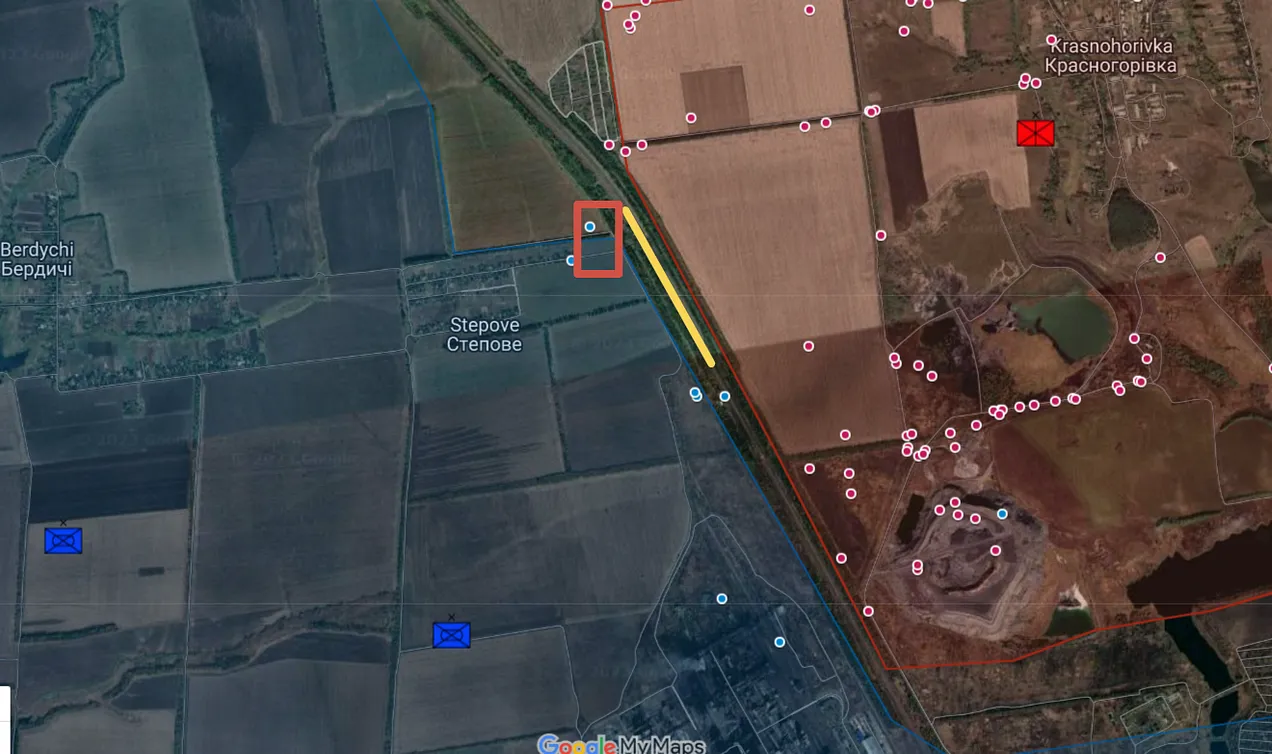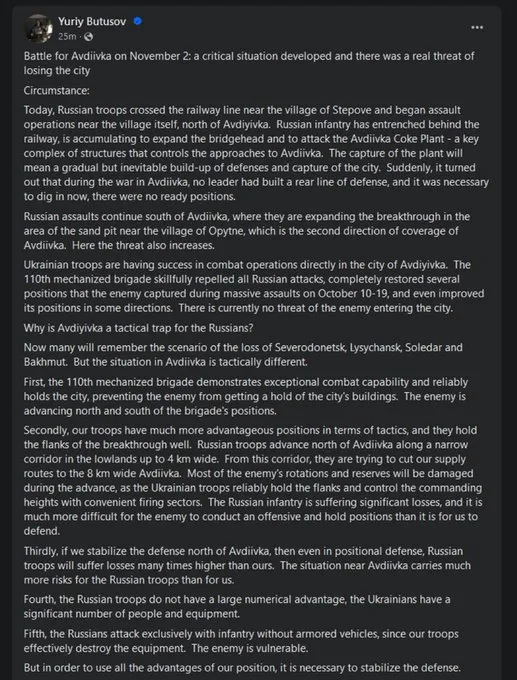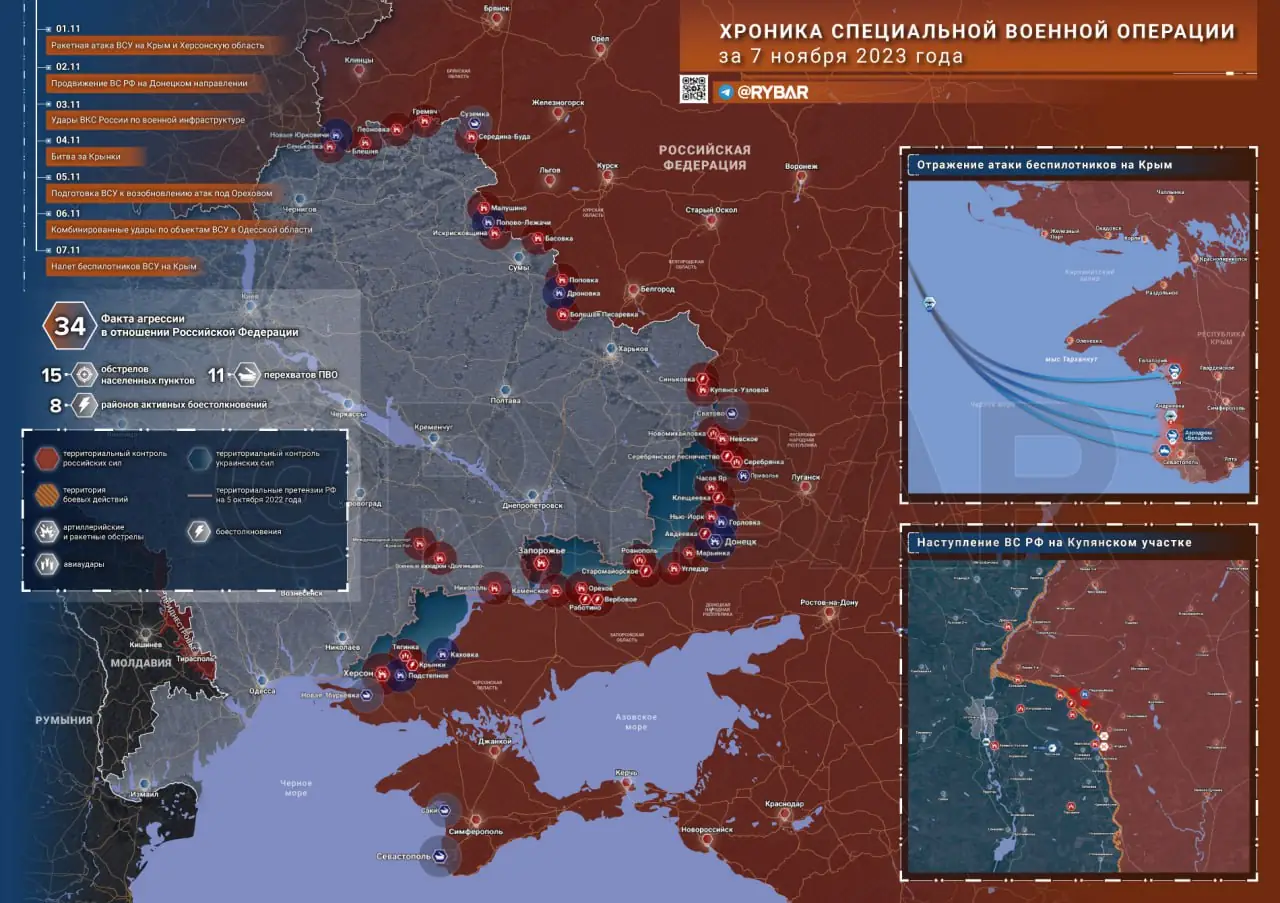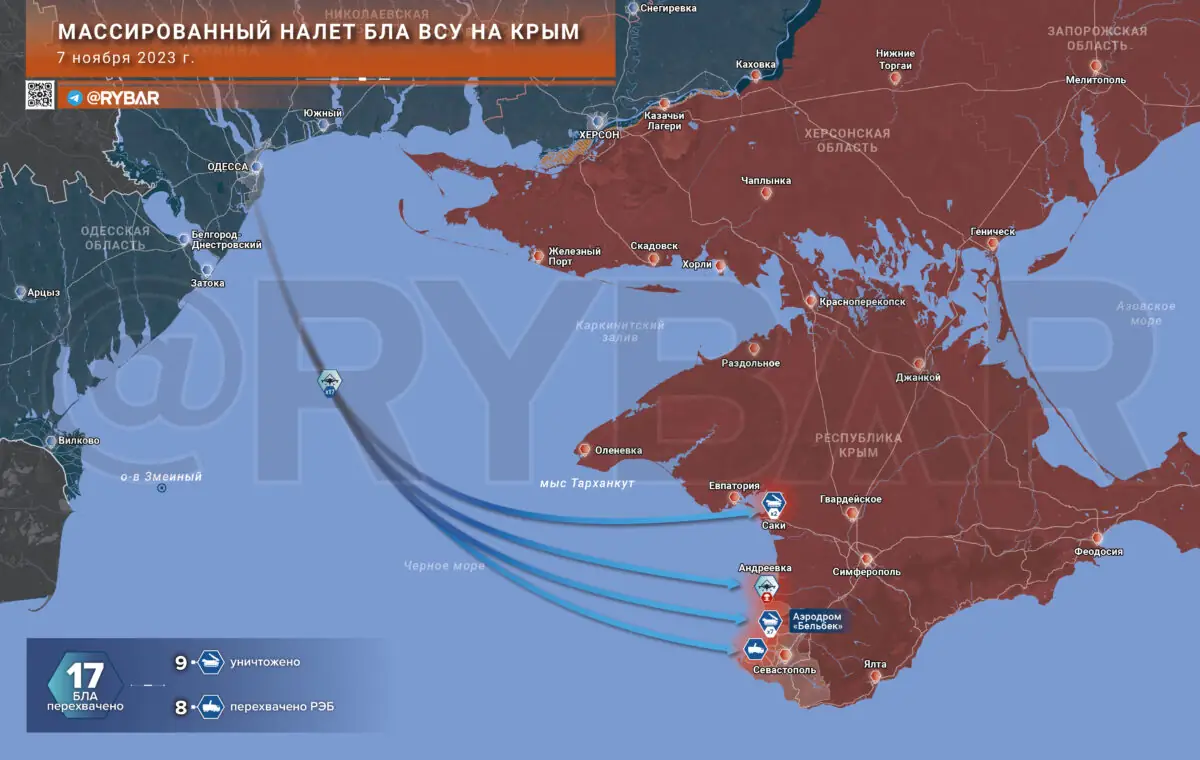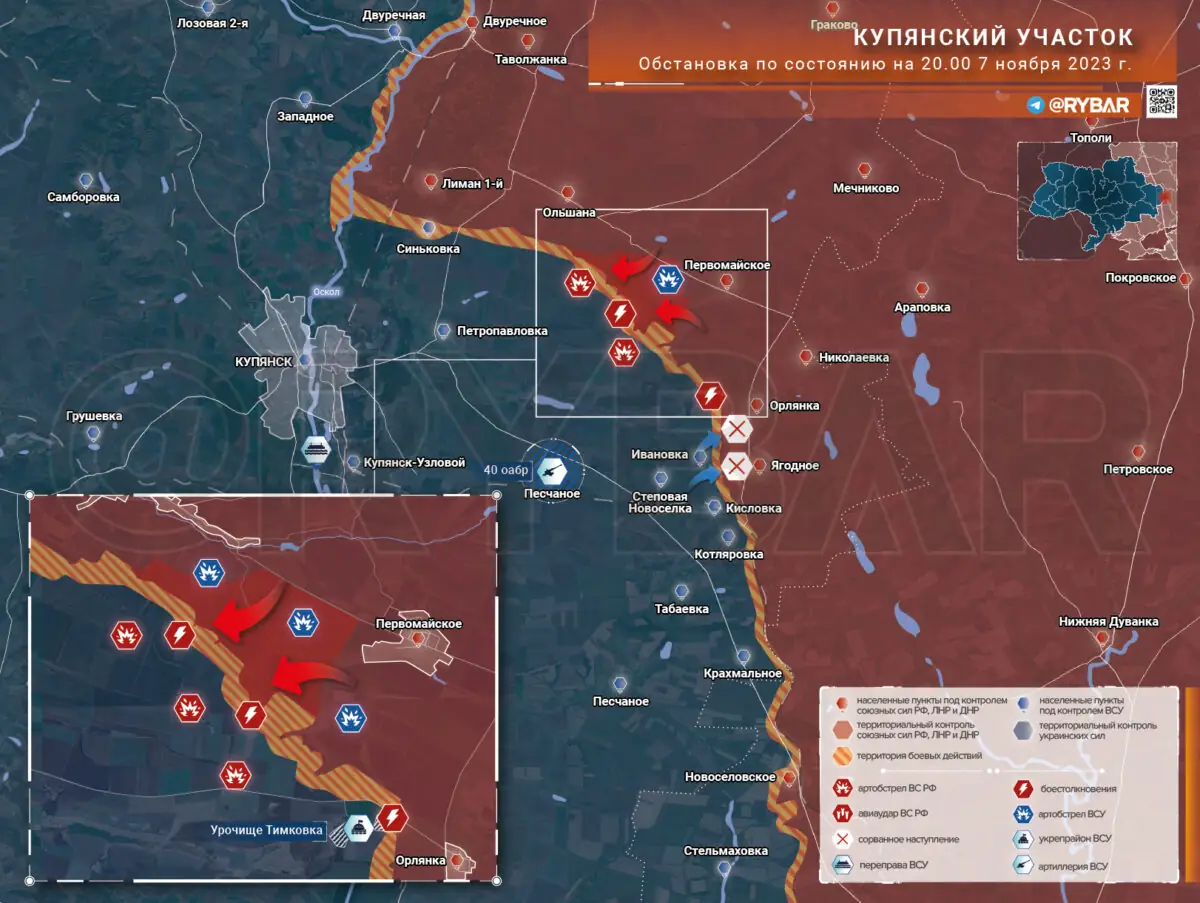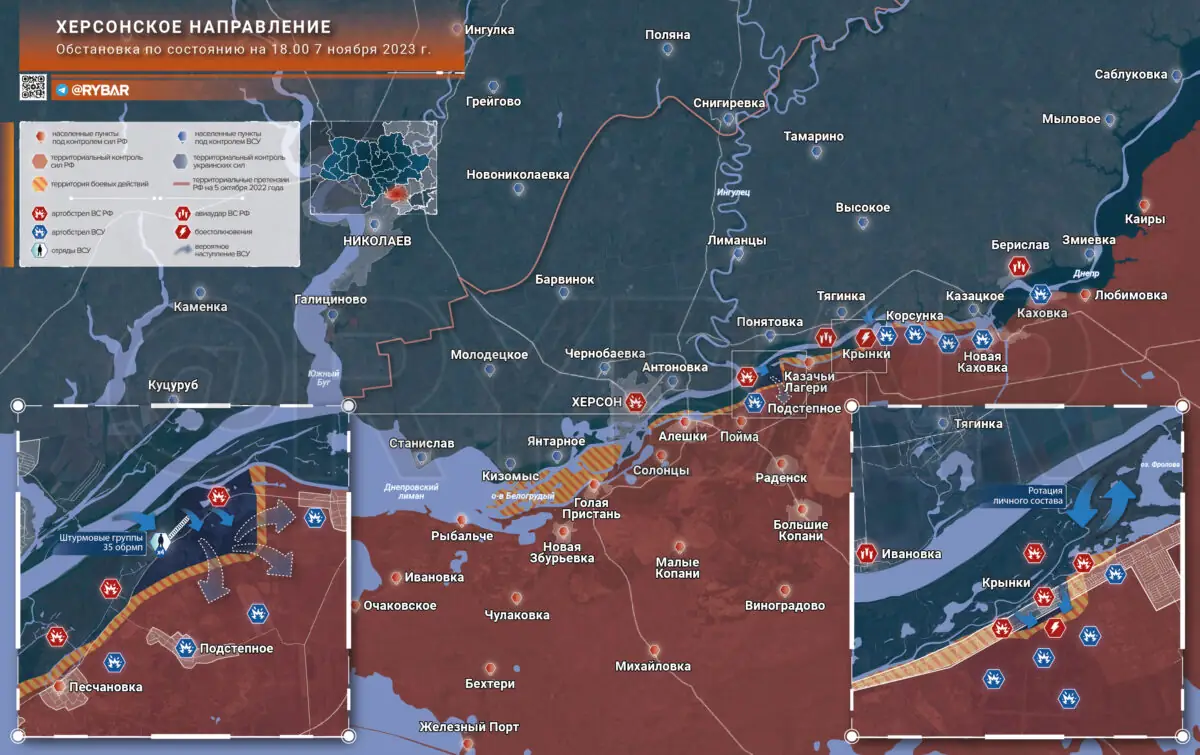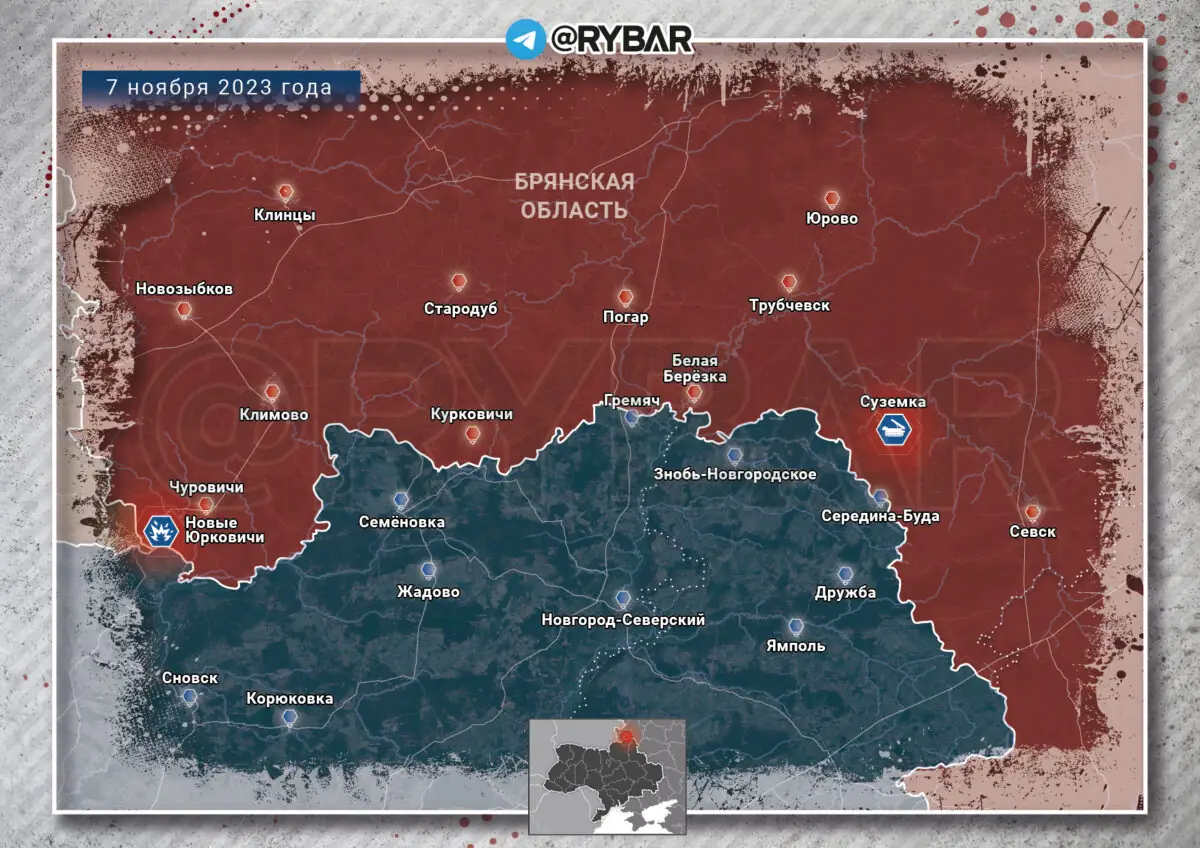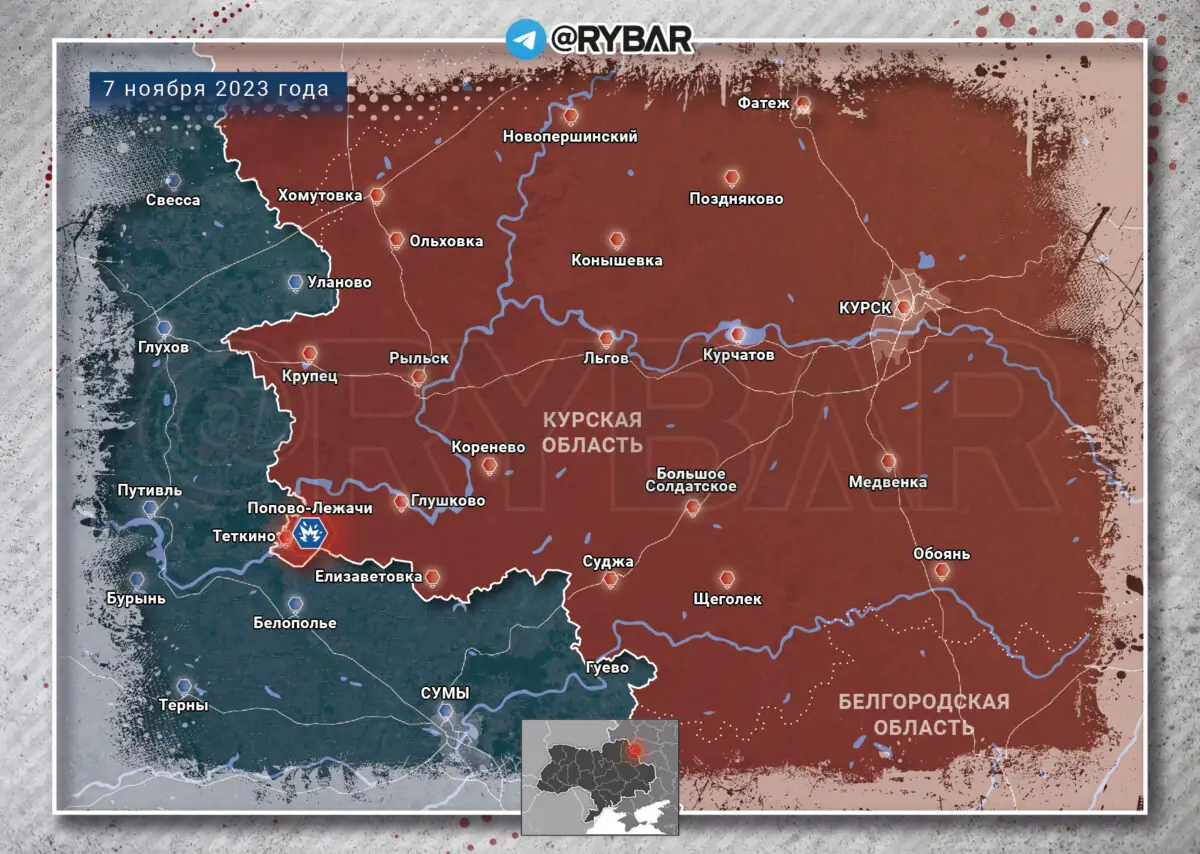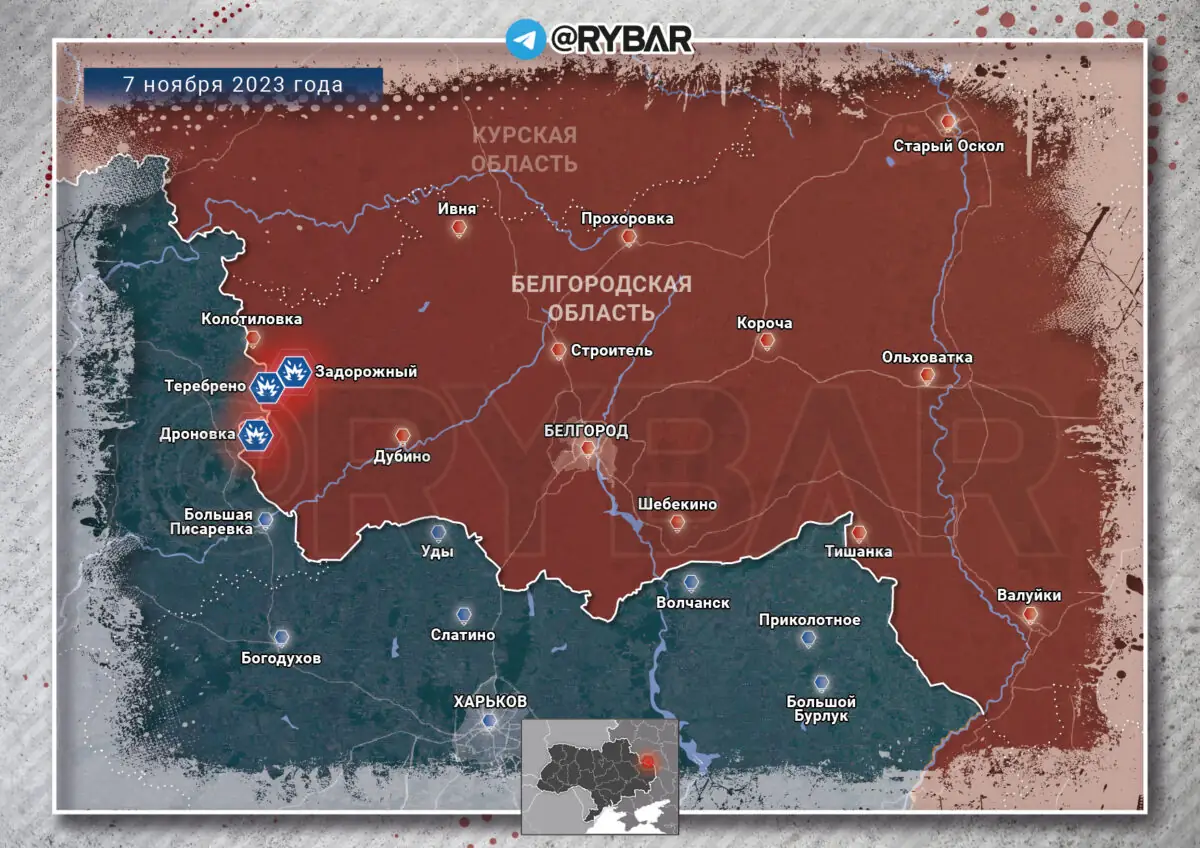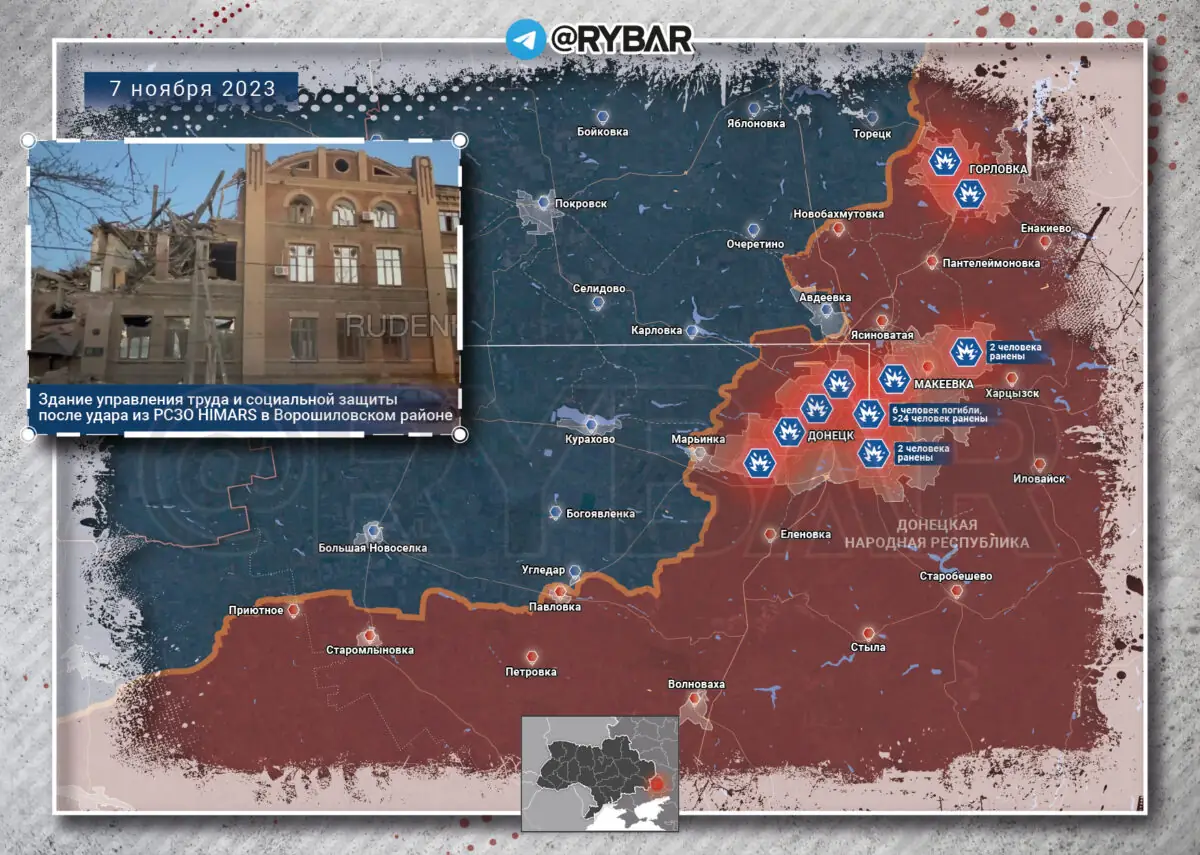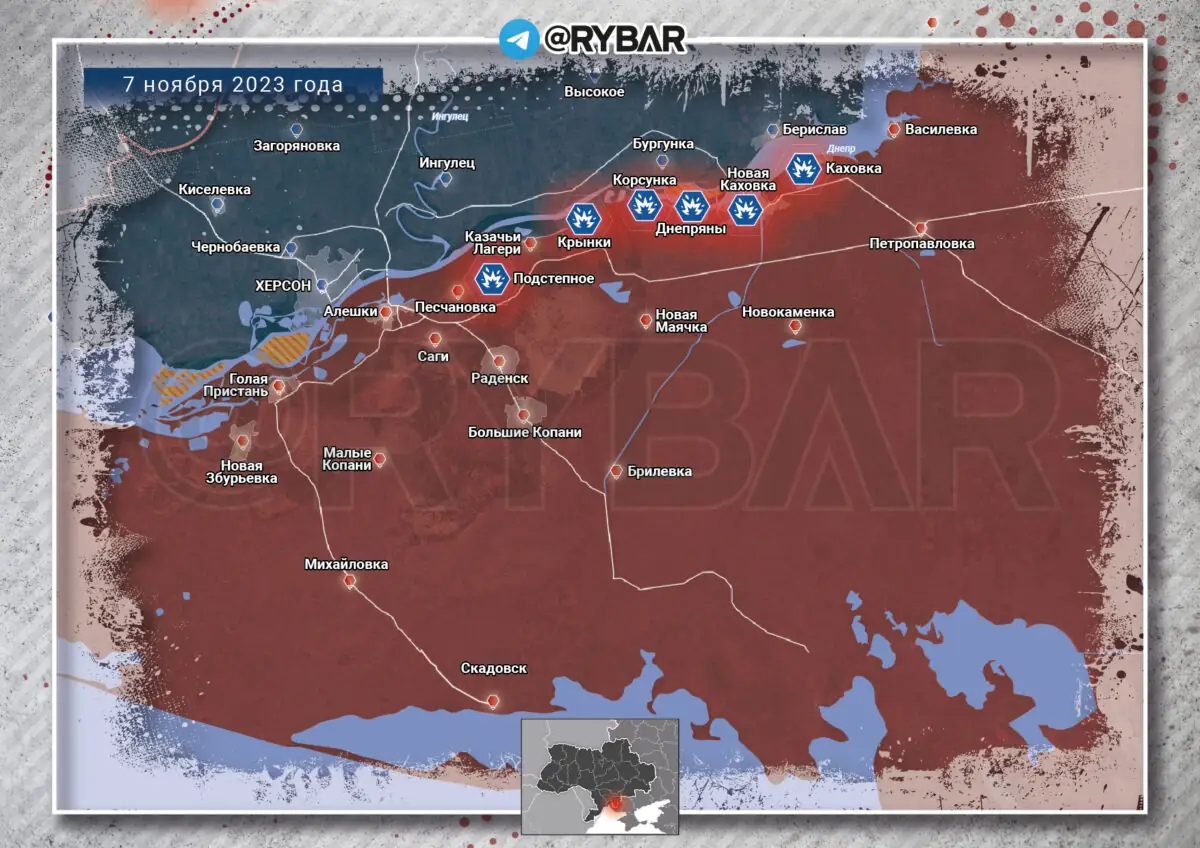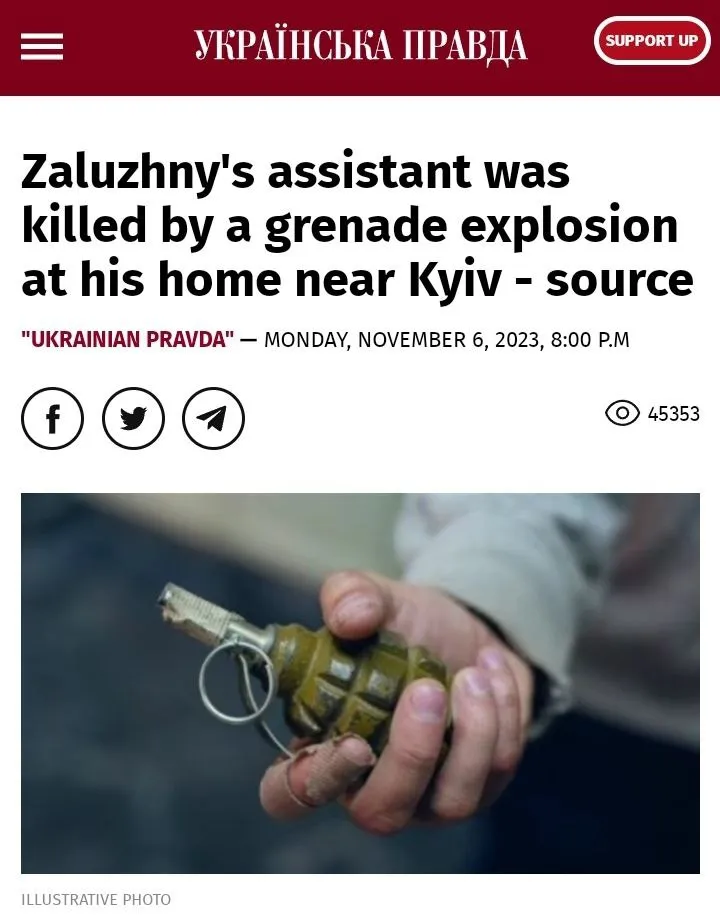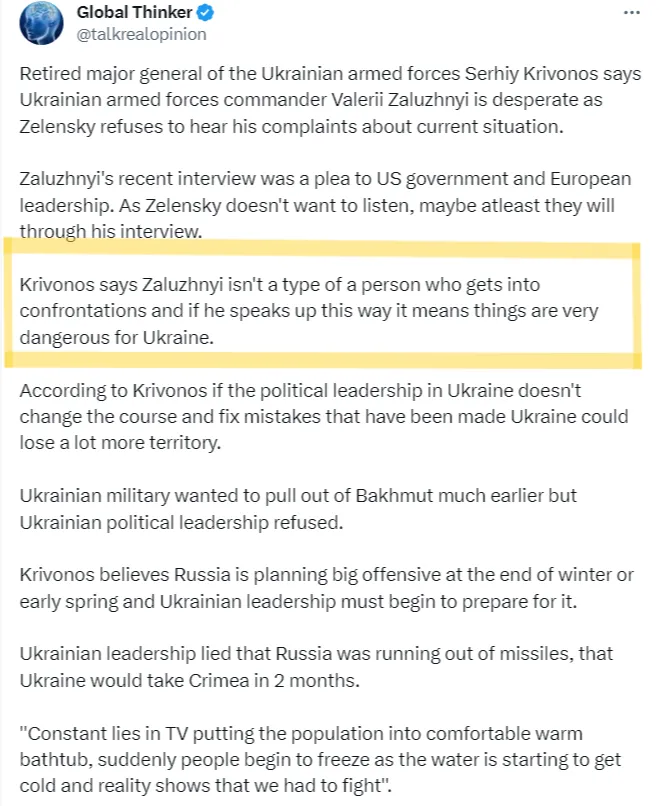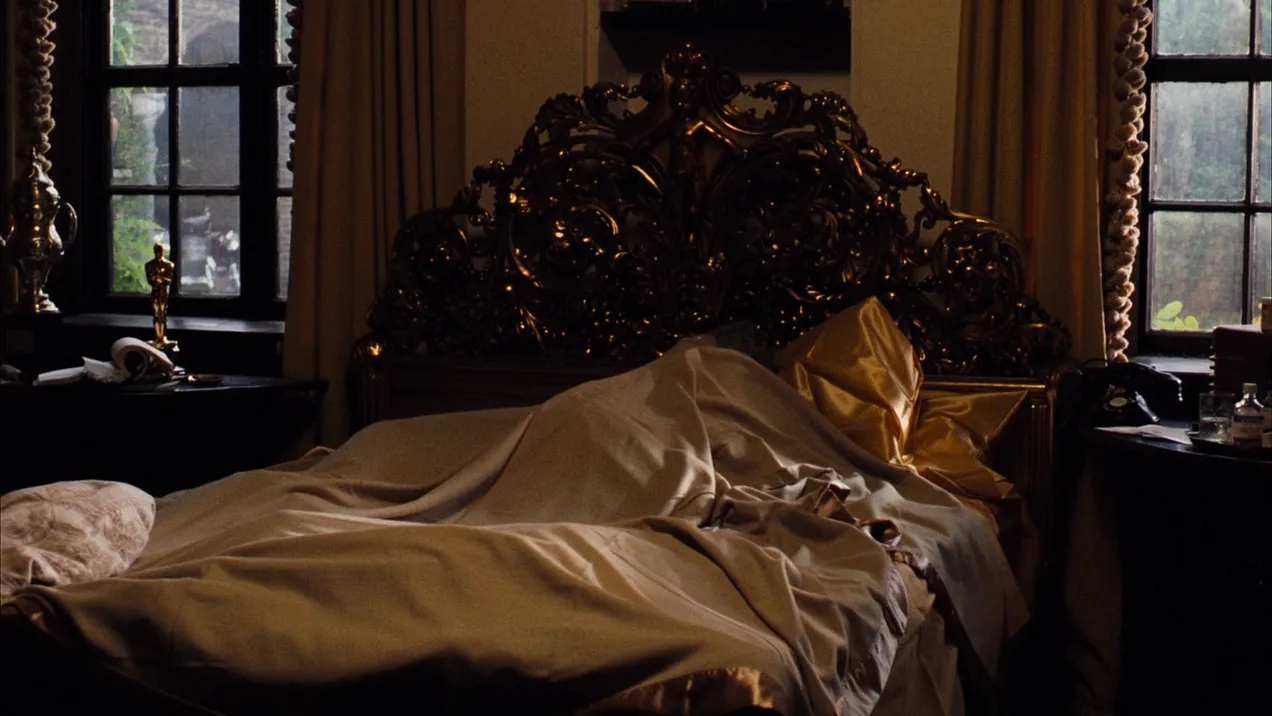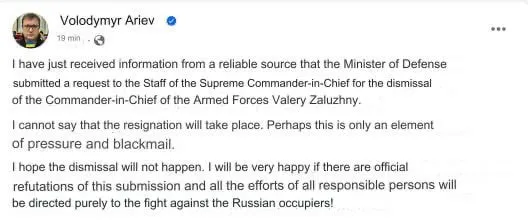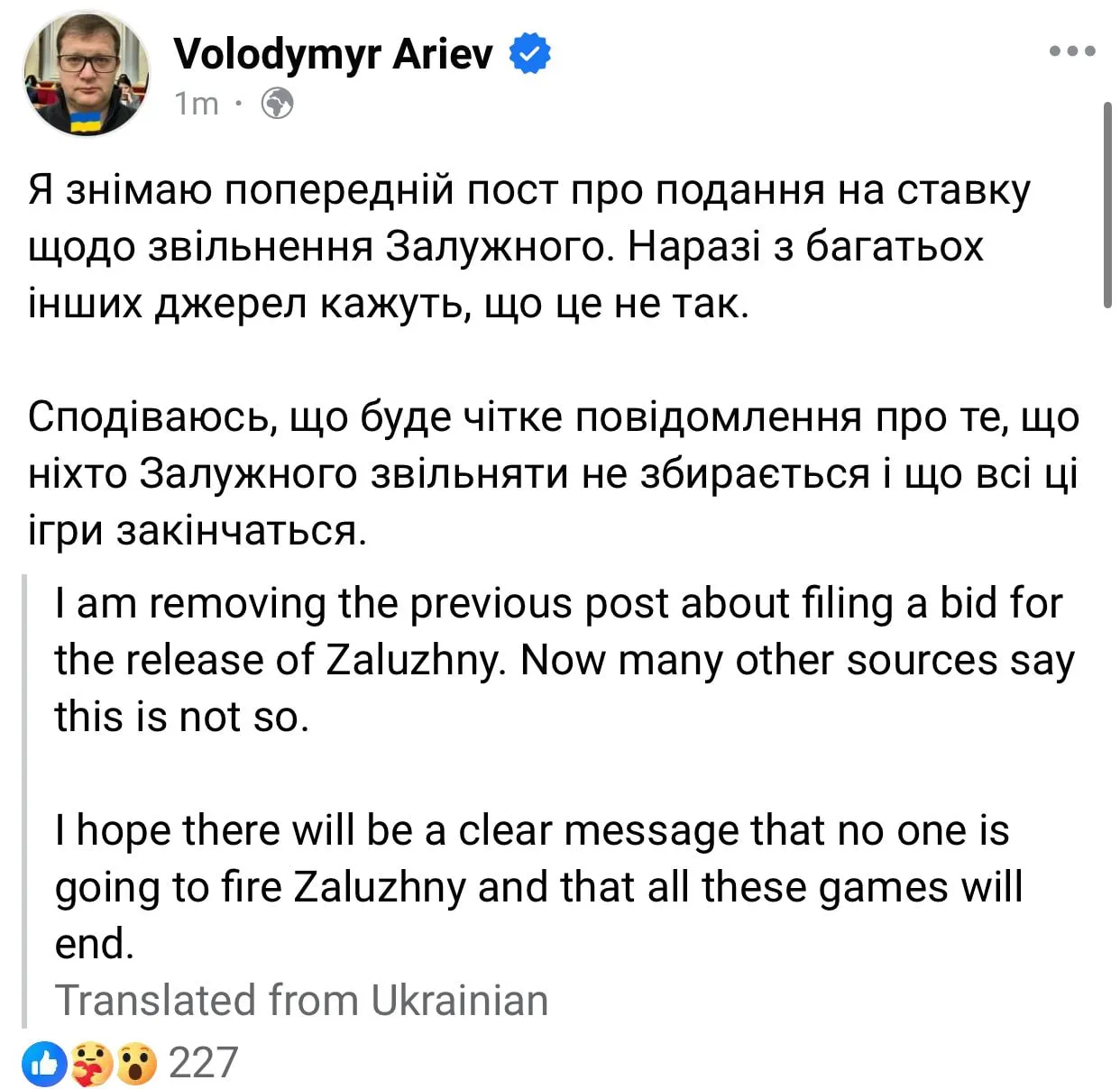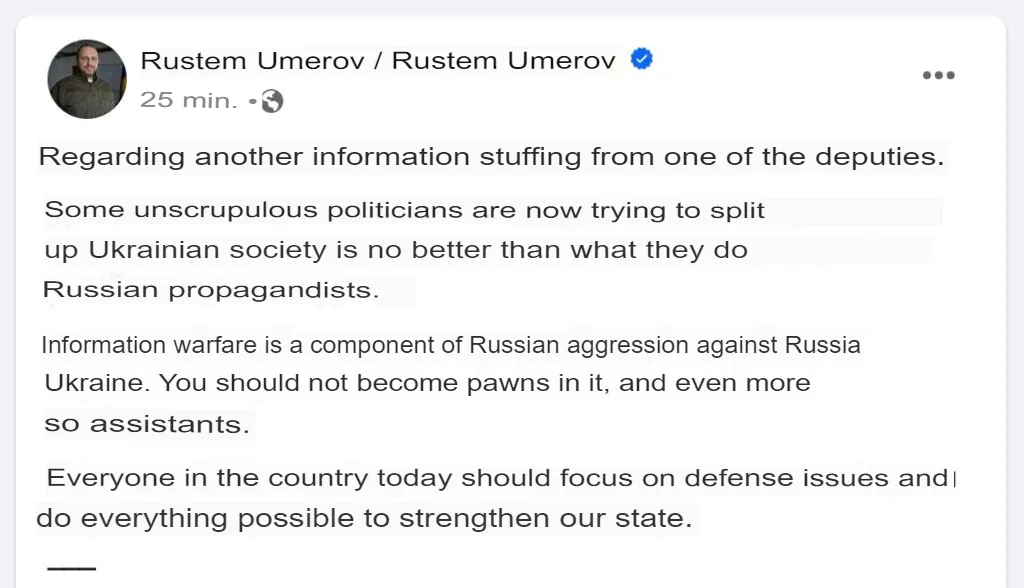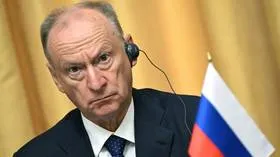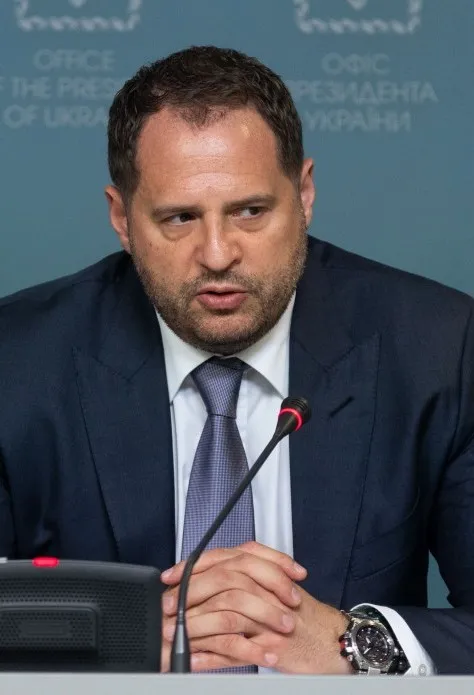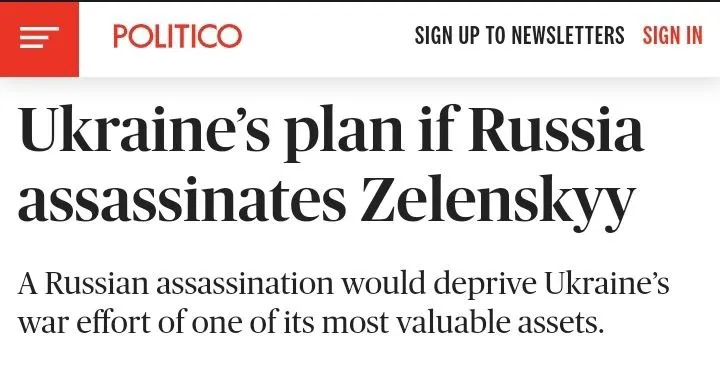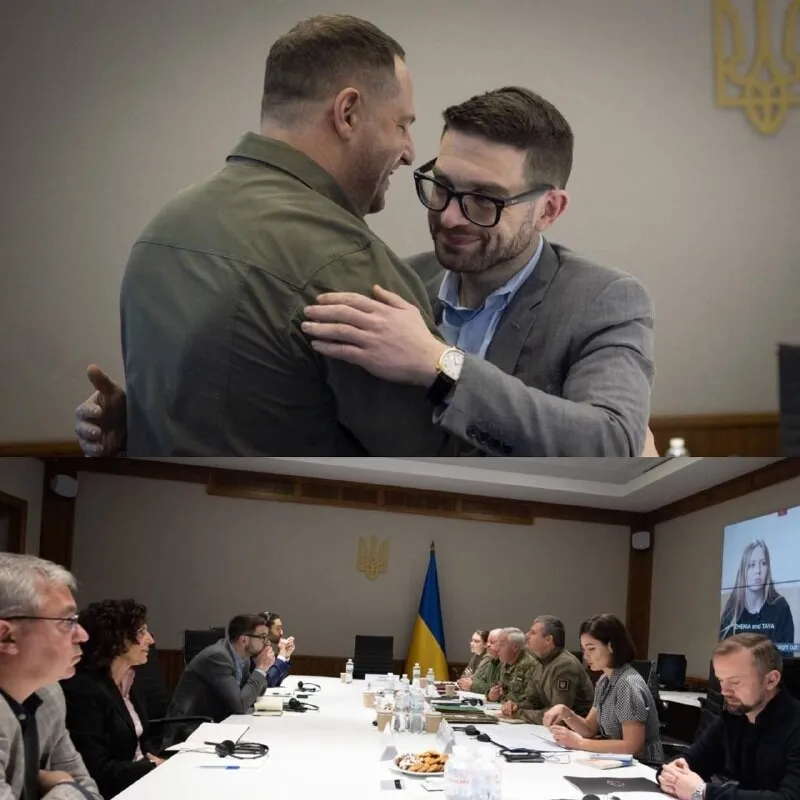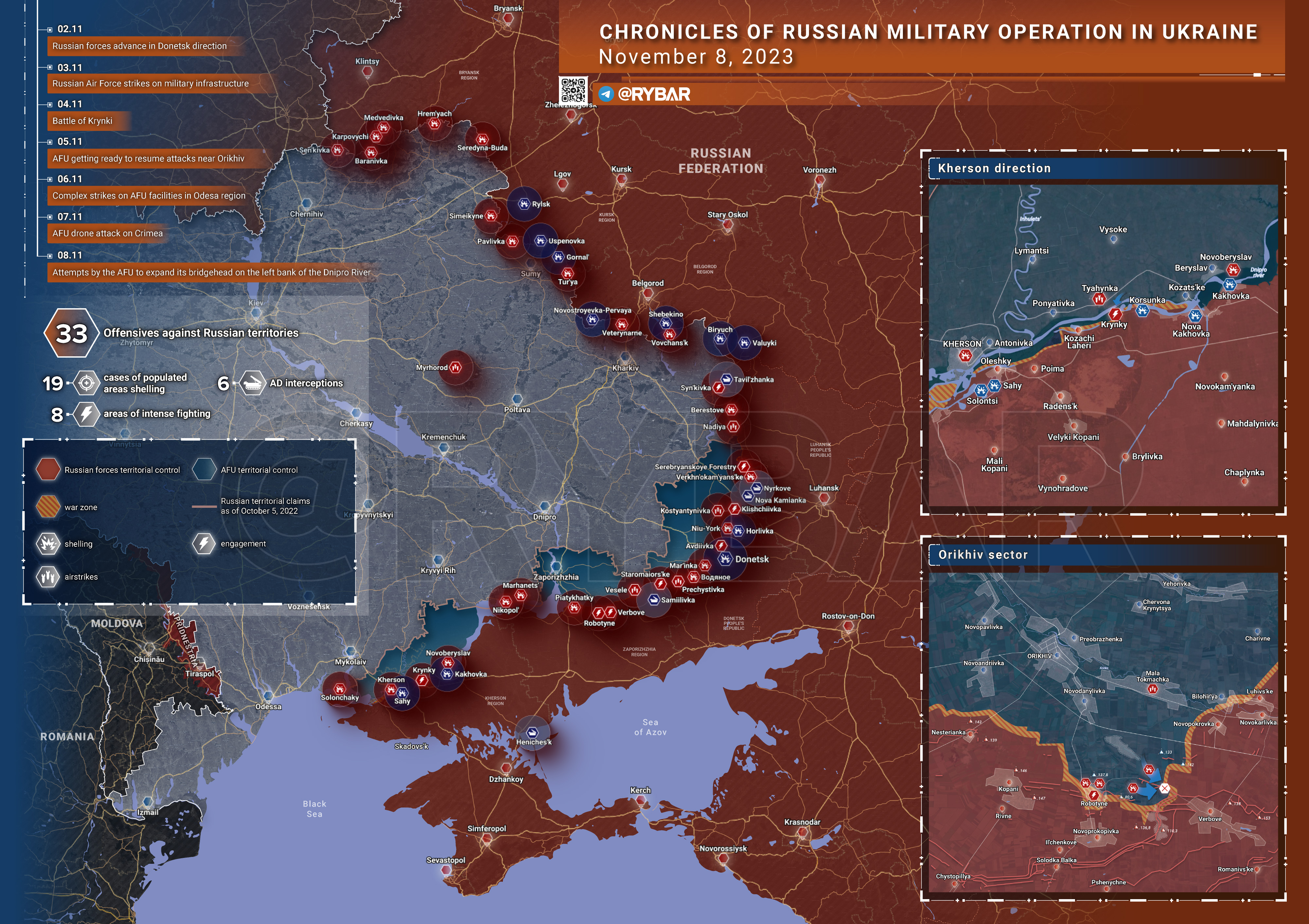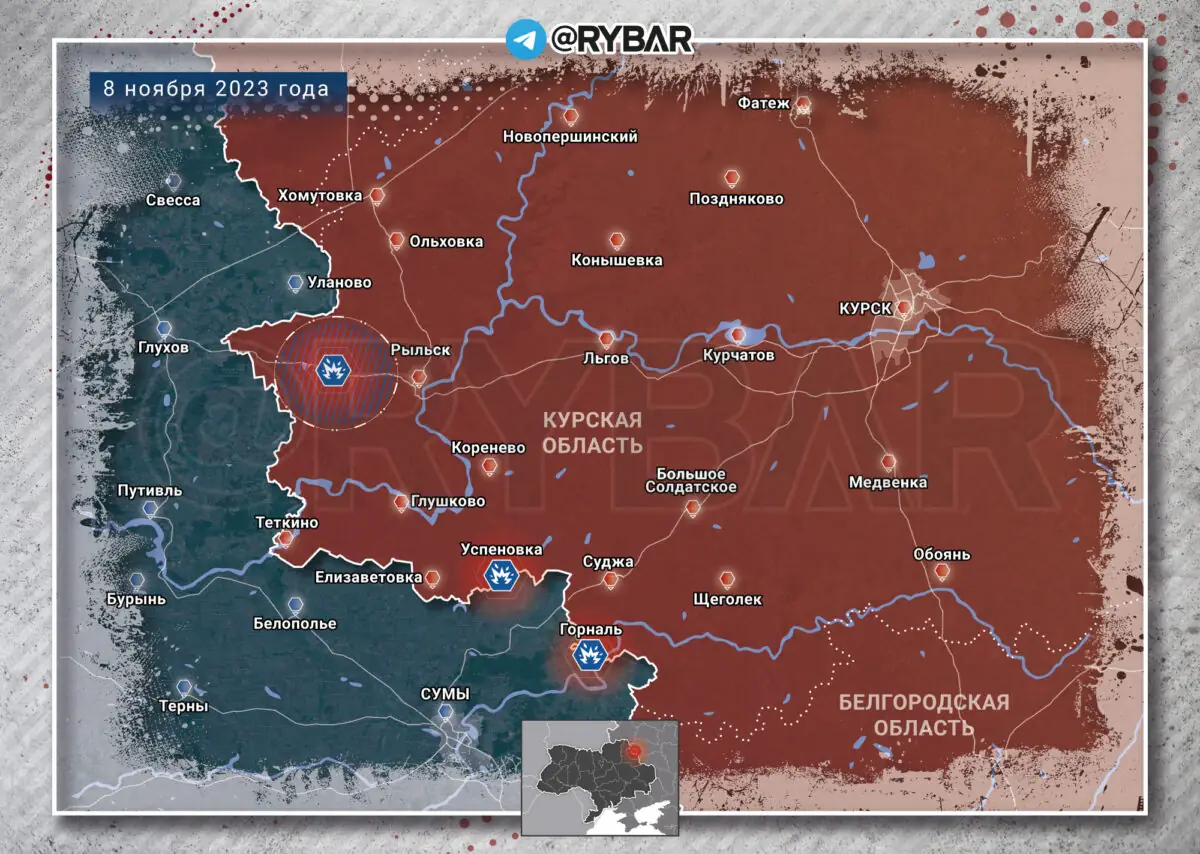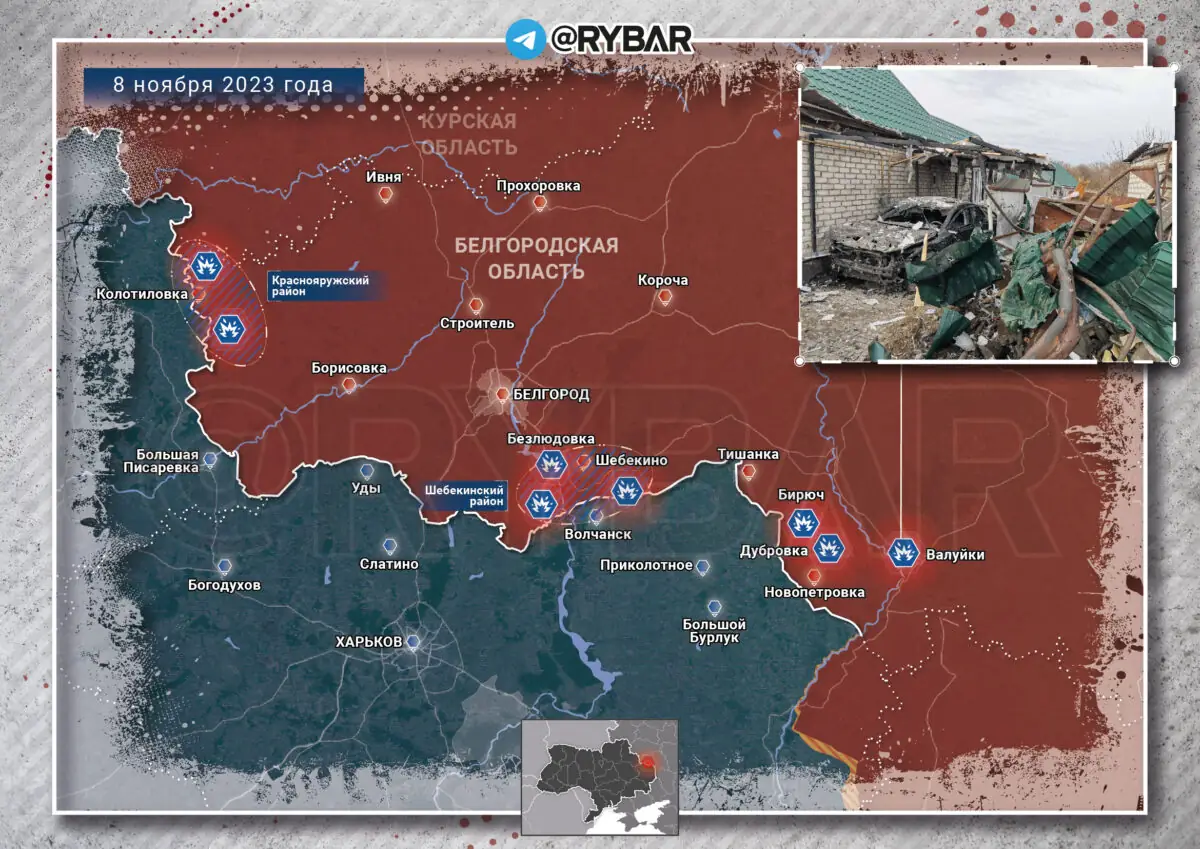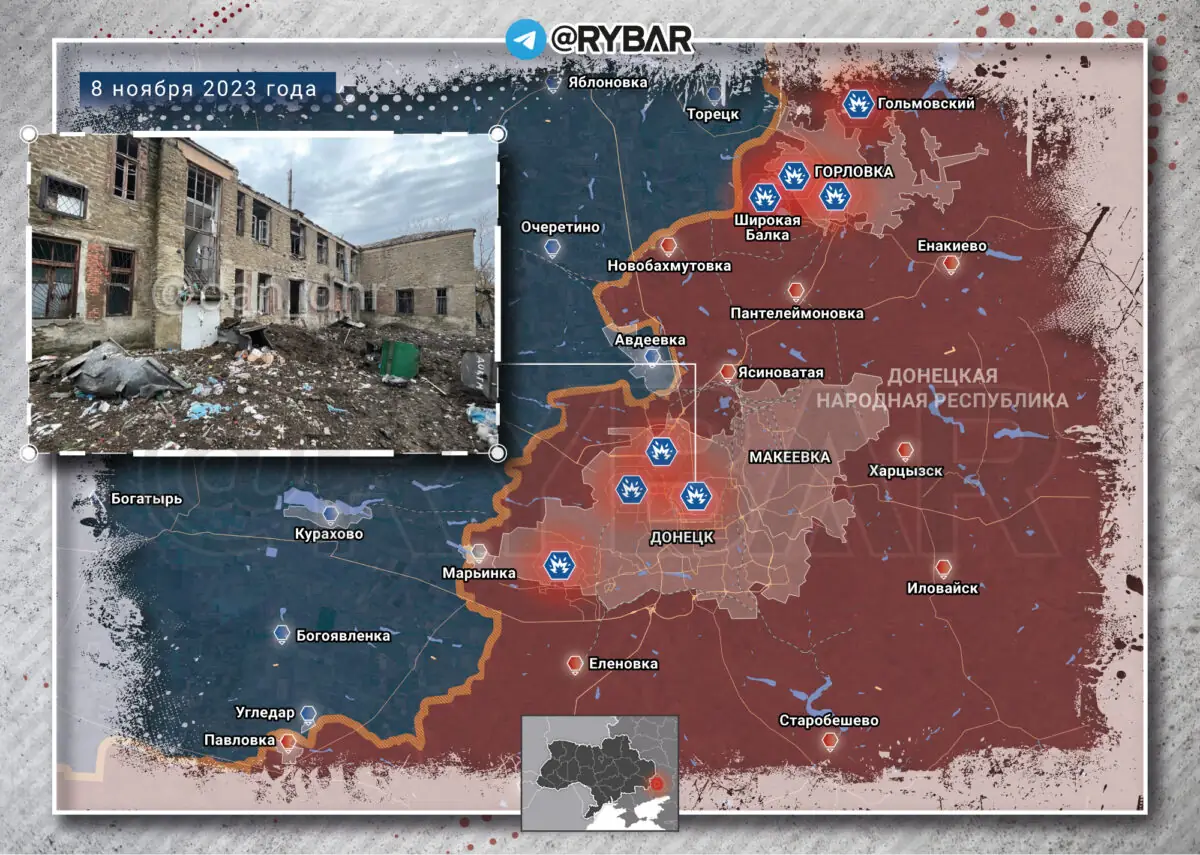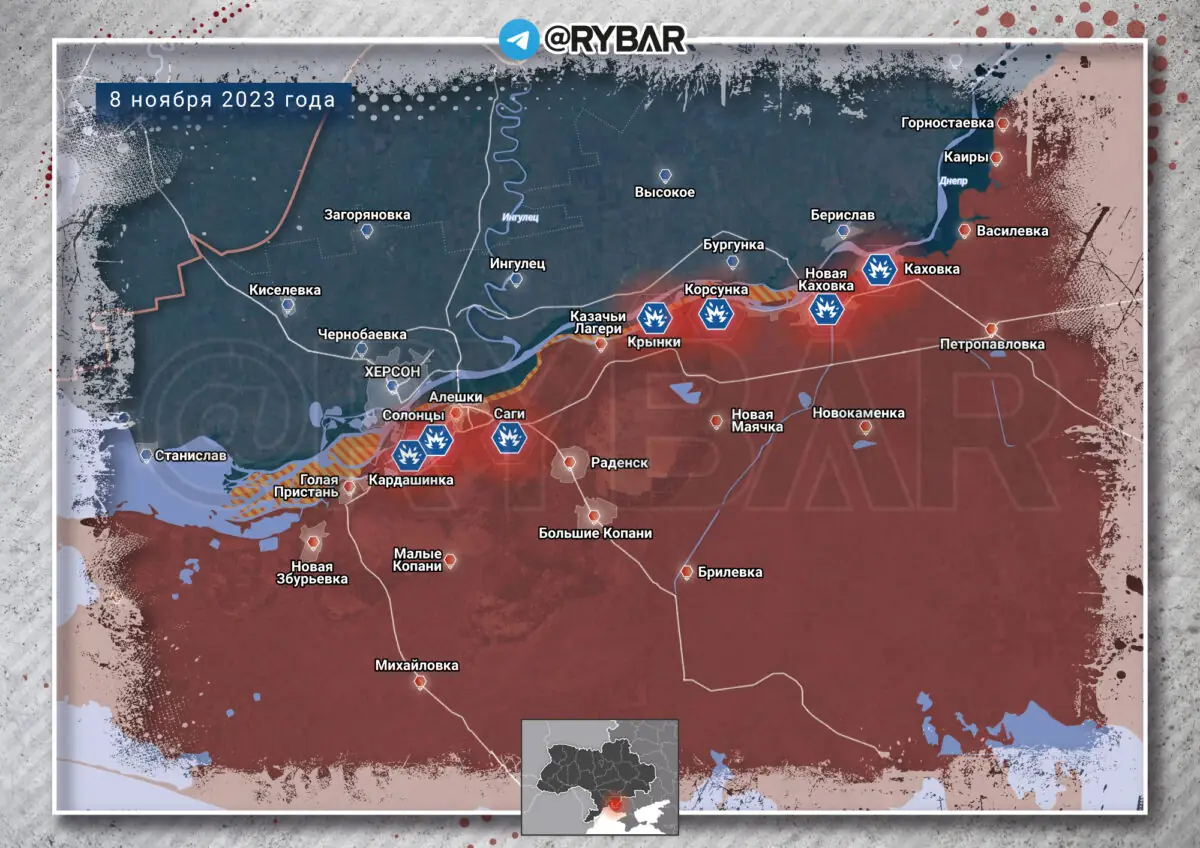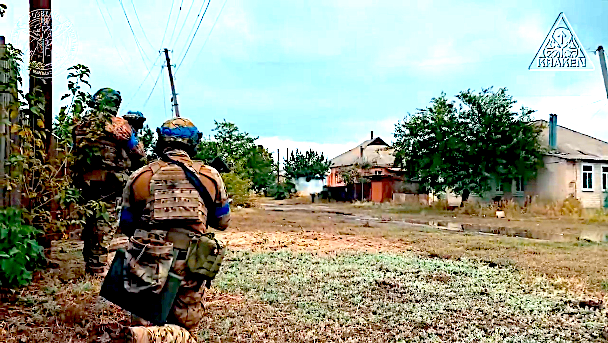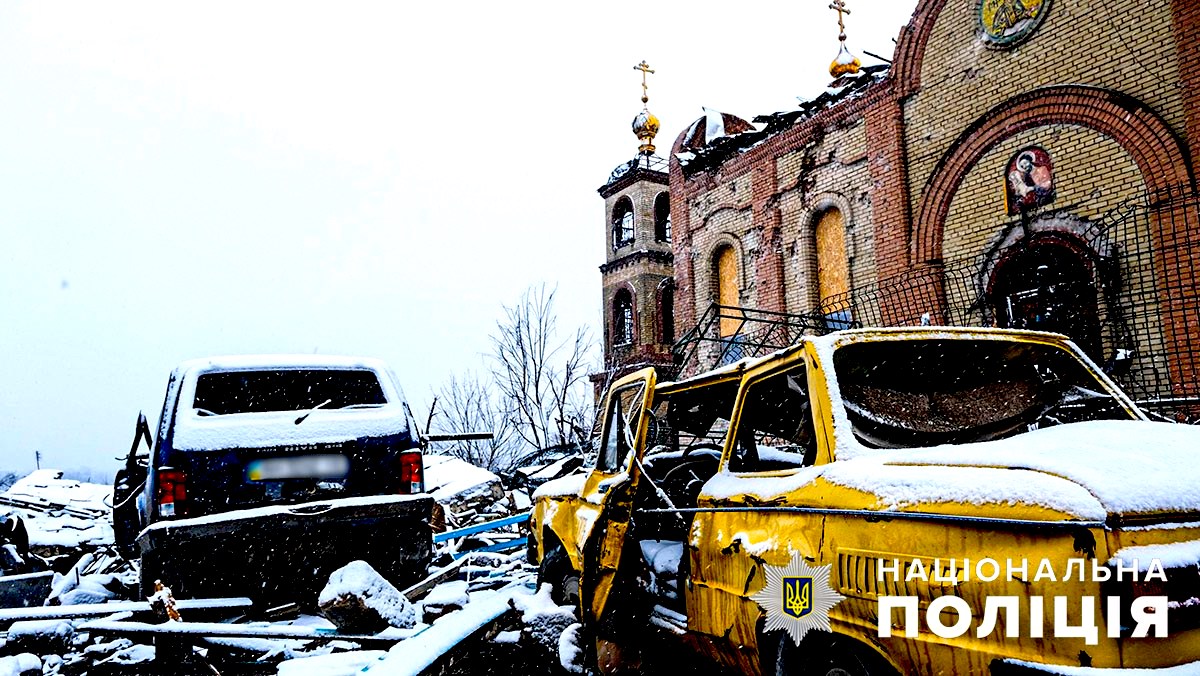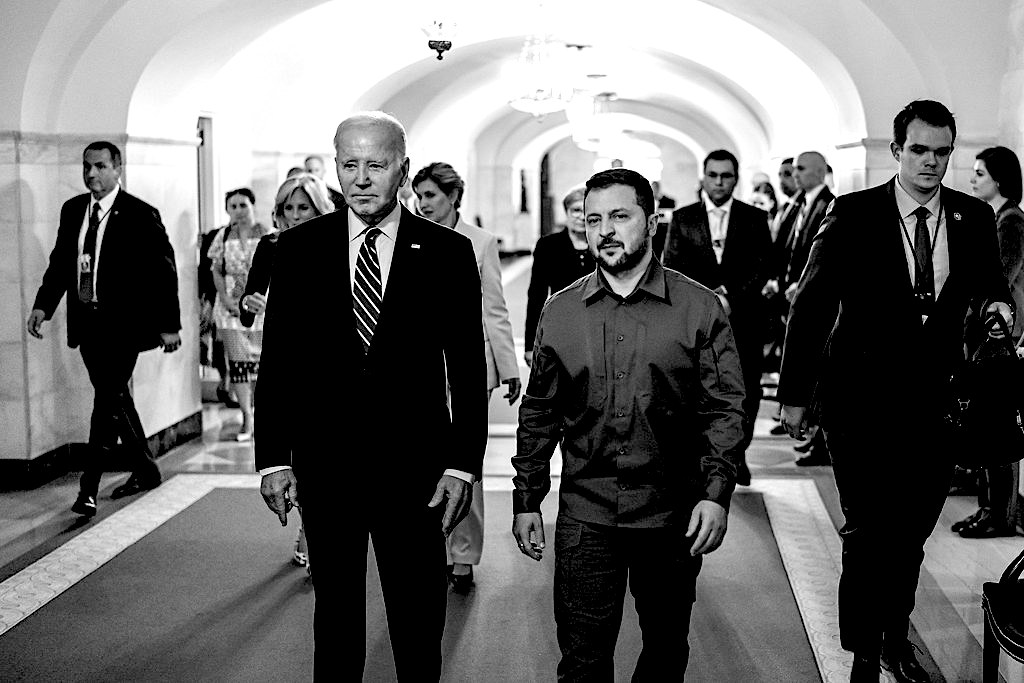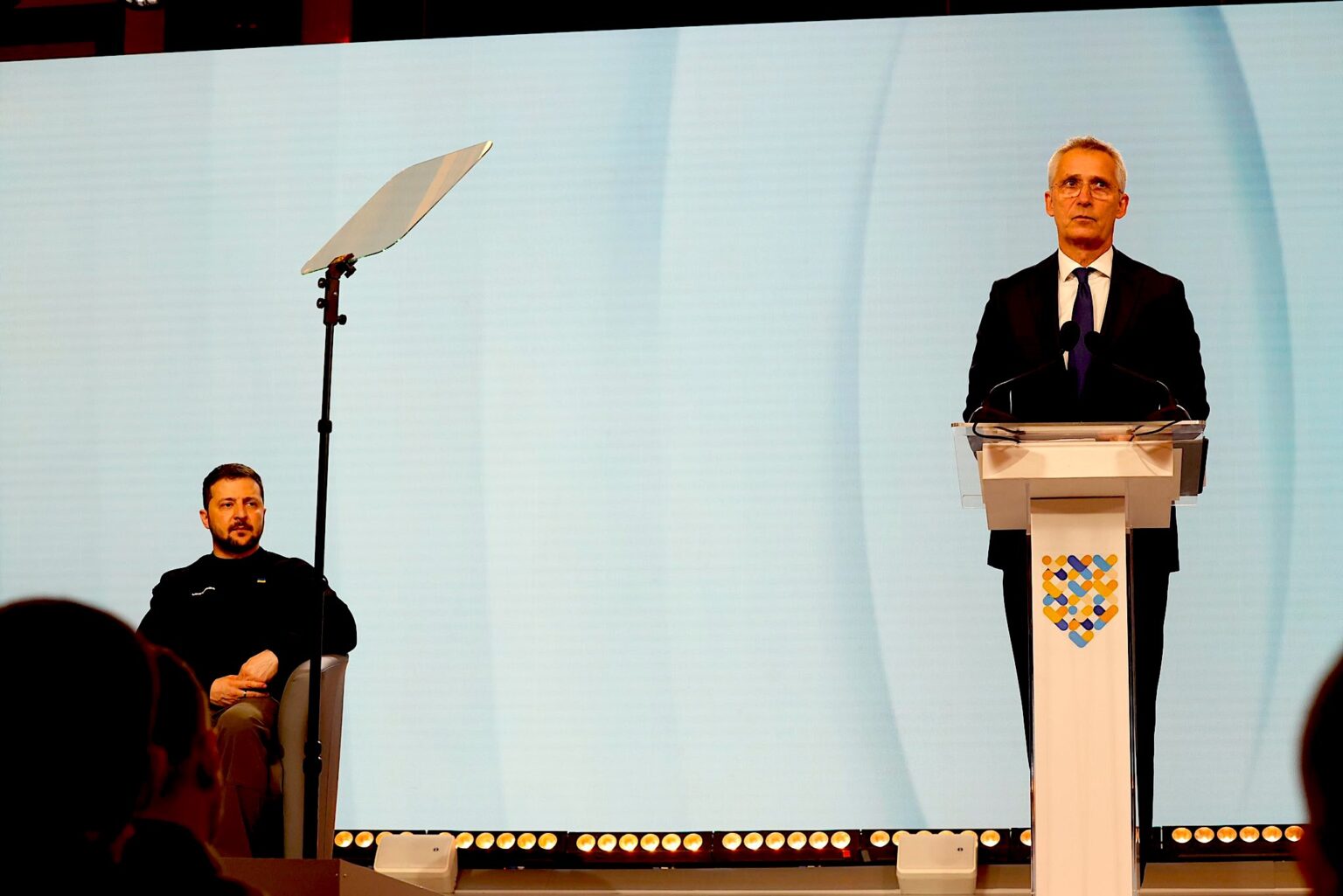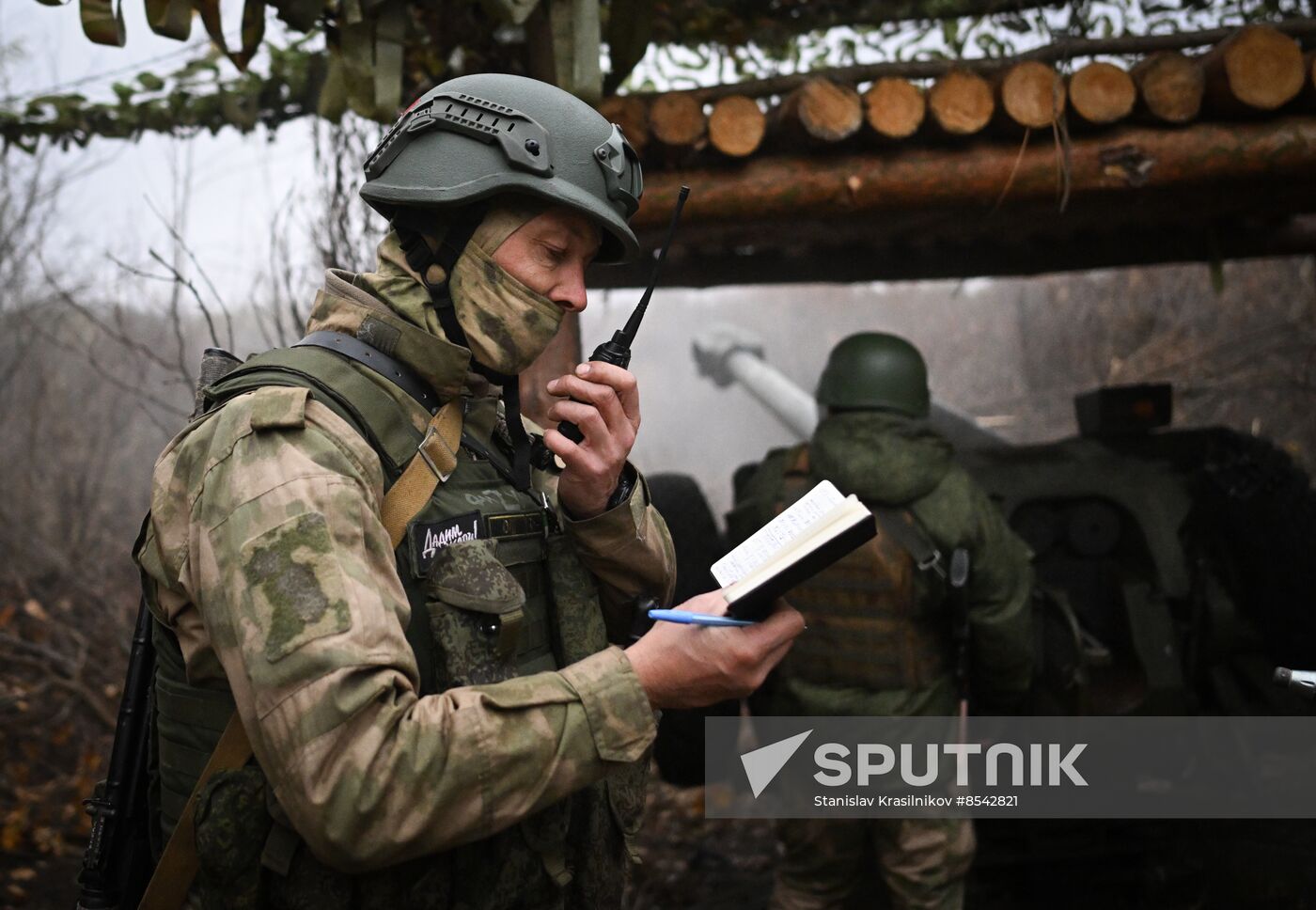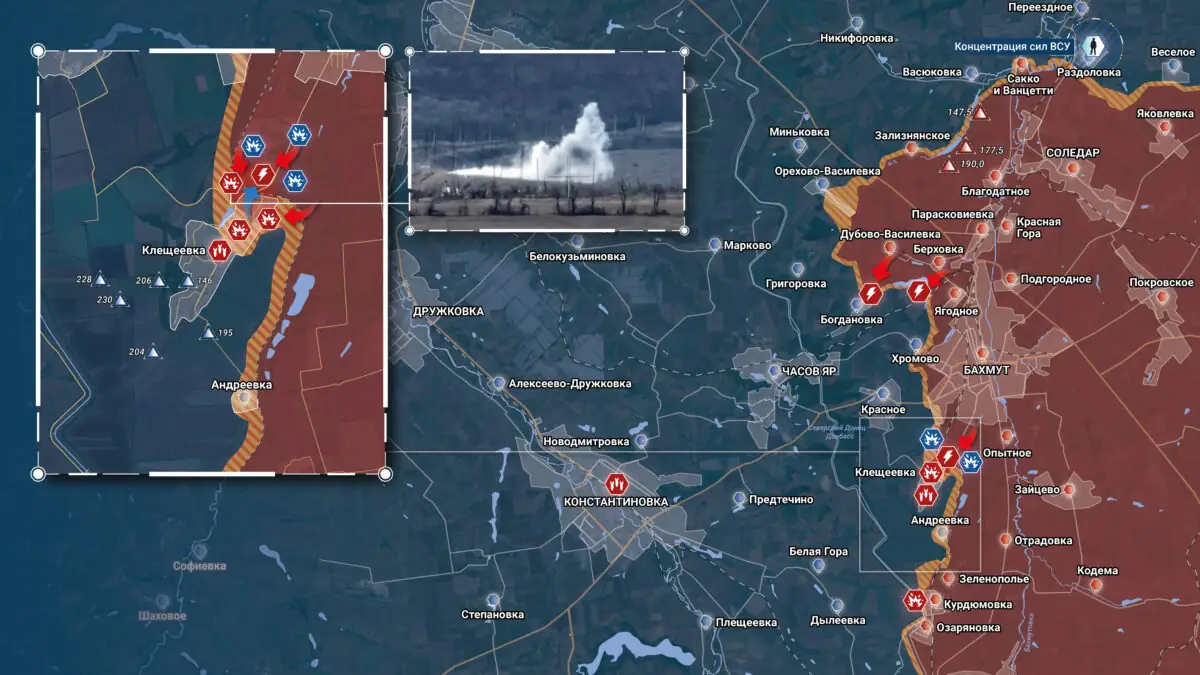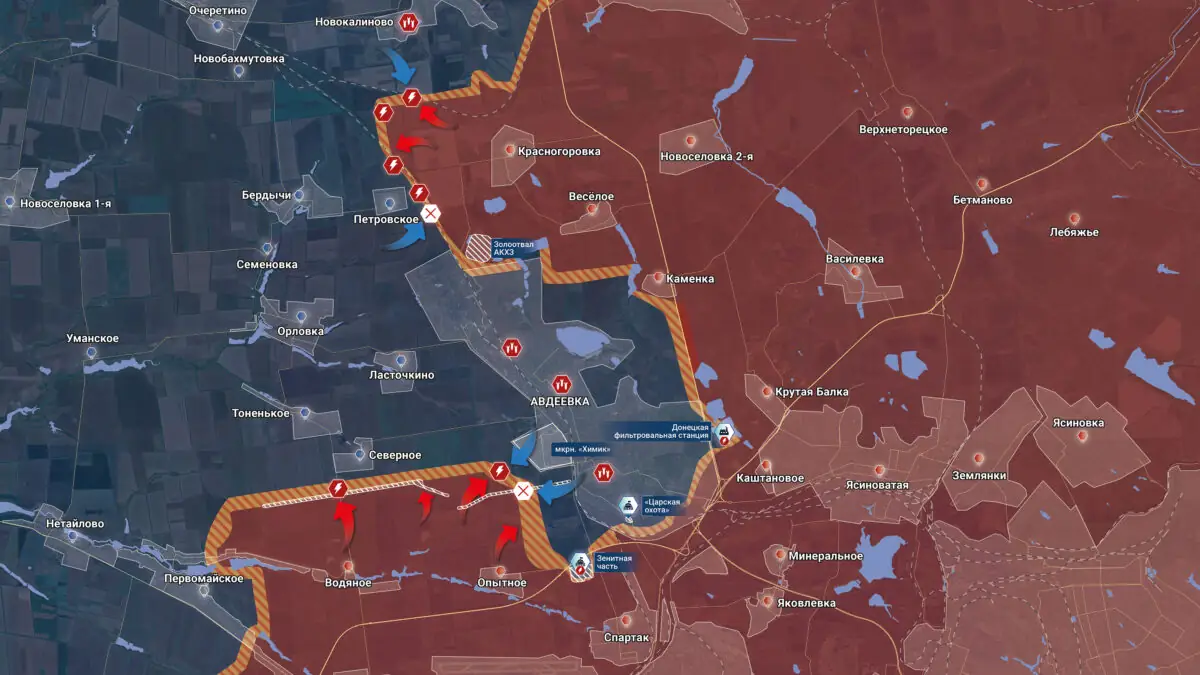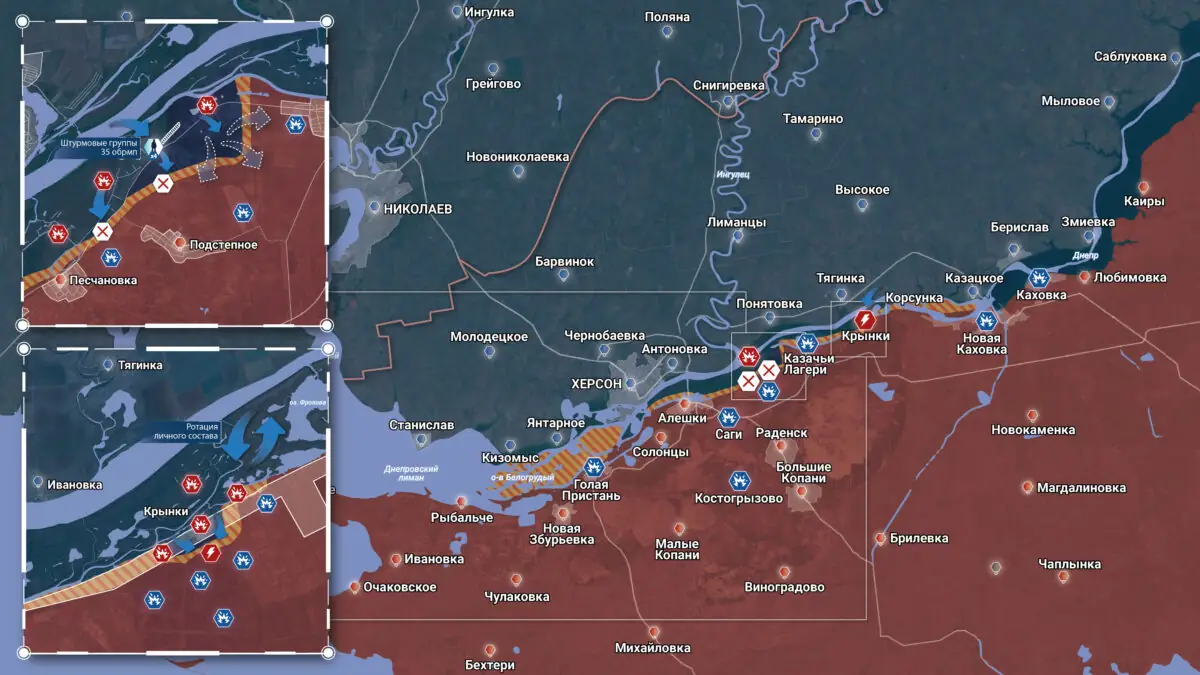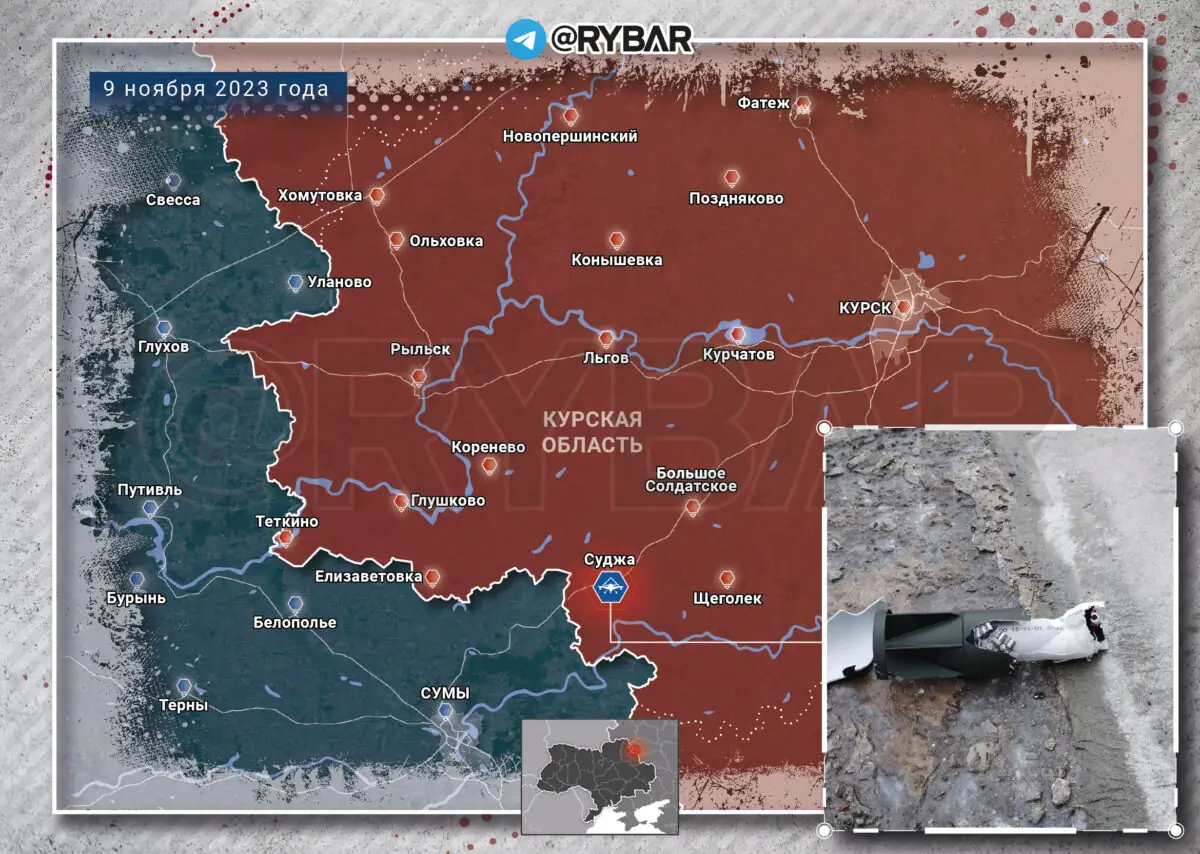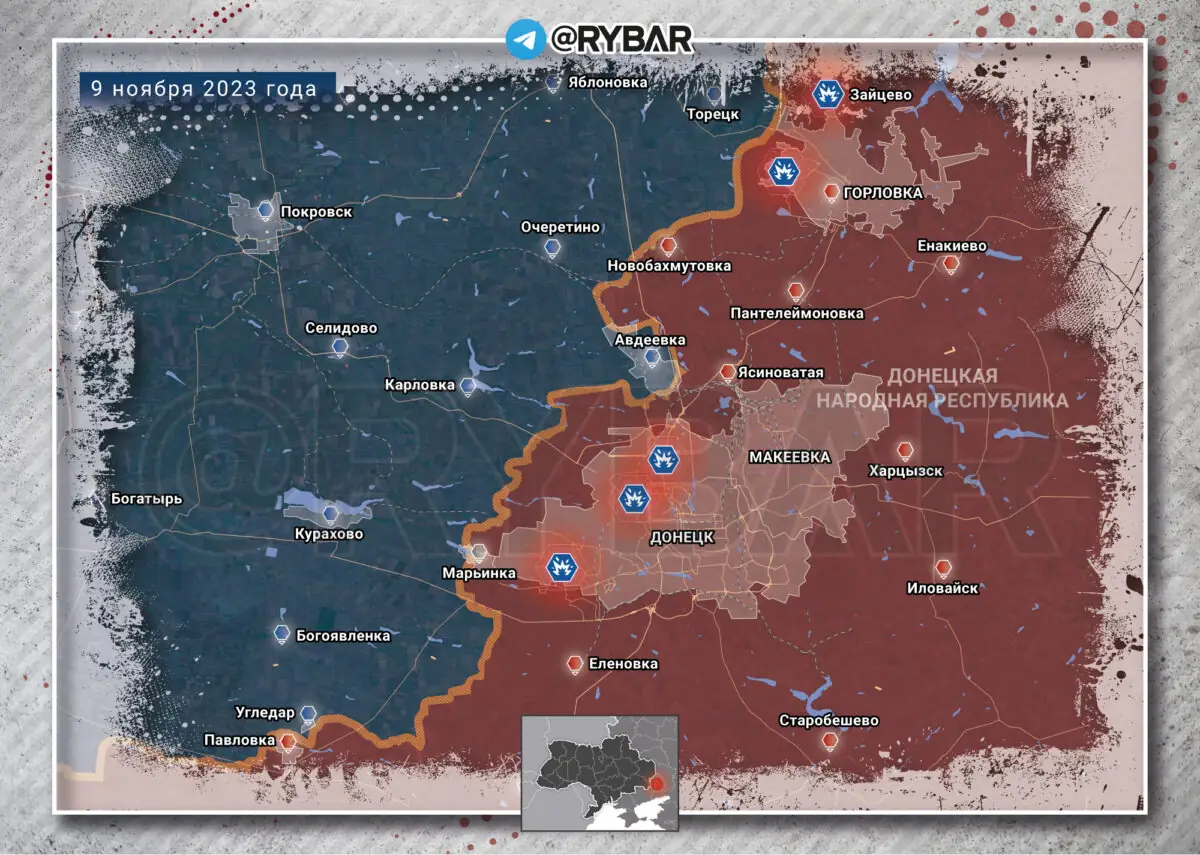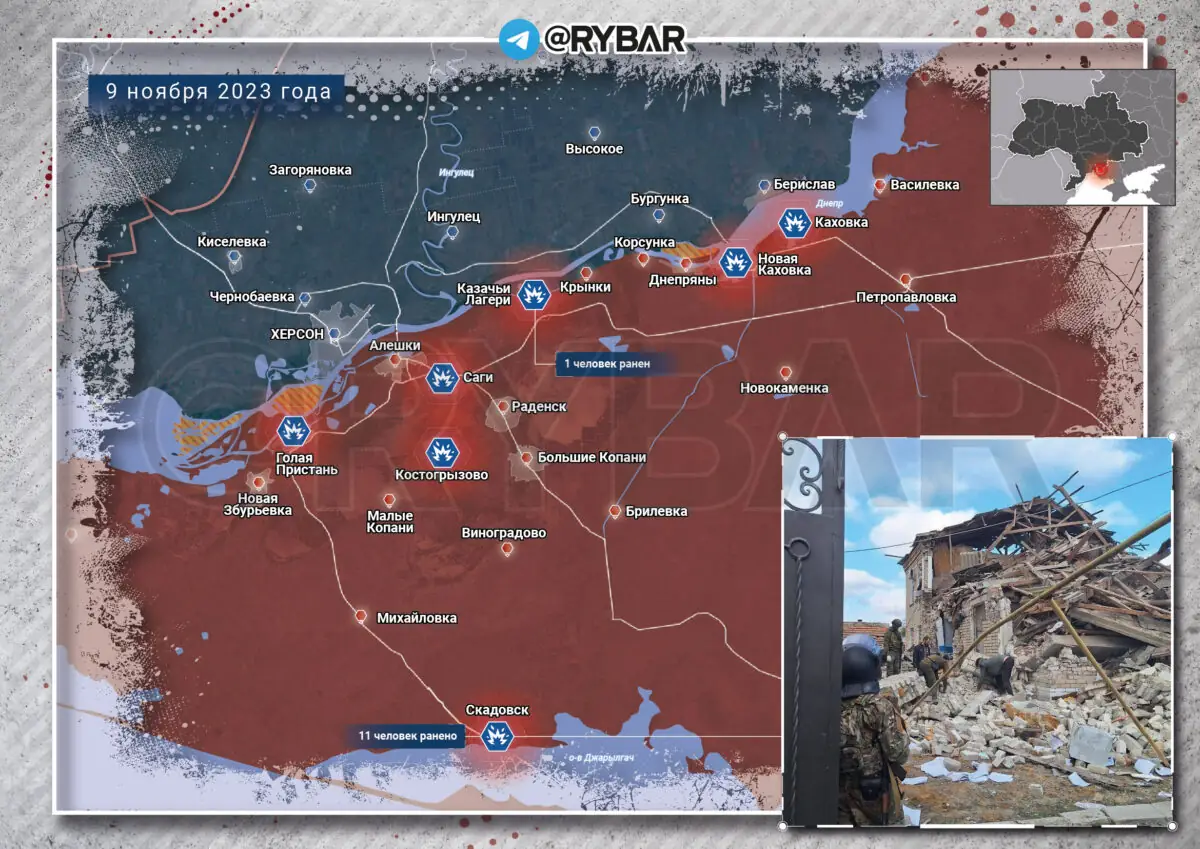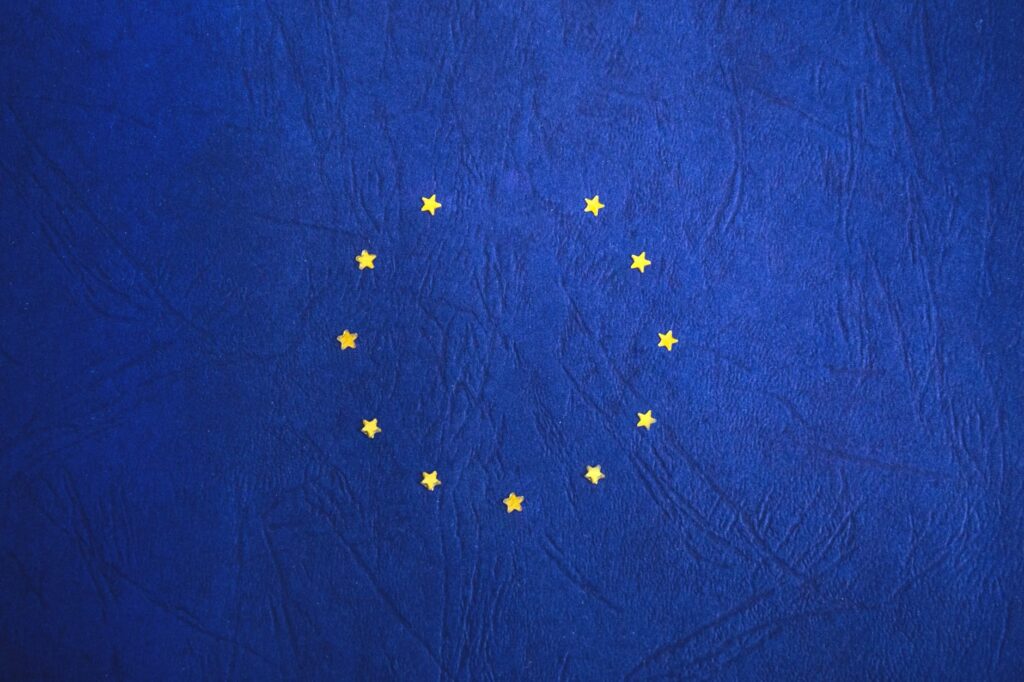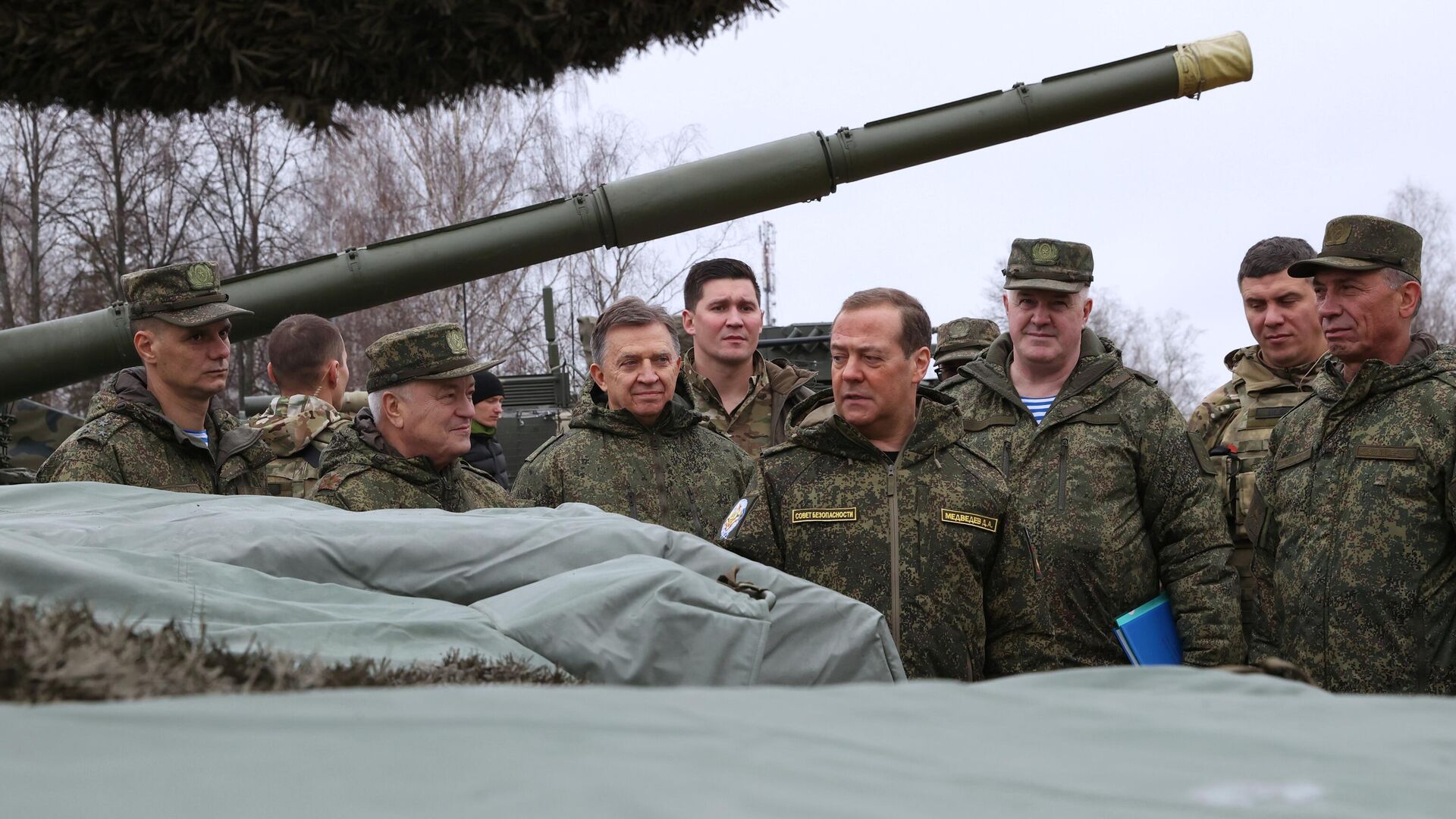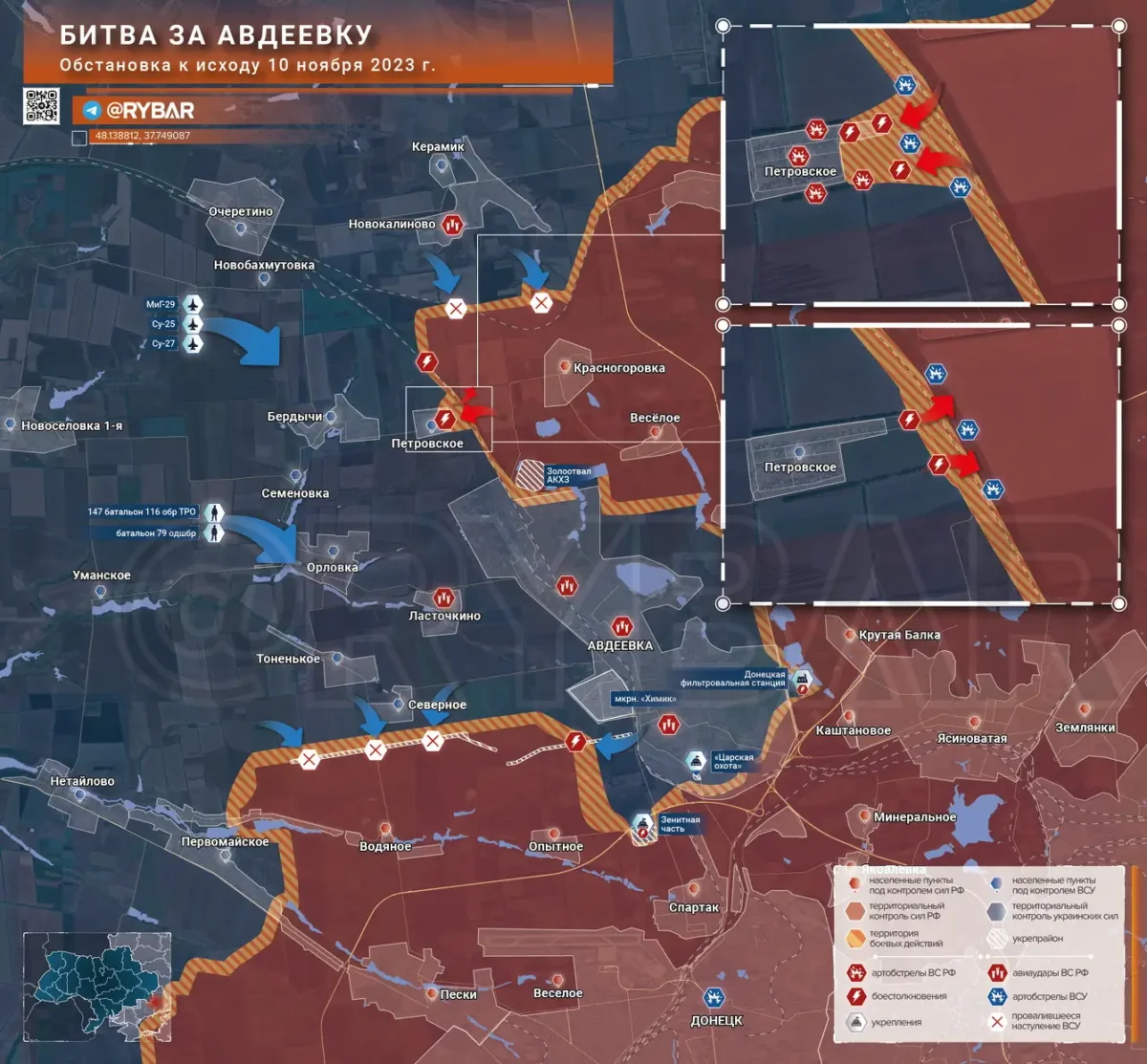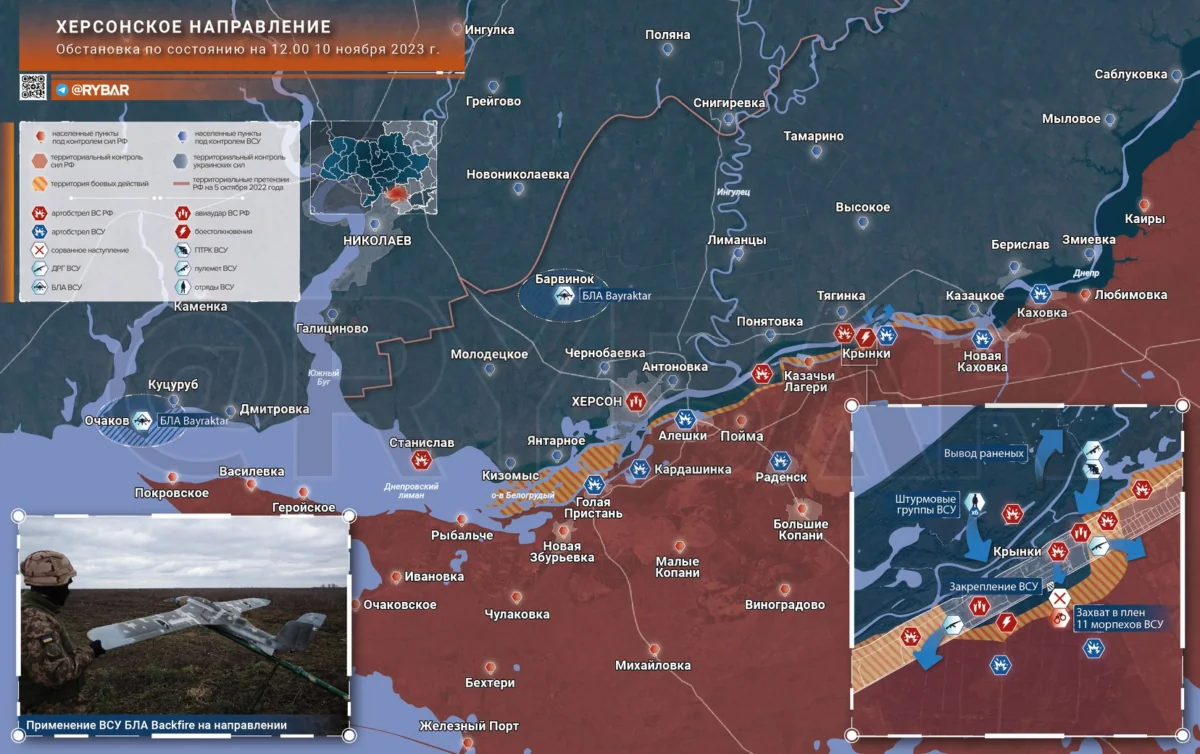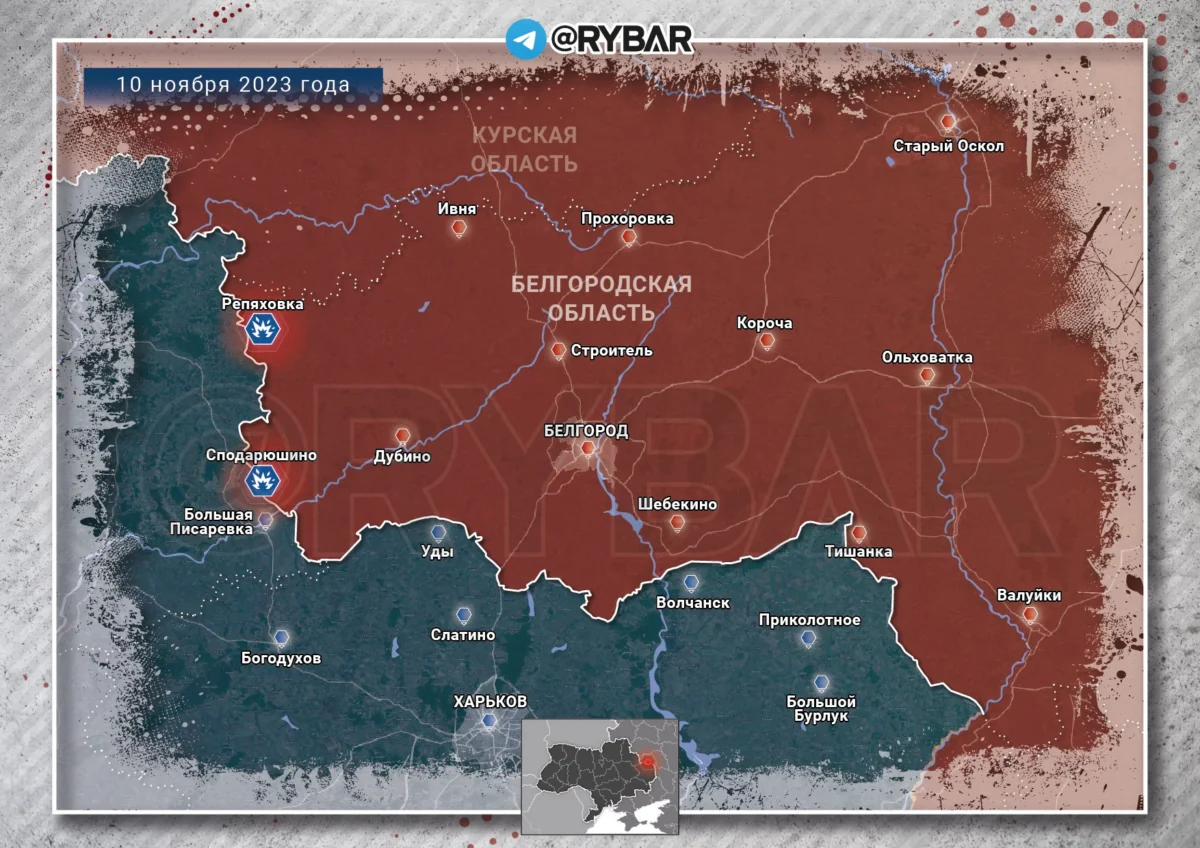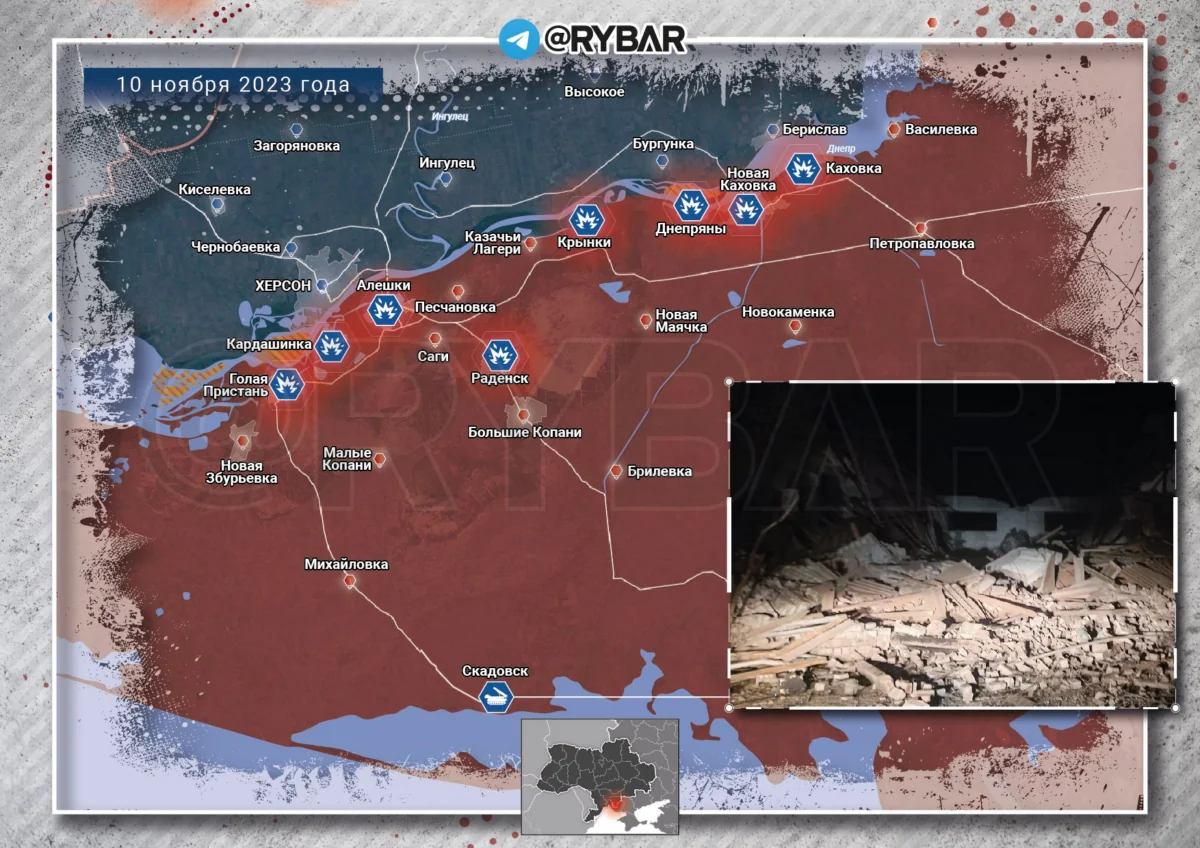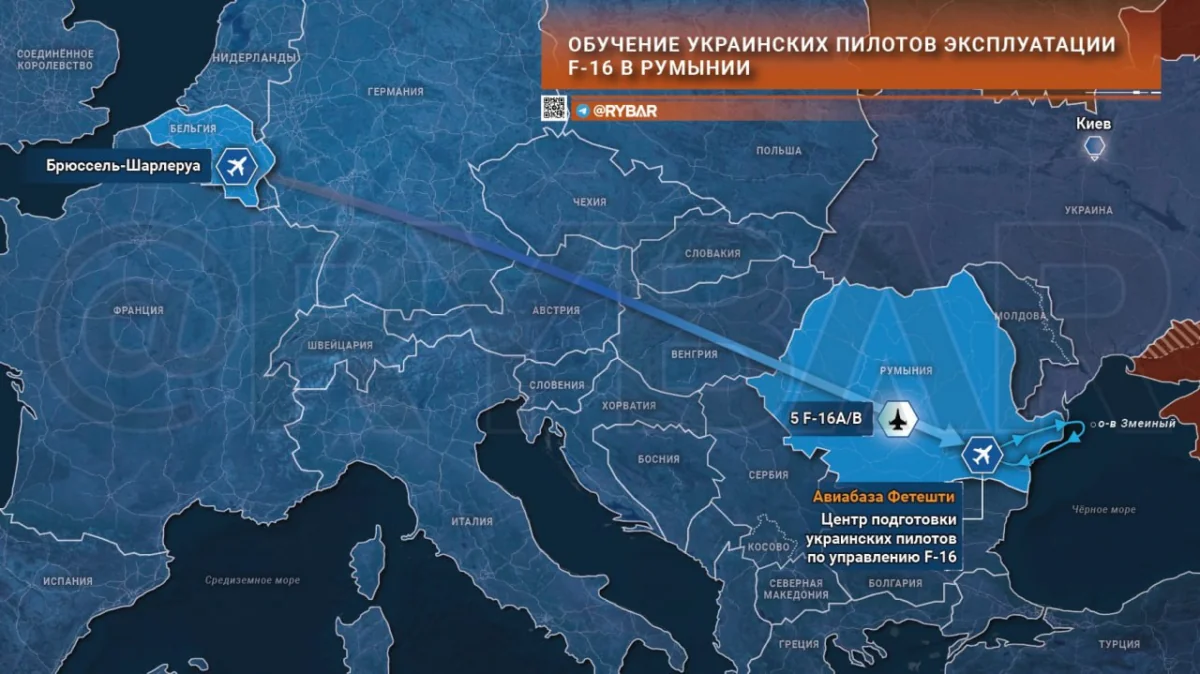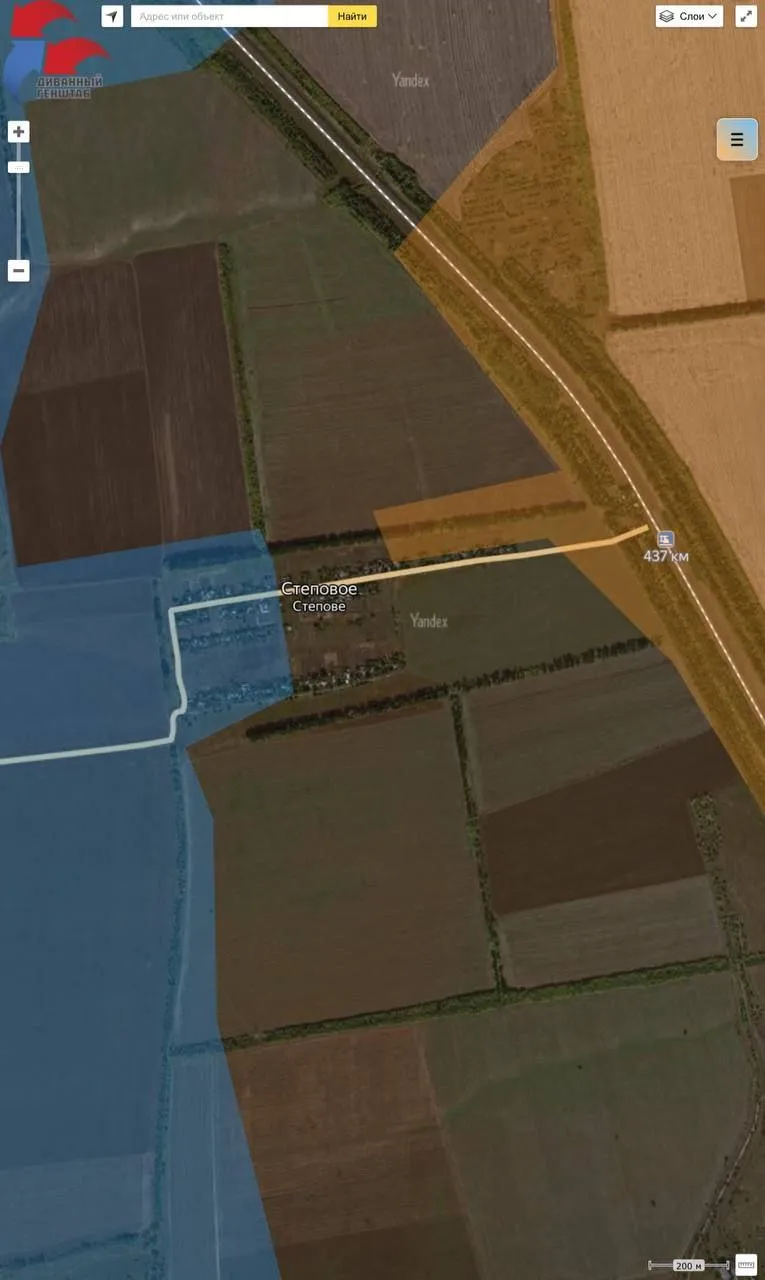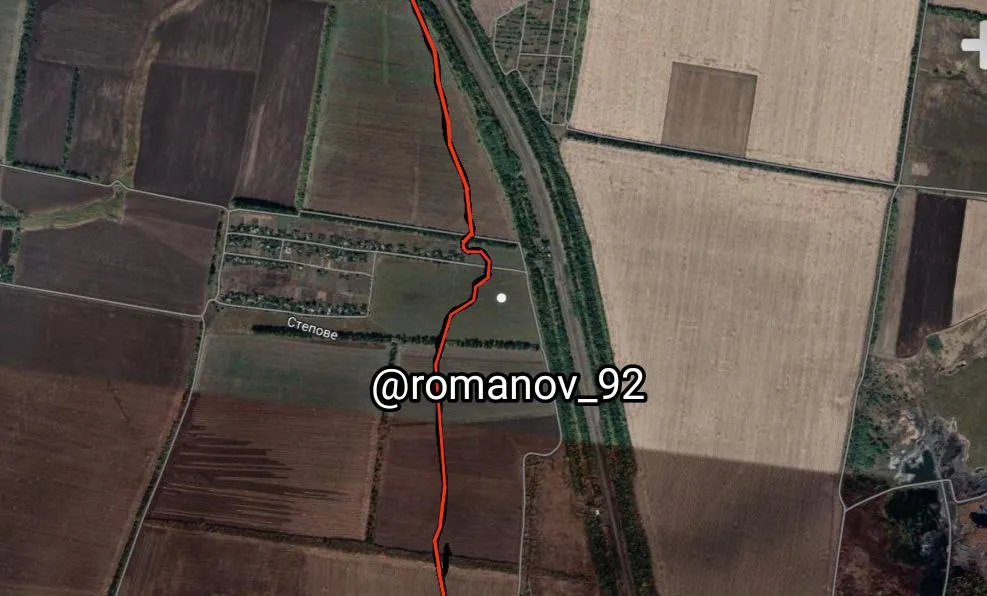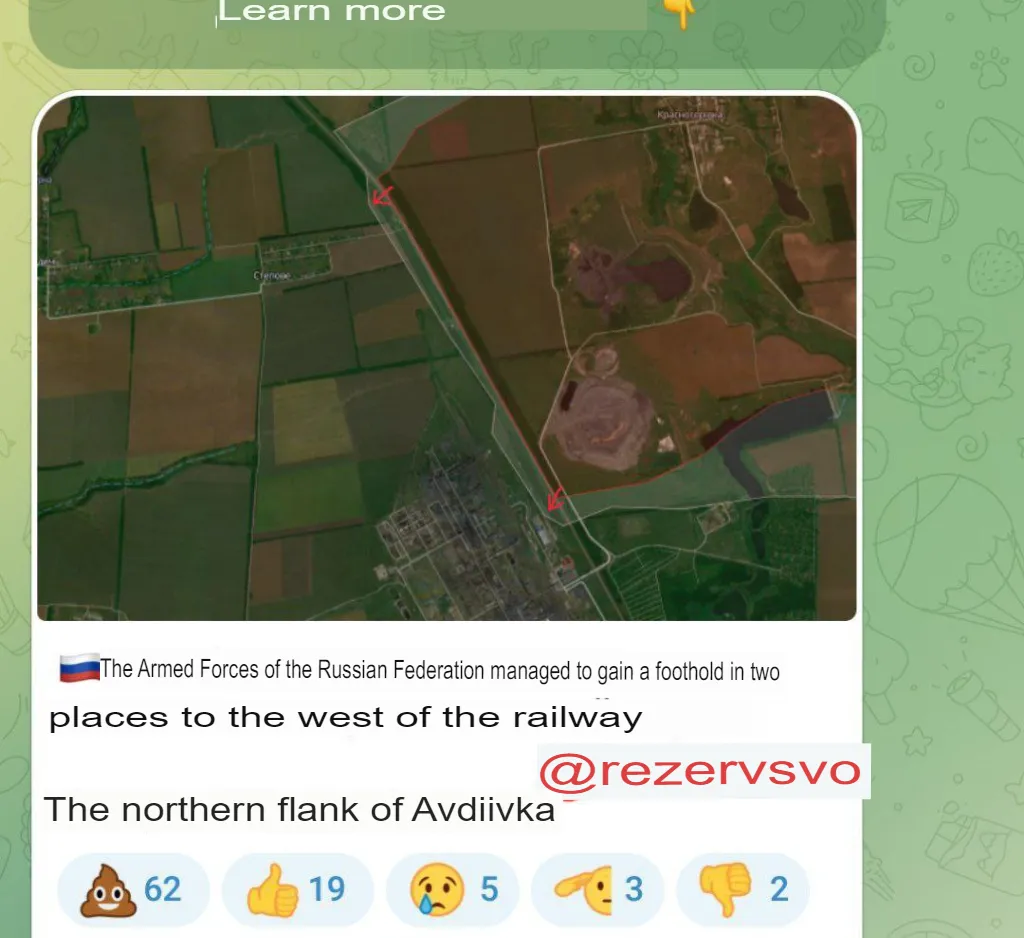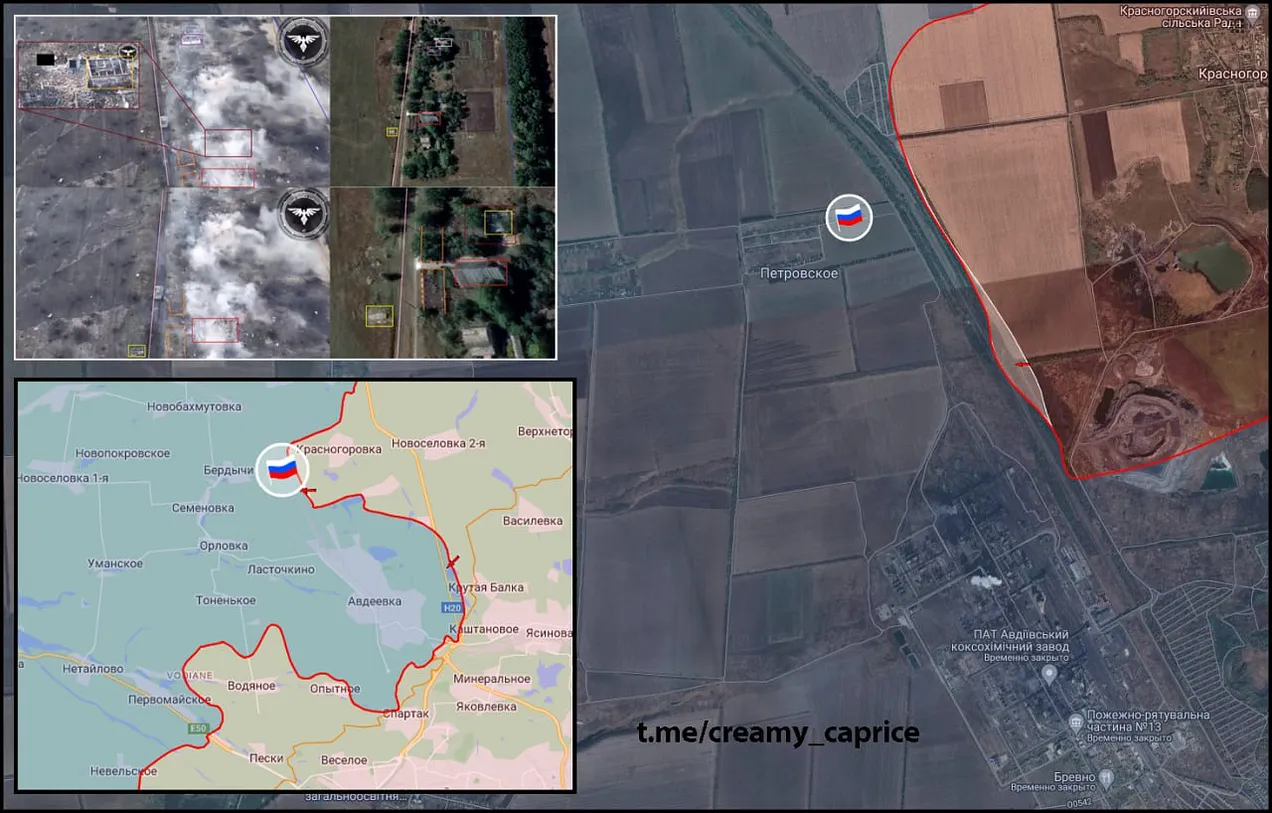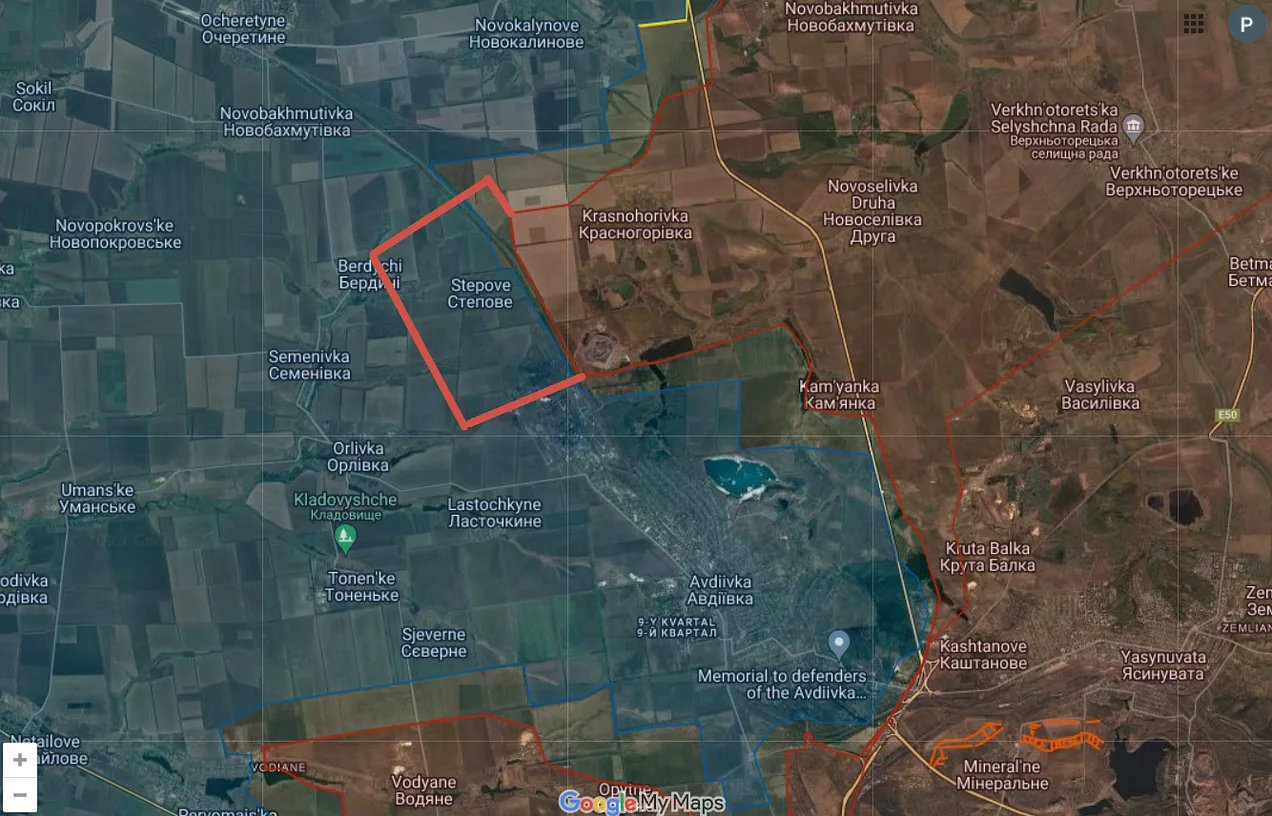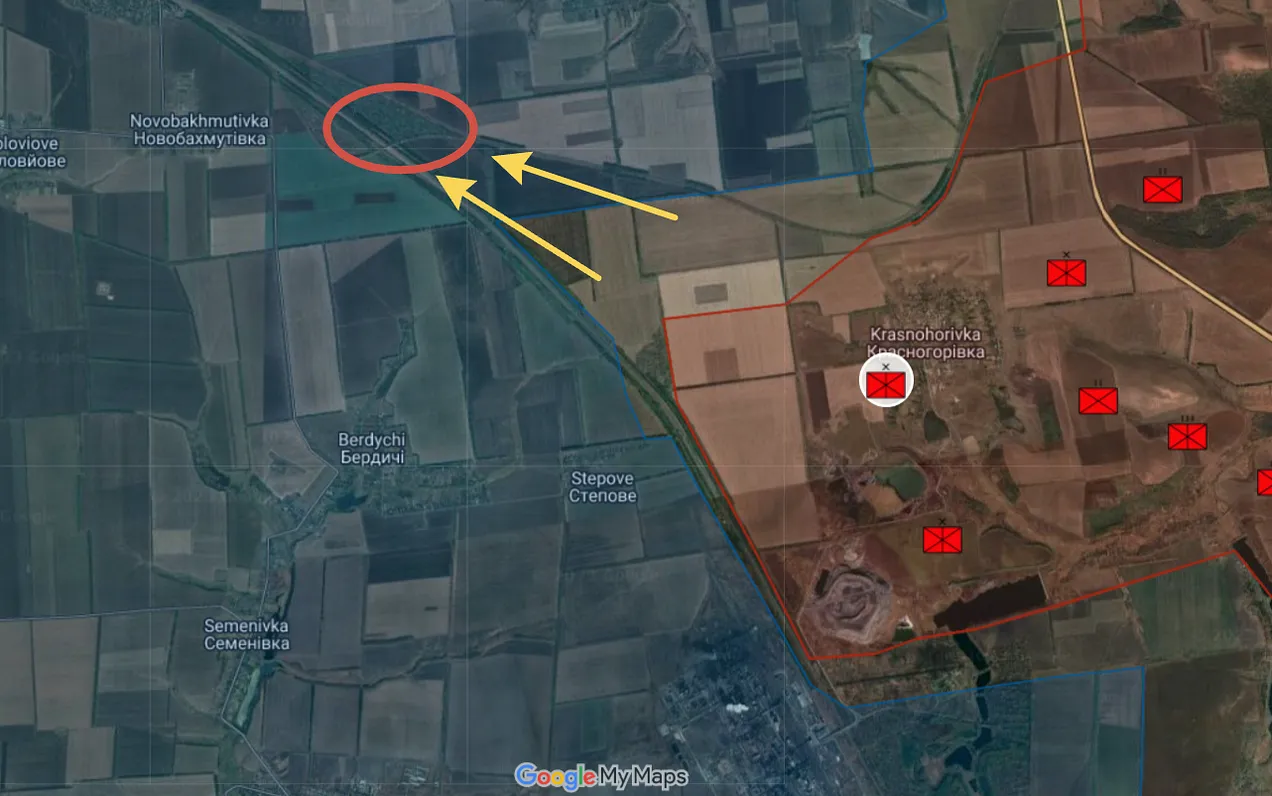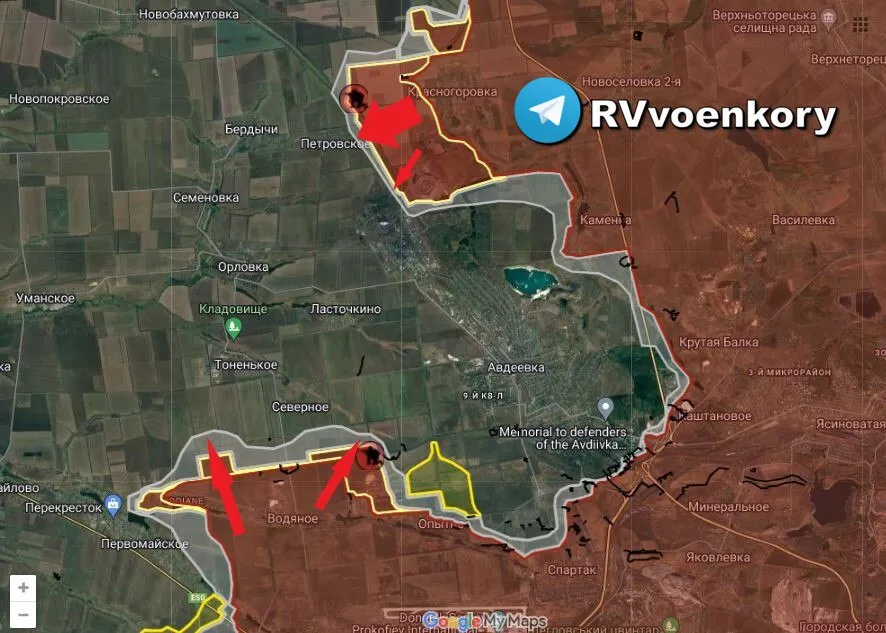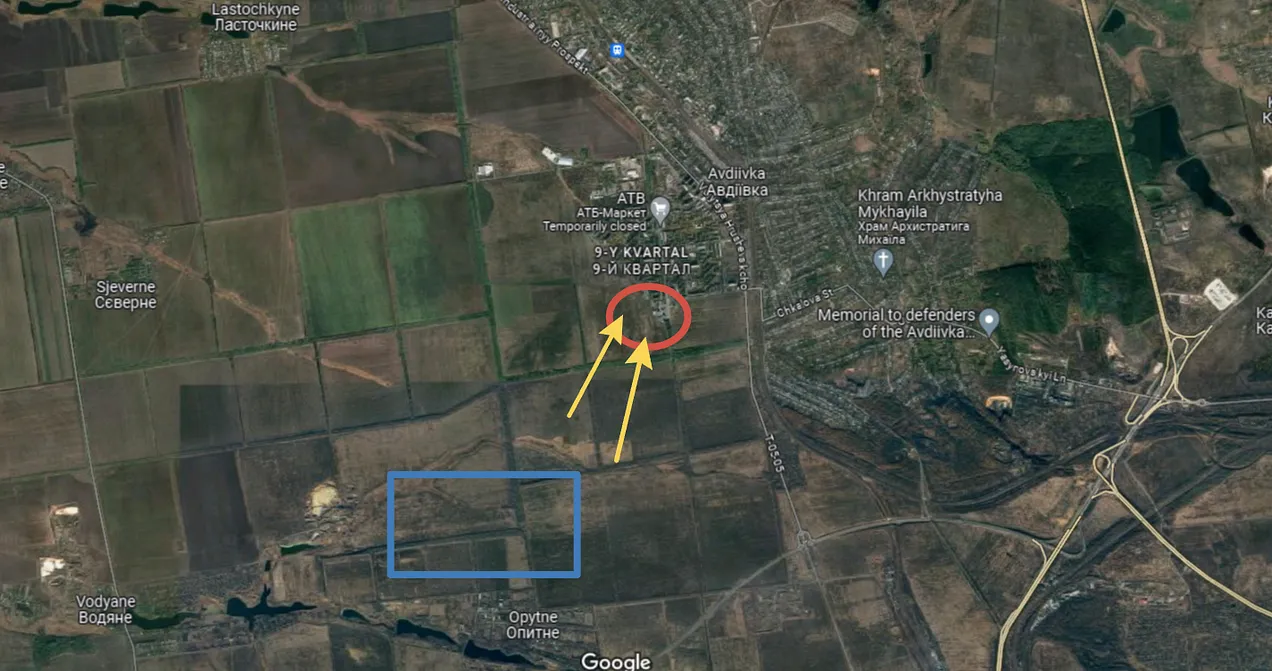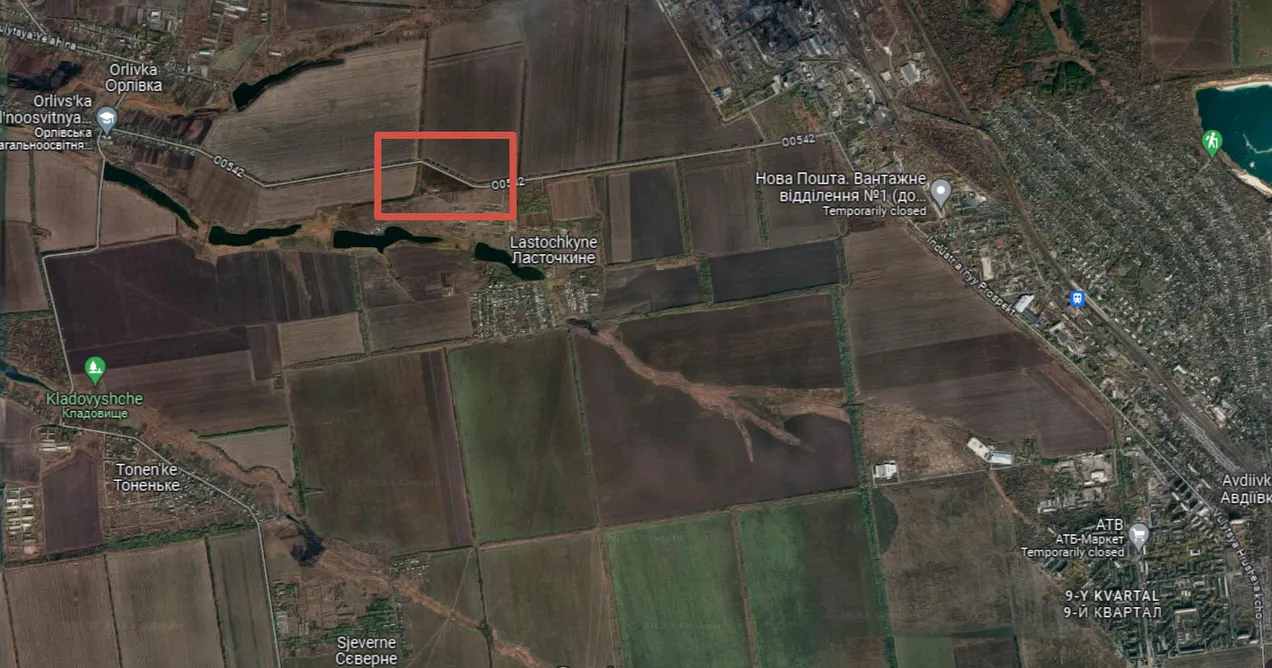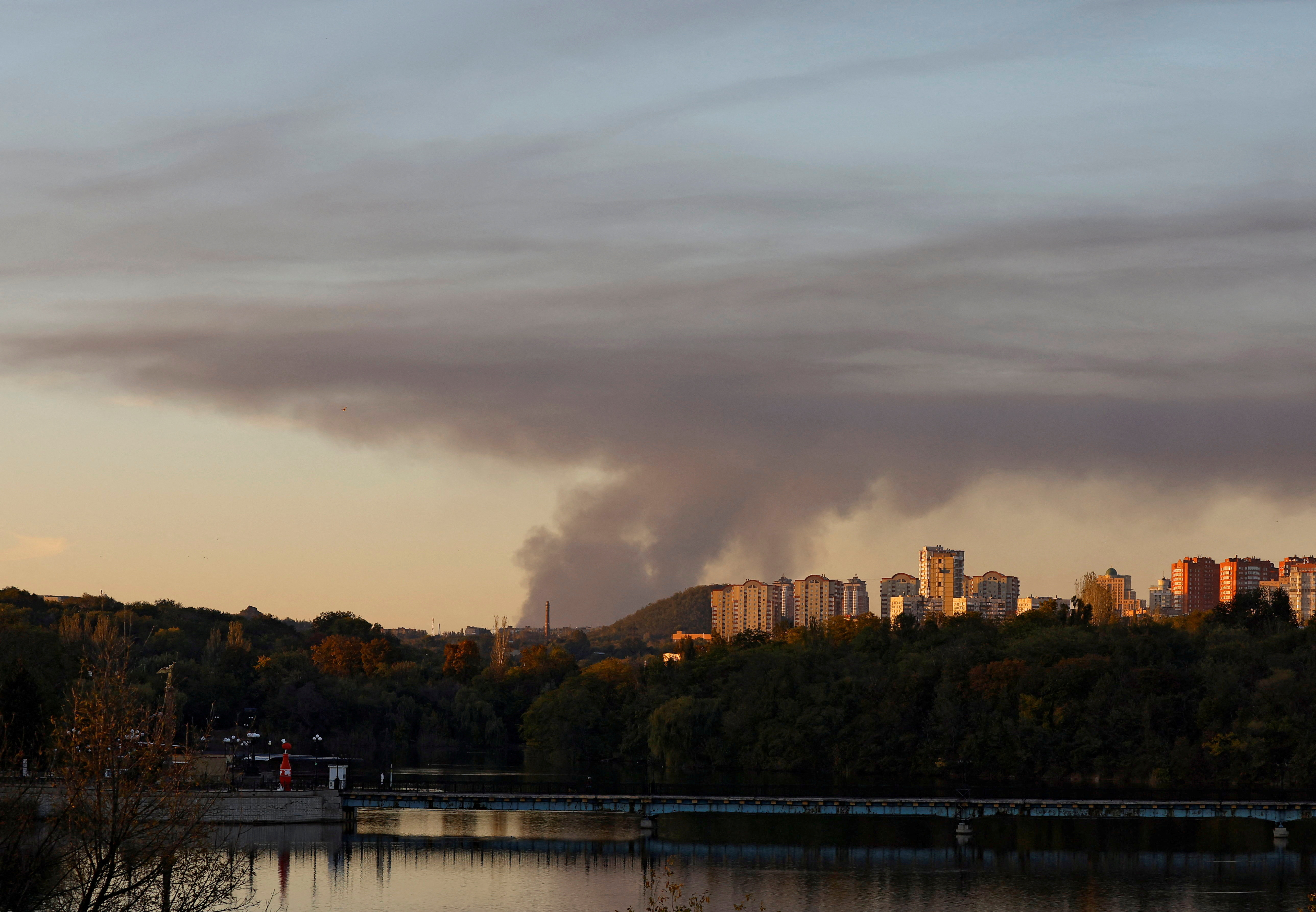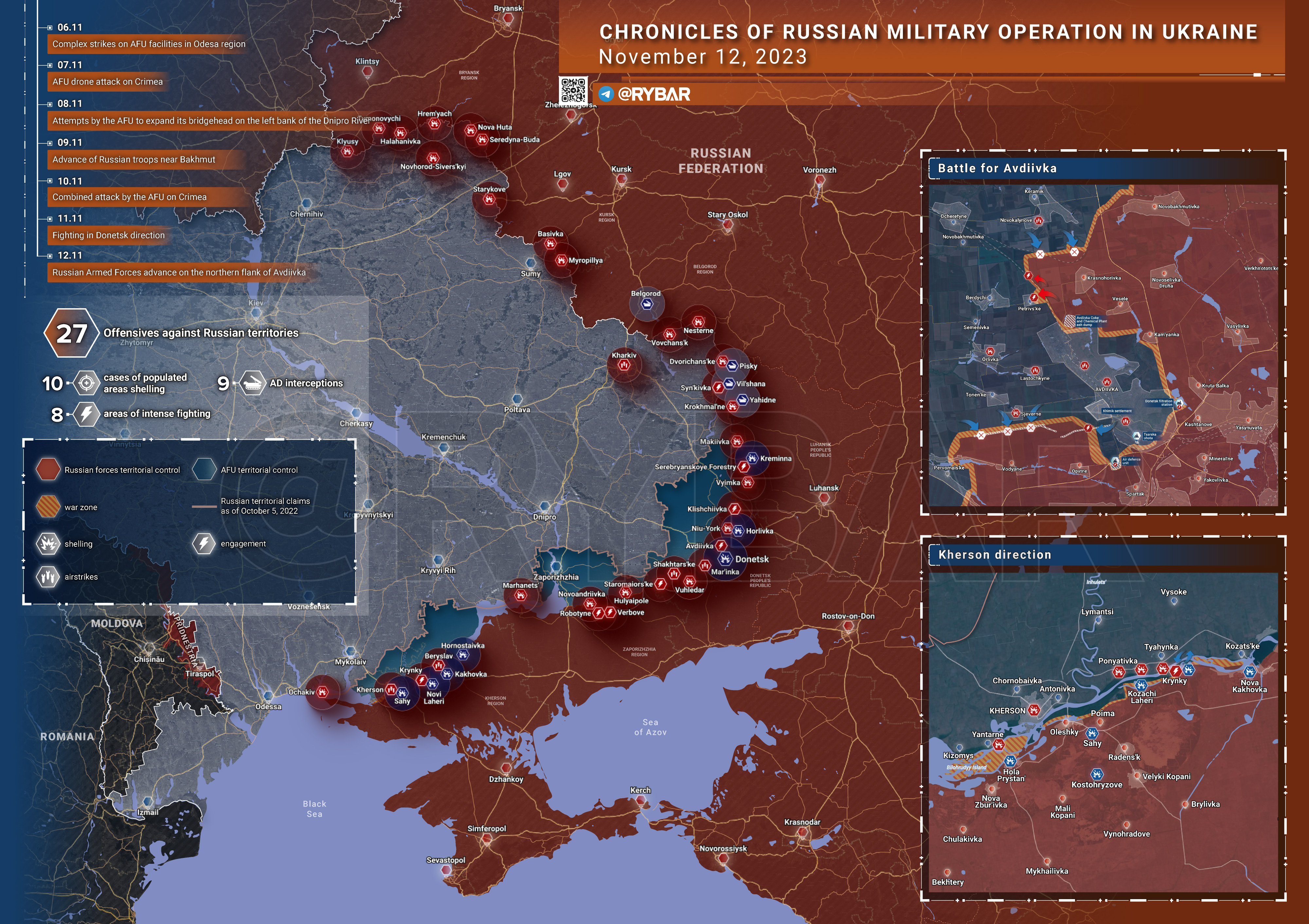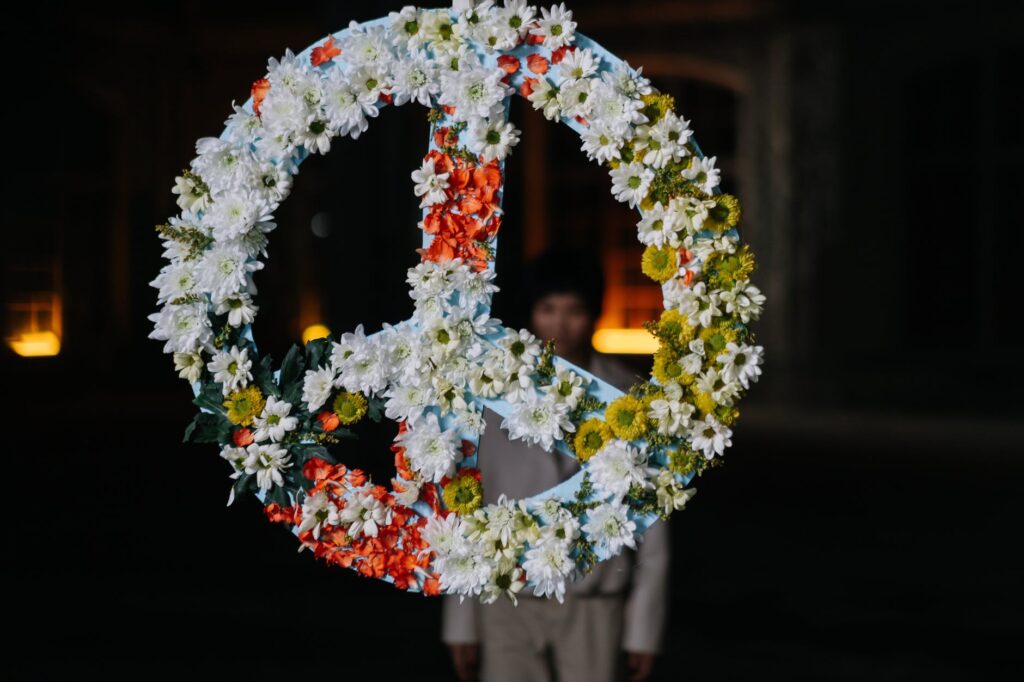POSTED BY @NSANZO ⋅ 11/04/2023
Original Article: Alexander Kots / Komsomolskaya Pravda

Somewhere in Kremennaya, a Bujanka appears with a black flag with a familiar logo protruding from it. Are there musicians around here? I ask, surprised. “There are a lot of them here now,” an officer sitting next to me tells me. “Little by little, they are signing contracts and returning to the front. One by one or in complete units, like paratroopers. There is a division of reactivators working in Artyomovsk. The terrain is familiar to them, they know all the points, it is like coming home.” After the well-known events of June, the commander-in-chief suggested that Wagner's former soldiers become part of the Ministry of Defense. They took a break, but since the fall began, they have gradually begun to integrate into the troops. Some have signed contracts with the Russian Guard (Rosgvardia), others with the Volunteer Corps, and still others have gone to the Armed Forces. The other day, the commander of the Akhmat special forces, Apti Alaudinov, stated that more than 170 Wagnerites have become part of his unit. The soldiers have formed a new squad called Tuning Fork . Anyone with an ear for music will understand this.
“We are the same organism. In the private military company (PMC), he was a squadron commander. The squadron has come with me almost completely. We are a team,” says the commander of the tactical group Diapasón , with the nom de guerre Beja , in an area of the training camp.
“Why did you decide to come back?”
“It's our job, the best job in the world. We feel that we are needed here, in this place. We are willing to share our experience with these guys who are arriving now. Half of the unit is made up of rookies. The best option is to mix them with those who already have combat experience. They all live, during combat coordination, in groups of five. This is how they know each other, with their strengths and weaknesses. They understand where to lean. This is important for assaults.” They test their coordination here at the training ground. A group approaches what is the enemy's strong point on a hill. The grenade launcher starts working. Five people storm the trenches, after throwing the grenades. All training sessions are conducted with live fire. “We train specialists. There are machine gunners, grenade launchers, snipers here. All kinds of military experts,” explains Broker, the highest-ranking instructor. “The first time I was in the war was in the Caucasus. I then joined the company in 2018. I participated in the Euphrates battles in Syria. At the beginning of the war I visited the kyiv region with the Ministry of Defense. At the end of the contract, I returned to the company. I fought in the Artyomovsk area, but was wounded. I got stung by bees ,” he laughs.
Meanwhile, at the training ground, another group of shock forces is approaching a strong point in an open field area. And it's not a game. In real combat conditions, you have to move around the place and attack positions with what you have in the palm of your hand. To get closer, it is necessary to suppress the enemy with fire. Two shoot and cover and two run to the trenches, throw grenades and shoot through the gaps in the trenches. Suddenly, two enemy armored vehicles appear, imitated here by old Volgas. In the sky you can hear the unpleasant sound of a kamikaze drone that, without much hesitation, shoots at the vehicle, which suffers the impact. A soldier named Batal leads the retreat. Not all novices do it at once, but all the tricks of assault can be learned with three weeks of competent training.
Batal arrived in Wagner in the first batch of prisoners. At age 19, he was sentenced to ten years in prison for robbery. He served six years and then left to fight for his country. Behind him are the flanks of Artyomovsk, a serious wound and two contracts. He is already in the third. “I was going to reach the end in the Bakhmut area, but I did not manage to enter the city. I really wanted to do it though. Things didn't turn out that way. I was in Kurdiumovka and Klescheevka. I almost always worked in evacuation of the wounded. Each case is remembered differently. There is no specific tactic because one day the tanks work, others the mortar. There are times when there is everything. Evacuation is the easiest goal. I have had casualties: three 200 (dead) in all that time.”
Four soldiers carry out the evacuation of the wounded man in the training field. On the battlefield he has been given a tourniquet, taken out under fire, placed on a stretcher and bandaged. The vehicle flies off after carrying first the injured person and then the rest of the group. The vehicle advances until it hides in the forest. Errors are analyzed, the material is reloaded and done again. Soon they will have to go to the front.
“Why do you keep coming back?”
“Because we're not done yet. My family and my country are also in danger. Many people say: volunteers go for money. Money is not the main thing. The most important thing is that everything is fine with family and friends. We have to do this so that our wives and mothers are well. That's why I'm here. "It's good for my mother, I left as a criminal and now I'm defending the country."
“How did he receive you?”
“I didn't tell him I was coming back. I arrived at night and brought her some flowers. She cried. Before we only saw each other during prison visits. Of course, my mother was very happy to see that he was alive and healthy.”
“And doing a good job”
“Yes, it makes me feel good. But it's better when things are calm. "When we're done with all this."
“What are you going to do, go to Africa?”
“Libya, Syria…they don't interest me. If problems reach my borders, I will take up arms and defend the homeland. But as long as they're away, I'm not going anywhere. I can do many things, like construction. I learned in prison. “I am a versatile person.”
“Won't it be boring after this?”
"Maybe yes. But I'll have to work. “I don’t want to go back to prison after this.”
In my recently published book “500 Days of Victories and Defeats”, there is a chapter dedicated to Wagner's units. In the preface I wrote:
“I divide Wagner's history into four phases. The first is shadow work. At this stage of the formation of the private military company, I was the first journalist in the Russian press to write about its existence. Also about the tragic events of July 2018 in Syria, when American aircraft liquidated our freelancers.
The second is Wagner's combat path in the special military operation , part of which I did with them. No one can take away the victories they achieved or the memory of the fallen.
The third is the attempted rebellion, which I cannot accept.
The fourth is starting. Who knows, there may be a place for them in future books.”
It seems that the Tuning fork squad and other musician units are writing that new page. The old symbols have not been banned. The boys wear Akhmat's motto on their sleeves and Wagner's on their chests. The units maintain the same management system. And the tasks remain the most difficult: the assault. Only now they are ready to join the units of the Ministry of Defense, Rosgvardia and the Volunteer Corps.
https://slavyangrad.es/2023/11/04/de-vu ... more-28491
Google Translator
******
Chronicle of a special military operation for November 3, 2023
November 3, 2023
Rybar
In the Kherson direction , Russian military personnel tried several times to dislodge the enemy from Krynoki on the left bank of the Dnieper . They managed to achieve some success, but the Ukrainian Armed Forces still maintain a foothold in the center of the village. Now fierce fighting continues in the area, and unmanned aircraft are actively operating. In addition, the enemy maintains a bridgehead at the railway bridge to the west.
During the battle for Avdeevka , the Russian Armed Forces expand the zone of control and consolidate in previously occupied positions near the railway track near Petrovsky ( Stepovoy ). On the southern flank, fighting continues near the Tsarskaya Okhota camp site and south of Severny .
At night, Russian troops again attacked the rear targets of Ukrainian formations. One of the targets was the Kanatovo airfield , where Storm Shadow cruise missile carrier aircraft are based. There is no exact information about the results of the defeat yet, but the enemy’s air defense was unable to intercept all targets. Several more targets were hit in and around Kharkov , as well as in the Ivano-Frankivsk , Odessa and Lviv regions.
Ukrainian formations, in turn, again attacked Crimea with a swarm of Mugin-5 PRO drones. 13 devices were suppressed by electronic warfare equipment near the village of Razdolnoye , two more were shot down by air defense systems.

About the next raid of Ukrainian Armed Forces drones on Crimea

This night, after our kamikaze drones raided Ukrainian territories, the Ukrainian Armed Forces responded by attempting to attack the Crimean peninsula with Mugin-5 PRO drones stuffed with explosives. The UAV launch area is unknown. Given past attacks, it is highly likely that this was the Odessa region . A total of 15 drones were launched towards the northwestern part of Crimea.
Two Mugin-5s were shot down by crews of the 31st Air Force and Air Defense Division in the vicinity of Razdolnoye , and another 13 were suppressed by electronic warfare equipment on approach to the village. In recent days, satellites have been monitoring the Razdolnoye area, so the attempted strike was expected. At the same time, the drone raid was carried out for the second night in a row - yesterday, also over the Crimea, the forces of 31 divisions shot down and suppressed six drones. Only this time the target was Russian Armed Forces facilities in the Krasnoperekopsky and Pervomaisky districts .
The air defense crews easily fought back. However, it is worth remembering that such raids without a clearly defined goal are carried out for a reason. After attempts at massive drone strikes, as a rule, there are attacks with other types of weapons. Cheap commercial drones are entrusted with the task of opening the air defense system, and only after that the missile systems are used. Moreover, now the Ukrainian Armed Forces have ATACMS with a range of up to 300 km, which increases the damage radius, including in Crimea.
The situation on the front line and combat operations
At night, the Russian Aerospace Forces launched combined attacks with kamikaze drones and missiles on enemy military targets in the rear. In the Kirovograd region, the target was the Kanatovo military airfield . According to some reports, at that moment Su-27 aircraft were there; Ukrainian air defense was unable to intercept all targets, as a result of which at least two of them were seriously damaged.
In Kharkov, the target of the attacks was the building of the College of Transport Technologies. The enemy usually places personnel in objects of this type, which could be the case this time. In addition, a nearby garage cooperative was hit; an object covering an area of one thousand square meters was extinguished for more than ten hours. The airfield in Korotych near Kharkov was also hit , but there is no detailed information about the defeat.
In addition, the authorities of the Lviv region announced that at least five drones hit a military facility in the region. The target, presumably, was the Yavorovsky training ground , where an ammunition depot and equipment were hit. The authorities of the Ivano - Frankivsk region also announced a successful hit on a military facility in the region, and the head of the Ministry of Internal Affairs Igor Klimenko reported a “fall of debris” in the Kalushsky district near the regional capital. Twice during the night, strikes were carried out on the infrastructure of the Ukrainian Armed Forces in the Odessa region , where the target was an ammunition depot near the village of Belenkoye . There is no information about the second strike at this time.
In the Starobelsk direction, the RF Armed Forces are consolidating the achieved positions on the approaches to Kupyansk . The enemy is trying to carry out counterattacks, but to no avail. In addition, to complicate the logistics of Ukrainian formations, the Russian Aerospace Forces continue successive strikes on identified enemy crossings and bridges.
Positional battles are taking place in the Serebryansky forestry area . After several weeks of unsuccessful attempts to recapture the position, the enemy minimized offensive operations in this area. After the heavy rains, it also became difficult to advance under the cover of equipment.
In the Soledar direction, the enemy, according to some sources, took up new positions in the forest belt near the railway near Kleshcheevka : now fierce positional battles continue there. Both sides actively use attack drones and artillery, which reduces activity in this area to a minimum.
In the Donetsk direction, the Russian Armed Forces are strengthening positions recaptured from the enemy in the area of the railway near Stepovoye (Petrovsky) and Avdeevsky coking plant on the northern flank. In the south, cleansing of the Tsarskaya Okhota fortified area continues . According to some reports, our fighters were able to cross the railway and gain a foothold on its western part, but there is no confirmation of this information yet. At the same time, Russian artillery and aviation constantly strike the positions of the Ukrainian Armed Forces, preventing the enemy from counterattacking.
In the Orekhovsky sector, Ukrainian formations continue to try to attack in the Verbovoye area , east of Rabotino . The enemy advances in small infantry groups with the support of armored vehicles, but to no avail. Footage of one such attack being reflected has appeared online today.

In the Kherson direction, Russian troops over the past 24 hours have launched several attacks on the positions of the 35th Marine Brigade of the Ukrainian Navy in Krynki . Currently, Ukrainian units hold several houses in the central part of the village.
It is difficult to squeeze out and clear the area due to the intensive work of artillery, mortars and drones along the area. The detachments of the 35th Brigade were supplied with a new batch of FPV drones, as well as Shark reconnaissance UAVs. Yesterday evening and at night, Russian troops carried out several attacks on Frolov Island , through which supplies the forces in Krynki pass. Despite the losses, the rotation transfer was carried out again.
To the west, at the railway bridge, the forward detachments of the Ukrainian Navy were also replaced. But the artillerymen of the Russian Armed Forces worked on strong points under the bridge and next to it, which forced the evacuation of the wounded to the right bank. But the Ukrainian Armed Forces' bridgehead remains . And in the coming days, a more serious activation of the enemy near the Dnieper is possible . From the second line, forces in reserve began to move closer to the front line. Columns are marked both in the direction of Poniatovka and in the direction of Kazatsky .
At the same time, separate units of the Katran strike group arrived in Ochakov , as well as in Respublikanets and Sablukovka . This indicates possible attempts at diversionary attacks by the DRG on the Kinburn Peninsula and in the area of Kairov and Bolshaya Lepetikha . This version is supported by enemy activity in the vicinity of Heroic . Last night two groups tried to land on two boats east of the village. The artillery fired at them, sinking one craft, and the other went back.
Shelling of rear areas and residential areas
In the Bryansk region, the village of Strachovo in the Suzemsky district came under attack from Ukrainian forces : several residential buildings were damaged, but no civilians were injured.

Ukrainian formations today shelled the border area of the Kursk region several times . In the village of Lokot , Rylsky district, as a result of the arrival of six shells, a utility building was damaged, but no one was injured. In the village of Uspenovka , Korenevsky district, damage was recorded in three residential buildings; no one was injured. None of the residents were injured.

Ukrainian formations continue to shell border settlements in the Belgorod region . In the city of Shebekino, a local industrial enterprise came under attack. During the exercise, not all people followed the shelter, which could lead to unnecessary casualties. As a result of the explosion of an unknown type of shell, three people received shrapnel wounds, two of them were taken to the city hospital. In addition, local residents reported shelling of the villages of Vyazovoe , Poroz and Novaya Tavolzhanka ; there was no information about casualties or damage.

Ukrainian formations continue to carry out drone and rocket artillery strikes on cities in the Donetsk People's Republic . The enemy fired several missiles from the HIMARS MLRS at the Vladimir Zhoga Palace of Culture in Volnovakha . There were children in the recreation center at the time of the shelling, but miraculously no one died. A teenage girl was injured by shrapnel and received the necessary assistance. In addition, a boiler house in the Nikitovsky district of Gorlovka , transformers and residential infrastructure in the Petrovsky district of Donetsk came under attack ; in Kirovsky , a drone crashed into a multi-story building, but there were no casualties. Arrivals were also recorded in the villages of Golmovsky and Zaitsevo ; no information was received about the consequences.

In the Kherson region, Ukrainian formations launched a missile attack on the building of a social fund and employment center in Chaplynka . The air defense crews managed to shoot down four missiles, but, unfortunately, two of them hit the building, partially collapsing the top floor. The victims were social fund employees and visitors; there are no military facilities near the building. At the moment, at least nine dead and nine injured are known, and doctors are fighting for the lives of two more people. The clearance of the rubble is currently still ongoing, and new victims cannot be ruled out.
In addition, the Ukrainian Armed Forces attacked Novaya Kakhovka , Kakhovka , as well as the settlements of Obryvka , Aleshki , Korsunka , Dnepryany and Radensk . During the shelling of the road between Korsunka and the village of Novye Lageri , a civilian was killed and two were injured. Another civilian was injured during shelling of Novaya Kakhovka .
Political events
About American military assistance to Ukraine
The Pentagon allocated the Ukrainian Armed Forces another package of military assistance, which included ammunition for air defense systems and HIMARS , artillery shells, anti-tank systems, cartridges for small arms, trucks and other equipment. The total amount of the new tranche is $ 425 million . The US Department of Defense said that ensuring the security of Ukraine is a smart investment in strengthening the defense-industrial base of the military-industrial complex and creating jobs for American citizens. There is nothing surprising in the fact that the life of a Ukrainian citizen in the United States is much cheaper than a job for an American.
But at the same time, Republicans continue to raise questions about the appropriateness of such volumes of assistance to Ukraine. Against the background of the Israeli-Palestinian conflict, some senators and members of the House of Representatives believe that, unlike Israel , Ukraine has little chance of achieving military goals in this conflict. This position remains a minority, but the failures of the Ukrainian Armed Forces in the counter-offensive and the growing demands of the Ukrainians still bring these issues to the forefront.
Meanwhile, the House of Representatives nevertheless passed a law on military assistance to Israel without mentioning Ukraine. Previously , Joe Biden promised to veto the bill if it did not include assistance to Ukrainian forces.
Meanwhile, the White House press secretary acknowledged that aid packages for Ukraine are still being reduced due to the fact that funds previously allocated by Congress have been depleted. However, one should not be deceived by this - Western countries will continue to support the war for their own purposes until the last Ukrainian. And all the necessary tranches will be implemented, even if to a lesser extent.
About a possible ban on Telegram in Ukraine
NSDC Secretary Alexey Danilov today again discussed the topic of possible blocking of Telegram in Ukraine. In his opinion, the messenger is vulnerable and there are certain “systems of influence” operating in it that destabilize the situation. In this context, it is worth noting that Telegram is the main source of information in Ukraine, used by 61% of the population.
https://rybar.ru/hronika-speczialnoj-vo ... 2023-goda/
Google Translator
(Other images at kink.)
******

Ukraine’s Right Sector rally in Kiev in 2015
A letter from Ukraine
Originally published: Defend Democracy Press on November 1, 2023 by Maxim Goldarb (more by Defend Democracy Press) | (Posted Nov 03, 2023)
I am grateful to you and your publication for fearlessly publishing my articles, despite the fact that Western governments and most media outlets have a policy of silence regarding the real situation in Ukraine.
Most recently, you published my article about how all those who disagree with the government are now being declared “traitors to the state” in Ukraine.
Just a few weeks after the publication of this article, on October 12, 2023, the Security Service of Ukraine (SBU) conducted a search in my Kiev apartment, during which personal belongings and pension savings of my parents were seized, as the punitive authorities could not find anything illegal. Then the Security Service of Ukraine and the prosecutor’s office, as if following the algorithm I mentioned in this recent article, charged me in absentia with allegedly committing information activities in favor of the aggressor and justifying aggression against Ukraine.
A submission was sent to the court for my arrest and placement in prison. At the same time, the document of suspicion itself was not handed to me in accordance with the procedure established by law and was not sent to me, which grossly violated my rights to defense.
What was the basis for the SBU and prosecutors to make such a heavy accusation? Probably, some serious evidence of guilt, evidence: operational data, unclassified data, results of interrogations of witnesses, results of phone tapping, searches and inspections? No. Maybe espionage, sabotage, coup d’etat, murder, corruption? Also no. Because it was not and could not be: being a lawyer, an advocate, I always act exclusively in the legal field. Today, evidence of guilt in Ukraine is not needed to prosecute the opposition–only posts in social networks and statements about the causes and consequences of the war in Ukraine, a different, disagreeing position with the position of the official Ukrainian authorities are enough.
So what have I talked about my articles, posts on social networks, speeches,interviews? I spoke about the need for an immediate cessation of hostilities and the beginning of peace talks; I wrote about the approaching nuclear catastrophe; I pointed out the beneficiaries of the war in Ukraine, primarily the oligarchy and the military-industrial complex; wrote about unthinkable corruption in war and blood; openly declared about the blossoming of neo-Nazism in the country; pointed out the beneficiaries of the war in Ukraine, primarily the oligarchy and the military-industrial complex; drew historical parallels to compare with modern circumstances. I wrote and spoke about everything that has long been understood in Ukraine, in the United States, in Europe, and everywhere in the world.
Today such expression of one’s opinion in Ukraine is a thought crime, a grave sin in the eyes of the current government, because dissent, objectivity, and truth undermine the basis of their power. This is punishable in today’s Ukraine by mandatory arrest without warrant, up to 15 years in prison, and confiscation of all property.
My politically motivated criminal prosecution is one of the indicative examples of lawlessness and systematically built repressive policy of the Zelensky regime, aimed at the complete destruction of dissent and opposition in Ukraine and the creation of a dictatorship.
Today I, in particular, and Ukraine as a whole need your informational and human support as never before, in whatever form it may be expressed:
1.publication of this letter, your article on the pages of your publication;
2.assistance in disseminating this information in all possible other mass media;
3.appealing to human rights organizations, the government and parliament of Greece and other countries to join the campaign to defend freedom of speech and democracy in Ukraine;
4.any other forms of support you deem possible.
In the current conditions, when the opposition in Ukraine is banned and persecuted, when Ukrainian opposition media are closed and the remaining ones rebroadcast only official propaganda, when the law is not in force in Ukraine and human rights are systematically and demonstratively violated by the authorities, the support and mutual assistance of decent and active people is vital.
With respect,
Maxim Goldarb,
Chairman of the party “Union of Left Forces – For New Socialism”
https://mronline.org/2023/11/03/a-letter-from-ukraine/
******
KYLE ANZALONE: GROWING NUMBER OF UKRAINIANS OPPOSE FIGHTING, WANT DIPLOMATIC END TO WAR
NOVEMBER 2, 2023 NATYLIESB
By Kyle Anzalone, Libertarian Institute, 10/9/23
A recent poll found that the number of Ukrainians who want to fight Russia until the end of the war has fallen to 60%. President Volodymyr Zelensky has tight control over media in Ukraine, and his regime has targeted dissenters against fighting the war.
The Gallup survey results released on Monday shows support for “fighting until the war is won” has fallen to 60% from 70% last year. The number of Ukrainians wanting to seek a diplomatic resolution has increased from 25% to 31% over the past 12 months. Support for finding an end to the war is strongest in the regions where fighting is ongoing.
The waning approval of fighting comes as Ukraine’s summer counteroffensive resulted in substantial casualties and minimal territorial gains. Kiev’s Western backers knew the military operations were unlikely to succeed and would result in high casualties. In August, the Washington Post reported the counteroffensive’s failures had blunted morale.
The slipping support for Zelensky’s pledge to retake the Donbas and Crimea through military means comes as Kiev has tight control over Ukrainian media. Shortly after the start of the war, Zelensky nationalized the media and only allowed outlets to operate with state licenses. Additionally, Ukrainian police have rounded up citizens who expressed dissatisfaction with the war.
Approval of aiding the war in Ukraine is shrinking in the US as well. A Reuters/Ipsos poll found 41% of Americans support sending more arms to Ukraine, while 35% oppose further military assistance. When the same survey was conducted in May, 46% of Americans backed sending arms, while 29% were opposed.
https://natyliesbaldwin.com/2023/11/kyl ... nd-to-war/
*******
North Korean shells fly silently
November 4, 12:29

Caclonauts are no longer childishly pinned by Korean shells of the Russian army. It turns out that they are very quiet (almost like Polish mines).
Maxim Nesmeyanov, a soldier of the combined detachment “Lviv” of the State Border Service, spoke about this: “Soviet shells can be heard, but when this Korean one flies, you can’t even hear it on video. When there is wind in the forest, you won’t hear it.”
And you, sick people, slandered Comrade Eun, mocked him, blasphemed him. He returned quietly, like Hong Gil-Dong “The Guy with the Pipe.”
It would seem that there is a 152-mm projectile and there is a 152-mm projectile. But one flies silently. No less inspired by the greatness of the Juche Songun teachings and hatred of the American imperialists and their hangers-on.
It would seem that there is a 152-mm projectile and there is a 152-mm projectile. But one flies silently. No less inspired by the greatness of the Juche Songun teachings and hatred of the American imperialists and their hangers-on.
https://colonelcassad.livejournal.com/8745802.html
Has the war in Ukraine been won long ago? How experts fantasize about winning together
November 4, 10:17

In Germany, they began to suspect something about the promised ukro-peremog, which is why Western propaganda media found themselves hostage to their own jingoistic propaganda.
Has the war in Ukraine been won long ago? How experts fantasize about winning together
Crimea has been liberated, the Russian army has been destroyed, and by the end of October at the latest, the Russians will not have a single combat-ready tank. None of these predictions came true. Overly optimistic assumptions do not help Ukraine; in the long run they only harm.
The first of November is the time to celebrate Victory. Because Putin lost the war, at least for now. At least, this is what Western experts calculated and reported. In the spring, even before the summer offensive, for example, Markus Keupp, a military expert at ETH Zurich, mathematically clearly explained to everyone who wanted to hear that Russia would not have a single combat-ready tank, at least by October.
All this arose not as a thesis, but as a fact. Backed up by very accurate statistics. Stocks, production and losses are a simple equation: Putin runs out of tanks in October. Whether it was wishful thinking or fake news, it was all lies. Favorable forecasts briefly lift your spirits.
And Keupp is not alone in this. Former General Ben Hodges makes one winning prediction after another. The reason is clear: the population in the West must move with them. And it is easier to motivate him with confidence in victory than with gloomy prospects. The coolest thesis of the spring: Crimea could be liberated in August. After all, Hodges said "might." Other forecasts followed: a breakthrough to the sea, the collapse of the Russian armed forces. None of this happened.
This list can be continued endlessly. In the spring, the superiority of Western main battle tanks, in particular the Leopard 2 and the American Bradley armored personnel carrier, was declared. This is also clear.
The German population was quite reticent on the question of whether heavy weapons should be exported. The praise for the main German battle tank also hurt German egos. No main or even just combat effect of the “miracle weapon” could be detected.
It was previously predicted that Putin would exhaust all intellectual weapons by the end of 2022. Because Western sanctions will cut off its defense industry from semiconductors. Exactly the opposite happened. At the beginning of the year, Moscow suffered from a shortage of certain components, for example, thermal imagers. But the problem was solved. Meanwhile, the country is producing kamikaze drones on an unprecedented scale, and each of these cheap drones requires chips and electronic components. Apparently they are present in abundance.
This is not surprising; weapons do not require high-performance chips of the latest generation. Which shouldn’t infuriate even a non-professional. Most of the Western weapons coming into Ukraine were created more than a decade ago. And all this with the help of chips that were available at the time.
Escape into the unprovable
The Ukrainian summer offensive brought little success on the ground. The supposedly unmotivated Russians did not escape, and the old-fashioned positional system was not broken through as expected. She endured. In total, just over a dozen small settlements were liberated. In one place they managed to break through ten kilometers to Russian positions.
But this was not a reason for reflection; now the “yes, but at what cost” narrative has been resumed. Here's the version: "Yes, the Russians are holding their positions, but they are suffering unbearable losses."
The fact that when the attack began, the attackers, marching across the open field, were in a more threatening position than the entrenched defenders, who also had superior artillery and air power, was overlooked.
In general, it is true that the Russians suffered and continue to suffer heavy losses. But Ukraine’s losses, if possible, will be called minimal. Their actual size could undermine Western confidence.
During the assault on Avdeevka, the Russians lost more than 100 units of various armored vehicles, they are carefully counted.
At the same time, Ukrainian positions will be bombarded with heavy bombs, thermobaric rocket launchers and phosphorus shells - this also obviously leads to large losses. Another example: Russia has recently attacked more than 800 targets every month with fairly accurate glide bombs. It is unlikely that they simply
exploded without any result.
Drama with grenades
Another illusion has burst these weeks. The supply of one million shells within a year from the EU was supposed to break the superiority of Russian artillery. Accordingly, the EU's efforts were noted. In fact, only 223,800 shells were delivered in the first half of the year. Mostly from inventory rather than production. It is currently unclear where the missing supply of more than 750,000 rounds will come from over the next few months. And then you may have to reconsider the budget. The Mir newspaper reported that the average price of a shell has increased from 2,000 euros to 3,600 euros and is likely to rise even more. That is, for the same money you can get a much smaller batch of products.
How are things going with Putin? North Korean leader Kim Jong-un promised Russia help, and it was provided immediately. Conservative estimates suggest that 1,000 containers containing more than 500,000 shells have already reached Russia - a month after the decision was made. South Korean intelligence even suggests that a million units have already been brought to Russia. It is unknown how much ammunition North Korea will hand over to the Kremlin, but Kim's arsenal is so large that it could provide millions of rounds. And this is only from cash reserves.
In addition, the North Korean dictator could increase new production. Russia has also increased and will continue to increase its arms production. The West must find an answer to these challenges, since in the near future the stock of old weapons will be depleted. And what happens next?
Reality takes a longer breath
This does not mean that Kiev will lose the war, but it does mean that military success - however defined - will be much more difficult to achieve than is being claimed. The losses will be greater, it will take longer, and the West still needs to help Ukraine - much more than before.
Overly optimistic forecasts do not bring any benefit to Kyiv; they cause damage. The general public will simply remember that these forecasts cannot be trusted. And distrust is the last thing Kyiv needs now. In fact, the population should be attracted to more active military action. Sugarcoating is the wrong way because reality always catches up with you.
https://www.google.com/amp/s/www.stern. ... 61520.html - original German
https://colonelcassad.livejournal.com/8745563.html
Google Translator
********
Zaluzhny Pens Oped for The Economist: "How to Win the War" - Analysis
SIMPLICIUS THE THINKER
NOV 3, 2023
The Economist featured a new Oped penned by none other than Valery Zaluzhny—Commander-in-Chief of the AFU—himself.
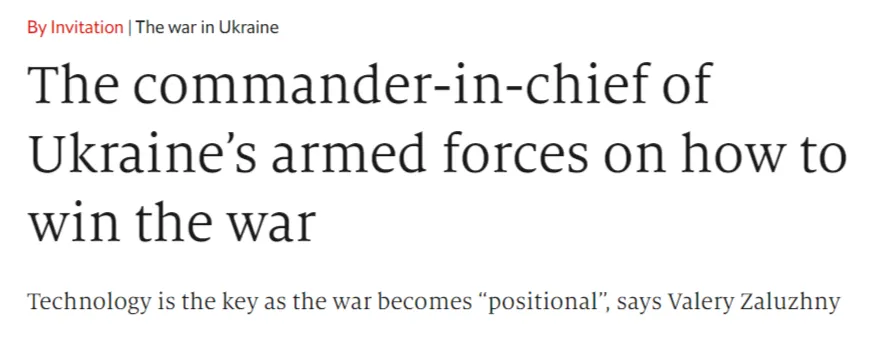
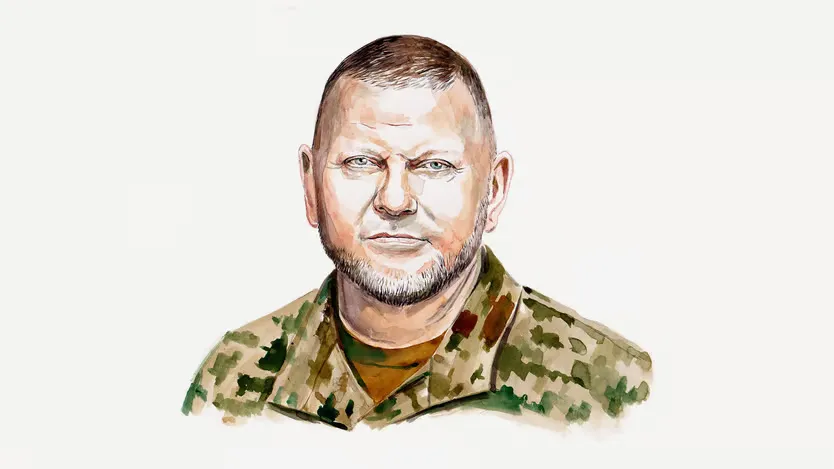
He makes some very interesting observations, not to mention one or two startling admissions, regarding the war.
The main slant of the article is diagnostic; it’s an attempt to find meaningful ways to reorient the AFU towards a winning direction, with the implied admission that this is not the direction they’re currently facing.
It presents a rare opportunity for us to get directly into the gears of the mastermind himself, rather than second and third hand info about what Ukraine’s high command may or may not be thinking.
He begins with this proposition:
Ukrainians have shown their willingness to lay down soul and body for their freedom. Ukraine not only halted an invasion by a far stronger enemy but liberated much of its territory. However, the war is now moving to a new stage: what we in the military call “positional” warfare of static and attritional fighting, as in the first world war, in contrast to the “manoeuvre” warfare of movement and speed. This will benefit Russia, allowing it to rebuild its military power, eventually threatening Ukraine’s armed forces and the state itself. What is the way out?
He goes on to intimate that beyond the bare essentials like shells and missiles, Ukraine needs a few key systems to regain some imagined ‘initiative’ against Russia. The primary one he starts with is airpower capabilities—to wit: F-16s.
“Control of the skies is essential to large-scale ground operations.”
That’s true, so far. As a note, as of this writing, there are new, unverified reports that the first batch of about ~5 F-16s have allegedly “arrived in Ukraine.”1 I’m very skeptical of this, but it’s worth mentioning to make the next point.
A different Ukrainian official recently espoused the view that 120-150 F-16s would allow Ukraine to “establish air dominance/superiority.”
These are bizarre and warped claims. Not only does Ukraine not have the infrastructural capability to even support or house that many F-16s, the base premise is absurd to begin with.
There appears to be a strange foundational notion amongst UA supporters that every aspect of the Ukrainian armed forces are “pound for pound” better than their Russian counterparts/equivalent. So the logic invariably follows that Ukraine only needs a fraction of a given category of systems in order to dominate Russia in that particular category.
For instance take tanks. We know Russia now produces anywhere between 800-1600 tanks per year, and still has thousands upon thousands of them left. Yet the deluded narrative continues to be that just a hundred or two “advanced NATO” tanks like Abrams or Leopards will somehow change the game and immediately neutralize the Russian advantage.
What if I were to tell you that even if Ukraine had 1000 Abrams/Leopards and Russia had only 500 legacy Soviet tanks, Russia would still win the tank battle (and the war for that matter)?
This basic reality is rooted in the following facts:
the actual effectiveness of main battle tanks on each side are marginal in advantage over one or the other. Thus it’s not the tank itself that matters, it’s the ecosystem in which the tank functions as part of a well-oiled military machine.
the Russian army has a far greater superiority and advantage in various essential integrative systems, networks, doctrines, logistics, local/tactical ISR, etc., which gives their tank forces a multiplier advantage on the ground even if they were “outnumbered” or “outgunned” by “superior” NATO armor. Recall the lone Russian T-80 that devastated the entire Ukrainian column (which had several tanks in it), as an example.
The most ignored fact of all: Russian tankers and troops in general are simply better. Better trained, better led, better morale, and have better awareness around them due to the above #2.
A quick clarification on point #1:
So many pundits and “experts” waste their time splitting hairs over every little system.
“Omg, the Leopard 1A5 has an EMES-18 fire control, it’s got 5 more pixels in resolution acuity over the T-72’s PNM-T thermals! That definitely means 1 Leopard can destroy 20 T-72s on its own!”
The harsh truth is that the various differences in modern systems of this sort are usually extremely marginal. A tank with Gen 1 thermals will easily destroy a tank with Gen 3 ones if he happens to spot him first, particularly if the first tank has a far more integrated ecosystem around him which enables him to have a better sense of surroundings and awareness of the flow of battle in general. The same goes for every other system.
The argument for airpower is the same. Why would 100-150 F-16s somehow dominate the over 1000+ fighter jets that Russia has? Who in their right mind can possibly think a single F-16 has a force multiplier of x10 against Russian jets?
The cold hard truth is this:
If Ukraine had 1,000 F-16s and Russia had only 250 of its own best fighter jets, Russia would likely still win the air war.
That’s because Russia has all the advantages in theater which augment your airpower. For instance:
AWACS integration, giving the jets far greater sight and ability to fly dark with radars off, making them far more ‘invisible’ from a distance (direct radiation onto a receiving craft is 3-4x more powerful than reflective radiation coming from your own radar bouncing waves from the ‘target’).
A vast multitude of integrated ground AD systems which give Russia “eyes” to the entire theater of operations, while Ukraine has comparatively limited and spotty vision due to their completely inferior (quantitatively and qualitatively) systems.
Once again: Russian pilots are far better. They have better training, better flight schools, far more flighthours, better morale, know their systems better (as opposed to flying a brand new F-16 you just learned last month), better coordination, and everything in between.
Some will say Ukraine has access to NATO AWACS too, except they can’t reach into the hottest areas. From the Polish border to Donbass is 1200km+ while AWACS radars top out at 400-600km, depending on object size and altitude.
So, forget the canard that giving Ukraine planes will somehow aid in the air war. It will do no such thing—the only use the planes can possibly have is for lobbing munitions from afar, like JDAMS and Storm Shadows. And sure that can help—though it won’t be a “game changer” of any sort, Ukraine will still lose handily—but call it what it is. Instead of lying about airpower, Zaluzhny and co. should just say we need these planes to launch munitions or to use them in defensive roles in shooting down incoming Russian cruise missile attacks. But of course, the point of the lie is to ‘sell’ a fantasy to the Western audience. They need to inspire hope and wonder by giving gullible Western publics some Hollywood vision of their majestic American F-16s blasting those Commie Bogeys out of the skies, just like Top Gun! Oorah!
The fact is, it’s Russia that has the qualitative edge, and the pound for pound edge. Want proof? It’s Zelensky himself who claimed the AFU had 1 million men total a while back, while Russia started the entire SMO with only about 70k men. The entire time Russia has been fighting vastly outnumbered in Ukraine, yet dealing them anywhere between 5:1 and 10:1 casualty disparities, in Russia’s favor.
That’s why no amount of Western aid can help Ukraine. If the U.S. gave them 1000 HIMARS launchers and the entire stockpile of 5,000+ Abrams tanks, Ukraine would still lose—it would just take longer.
I believe the perception comes from the fact that Ukraine appears at times to carry outsize power—but it’s misleading. For instance, having no naval fleet they’re perceived as having pushed out or “nullified” Russia’s “entire massive Black Sea fleet.” A tiny fleet of 20-40 HIMARS trucks (counting Mars IIs and M270s) has likewise “wreaked havoc on Russian infrastructure!”
But what this ignores is the fact that Russia is still fighting this conflict with one hand behind its back. This fact is no clearer than today when we are witness to how a “real war” can be fought, by choice, in the Israeli scenario. Note how Israel deliberately destroys all Gaza’s hospitals and infrastructure in order to entirely cripple the enemy.
One must realize that Ukraine still has functioning infrastructure allowing their soldiers to be evac’d and patched up, have food and clothes and shelter, amongst other things. Imagine if Russia went fully “no holds barred” and destroyed all Ukrainian infrastructure. The AFU would collapse because they would have nothing left to even manage their vast losses. Similarly, Russia could force all social/societal infrastructure to collapse by striking cities as Israel does, which would crater the AFU’s entire “back end,” leaving them logistically paralyzed.
Thus, the point is Ukraine is able to manage the “perception” of having some outsize effects on select categories of engagement, but it’s an illusory one only because Russia has chosen to fight a gentleman’s war. And even then, as I said, Russia has inflicted disproportionate losses while fighting outnumbered for a majority of the time.
That may be a bit discursive, but it was important to establish a base grounding in why some of Zaluzhny’s propositions are rooted in fantastical delusion.
Getting back to his article, he next makes some strange and impractical requests:

So he wants drones that shoot nets to stop Russian drones. Then he asks for signal-emitting decoys to “attract Russian glide bombs.” That doesn’t even make sense. Russian glide bombs are GPS/Glonass powered—there’s no “decoy” that can “attract” them. I can only assume he’s not referring to the famous Fab-500M62 UMPK but rather the KAB style bombs which are laser guided, and some sort of laser emitter can theoretically throw them off—but they’re not really glide bombs.
Next he asks for more EW systems while admitting Russia has the EW edge in the war. That’s all fairly straightforward so we’ll move on to the next request:
The third task is counter-battery fire: defeating enemy artillery. In this war, as in most past wars, artillery, rocket and missile fire make up 60-80% of all the military tasks. When we first received Western guns last year, we were quite successful at locating and striking Russian artillery. But the effectiveness of weapons such as Excalibur, a gps-guided American shell, has declined dramatically owing to improved Russian electronic warfare.
Now that’s a major admission. Straight from the horse’s mouth itself we see that even Excalibur shells are being jammed out. Recall all those Dr. Philip Karber West Point talks stating specifically this, which some scoffed at.
And it’s true, I don’t see many Excalibur hits anymore from released AFU videos. I had chalked it up to just low supply of the expensive shell, but apparently they’ve been made near useless by Russian jamming—as has the JDAM.
That’s why I’ve said in the past Russia’s Krasnopol shell is superior: it has both GPS/Glonass and laser-guided modes, though its range does leave much to be desired compared to Excalibur, but it makes up for it with versatility.
Meanwhile, Russia’s own counter-battery fire has improved. This is largely thanks to its use of Lancet loitering munitions, which work alongside reconnaissance drones, and its increasing production of precision-guided shells that can be aimed by ground spotters. Despite the dismissive view of some military analysts, we cannot belittle the effectiveness of Russian weapons and intelligence in this regard.
Well, well, well. Not only does he appear to reference the very Krasnopol here, but even gives some deserved dues.
For now, we have managed to achieve parity with Russia through a smaller quantity of more accurate firepower. But this may not last. We need to build up our local gps fields—using ground-based antennas rather than just satellites—to make our precision-guided shells more accurate in the face of Russian jamming. We need to make greater use of kamikaze drones to strike Russian artillery. And we need our partners to send us better artillery-reconnaissance equipment that can locate Russian guns.
Of course he has to add a little puffery on top to help balance out the dangerous pessimism of praise toward Russian capabilities. How can his ‘smaller quantity’ systems be ‘more accurate’ when he just admitted that Excalibur shells are being jammed? Recall that he’s referring to counterbattery war here, so we’re talking about artillery and SPGs. What other system besides the Excalibur might he mean that’s given him this claimed ‘parity’? I assume HIMARS, which is the only thing Ukraine has been effectively using in the counterbattery role, but even that has drastically gone down recently, while Russia continues killing heaps of Ukrainian batteries each day.
The next request is another impractical whopper:
The fourth task is mine-breaching technology. We had limited and outdated equipment for this at the start of the war. But even Western supplies, such as Norwegian mine-clearing tanks and rocket-powered mine-clearing devices, have proved insufficient given the scale of Russian minefields, which stretch back 20km in places. When we do breach minefields, Russia quickly replenishes them by firing new mines from a distance.
Firstly he confirms what we’ve wrote about here for a long time: Russia’s remote mining (RAAM/FASCAM) capabilities which quickly replenish minefields by firing hundreds of them through specialized MLRS trucks like the ISDM Zemledeliye system:
(Video at link.)
Technology is the answer. We need radar-like sensors that use invisible pulses of light to detect mines in the ground and smoke-projection systems to conceal the activities of our de-mining units. We can use jet engines from decommissioned aircraft, water cannons or cluster munitions to breach mine barriers without digging into the ground. New types of tunnel excavators, such as a robot which uses plasma torches to bore tunnels, can also help.
Wait…what?!
Read the above again then ask yourself, how realistic does this all sound? Just picture the conversation:
Uncle Sam: “Sorry, Valery, the people are a bit tired of this whole charade, and the coffers have run dry.”
Zaluzhny: “No, no, trust me. We just need this one last small thing, then victory is ours, truly, I promise!”
Uncle Sam: “Sigh..what is it?”
Zaluzhny: “We just need special lasers to shoot mines in the ground, jet engines and water cannons to clear munitions…”
Uncle Sam: “…is that all?”
Zaluzhny: “…and, and…giant tunnel excavators, oh and robots as well, which use plasma boring torches to—”
Uncle Sam: “Get the hell out!”
I mean come on, folks. This is turning into patent parody for god’s sakes! Is there anyone sane in that country anymore?
Giant robots with plasma torches to bore tunnels? What the hell are you talking about, you’ve got 300k++ dead and a country that’s nearing collapse. This is really the stage we’re at? We’re scraping the bottom of the barrel here.
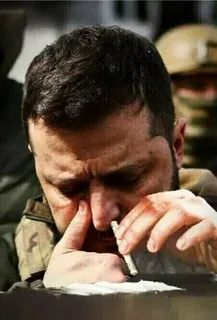
His final proposal is to help build up Ukrainian reserves:
My fifth and final priority is to build up our reserves. Russia has failed to capitalise on its hefty manpower advantage because Vladimir Putin is worried that a general mobilisation might spark a political crisis, and because Russia cannot train and equip enough people. However, our capacity to train reserves on our own territory is also limited. We cannot easily spare soldiers who are deployed to the front. Moreover, Russia can strike training centres. And there are gaps in our legislation that allow citizens to evade their responsibilities.
Here it seems that he’s talking about a pure advantage on a societal basis, i.e. total available manpower, rather than deployed manpower. He’s saying that Russia has much more “potential” manpower, but Putin is “too afraid” to call it up by way of mobilization. The inference is that if Putin ever did call them up, Ukraine would face an end game scenario.
The funniest—or saddest, for that matter—part is his solution to this problem. He calls it “combat internship”, but read what it actually entails:
We are trying to fix these problems. We are introducing a unified register of draftees, and we must expand the category of citizens who can be called up for training or mobilisation. We are also introducing a “combat internship”, which involves placing newly mobilised and trained personnel in experienced front-line units to prepare them.
Wait, so your solution is putting fresh untrained recruits into FRONTLINE COMBAT—isn’t that… the literal definition of “cannonfodder?”
You have to know how to read between the lines. He’s trying to jockey his words in such a way as to appeal to the Western audience he’s aiming at, without saying anything too ‘shocking’. What he’s basically said here is that we have a massive manpower problem on the front due to losses, so to alleviate it, we’re sending freshly mobilized, completely untrained troops into frontline combat positions (where they typically die within hours).
He ends with:
Russia should not be underestimated. It has suffered heavy losses and expended a lot of ammunition. But it will have superiority in weapons, equipment, missiles and ammunition for a considerable time. Its defence industry is increasing its output, despite unprecedented sanctions. Our nato partners are dramatically increasing their production capacity, too. But it takes at least a year to do this and, in some cases, such as aircraft and command-and-control systems, two years.
A positional war is a prolonged one that carries enormous risks to Ukraine’s armed forces and to its state. If Ukraine is to escape from that trap, we will need all these things: air superiority, much-improved electronic-warfare and counter-battery capabilities, new mine-breaching technology and the ability to mobilise and train more reserves. We also need to focus on modern command and control—so we can visualise the battlefield more effectively than Russia and make decisions more quickly—and on rationalising our logistics while disrupting Russia’s with longer-range missiles. New, innovative approaches can turn this war of position back into one of manoeuvre.
He thinks a few mine breachers and laser-robots can turn this war back into a maneuver one for Ukraine? Sorry, but that ship has sailed. The only time you ever had a “maneuver war” was when Russia had 120k total men in theater while you had 400-700k at the time of the Kharkov offensive. Once Russia reached manpower parity and collapsed the lines, your maneuver dreams were done for good.
(Much more, read it, I'm for breakfast.)
https://simplicius76.substack.com/p/zal ... -economist





